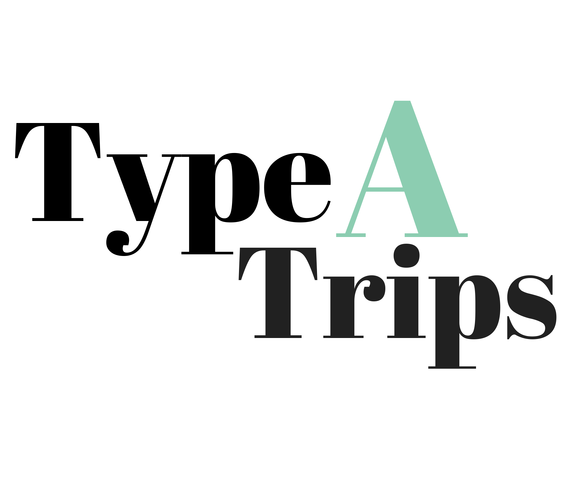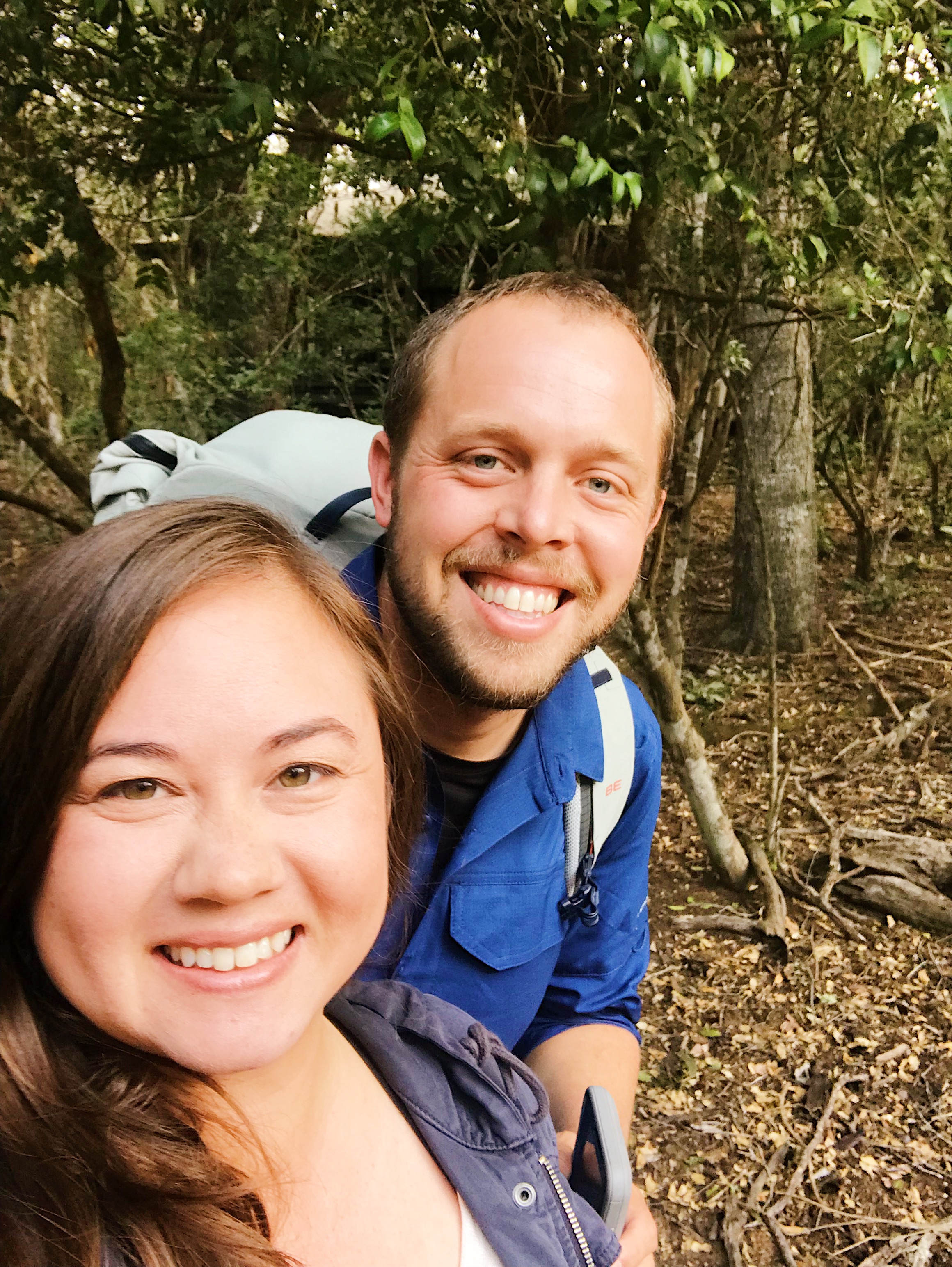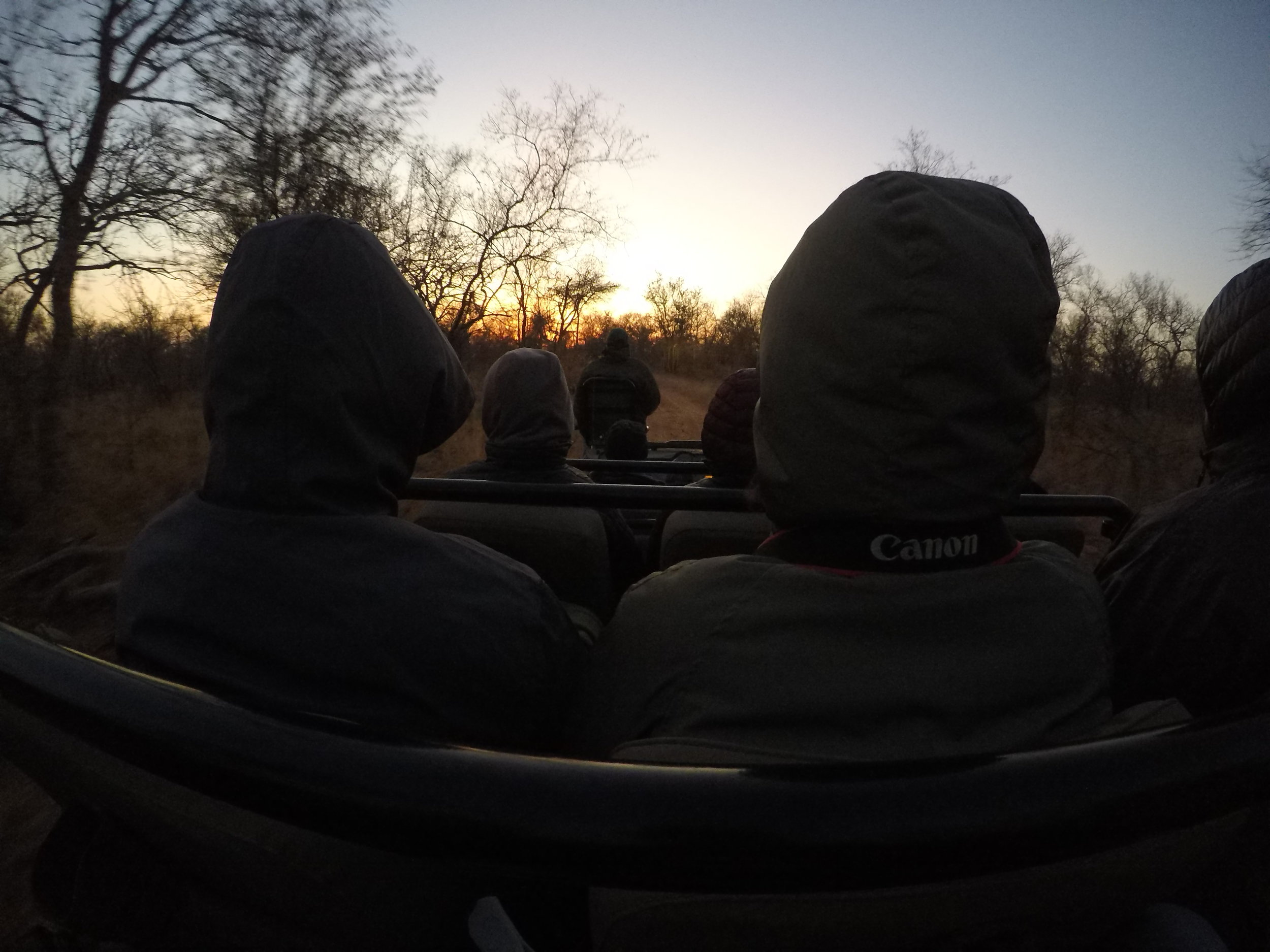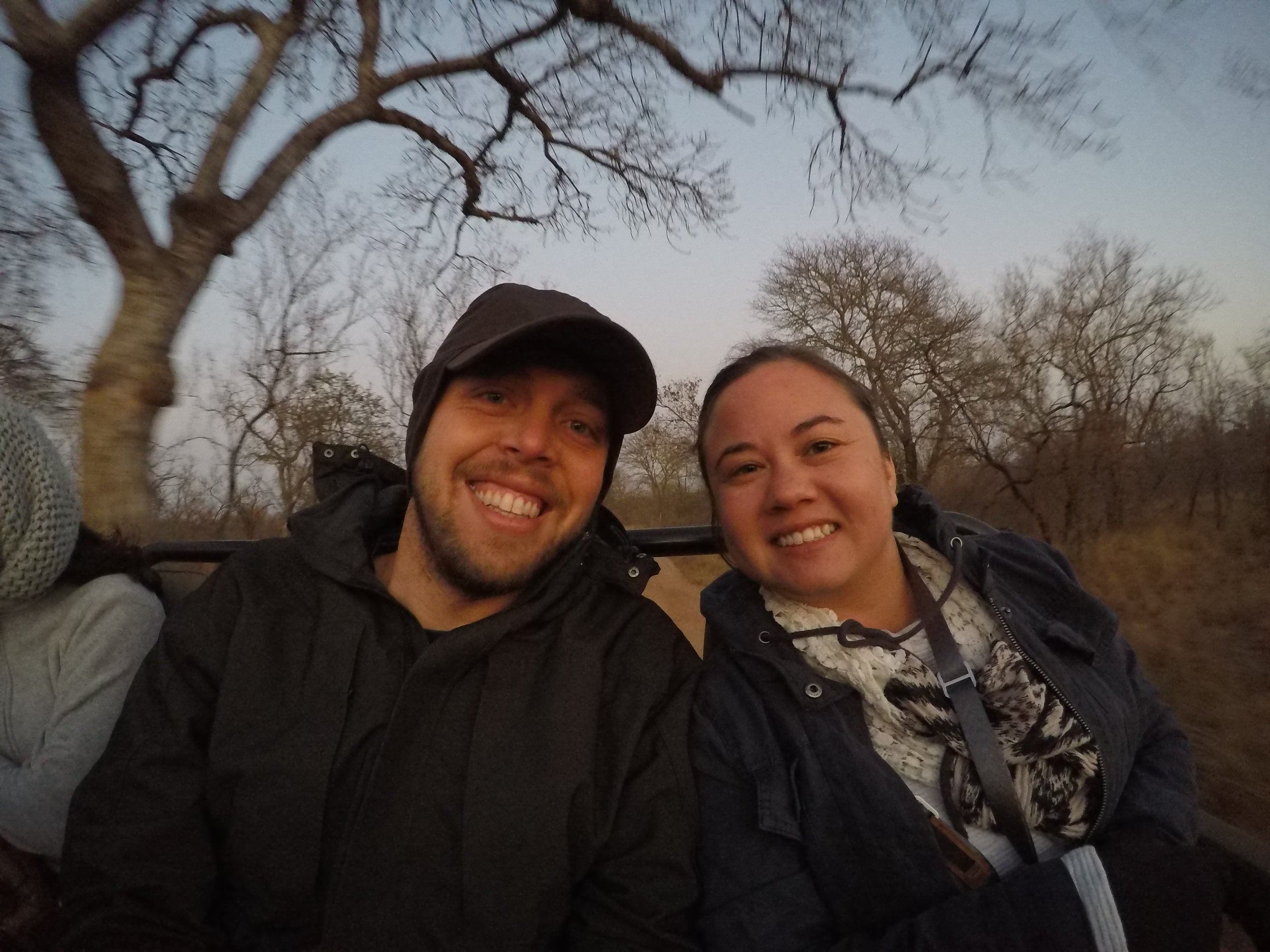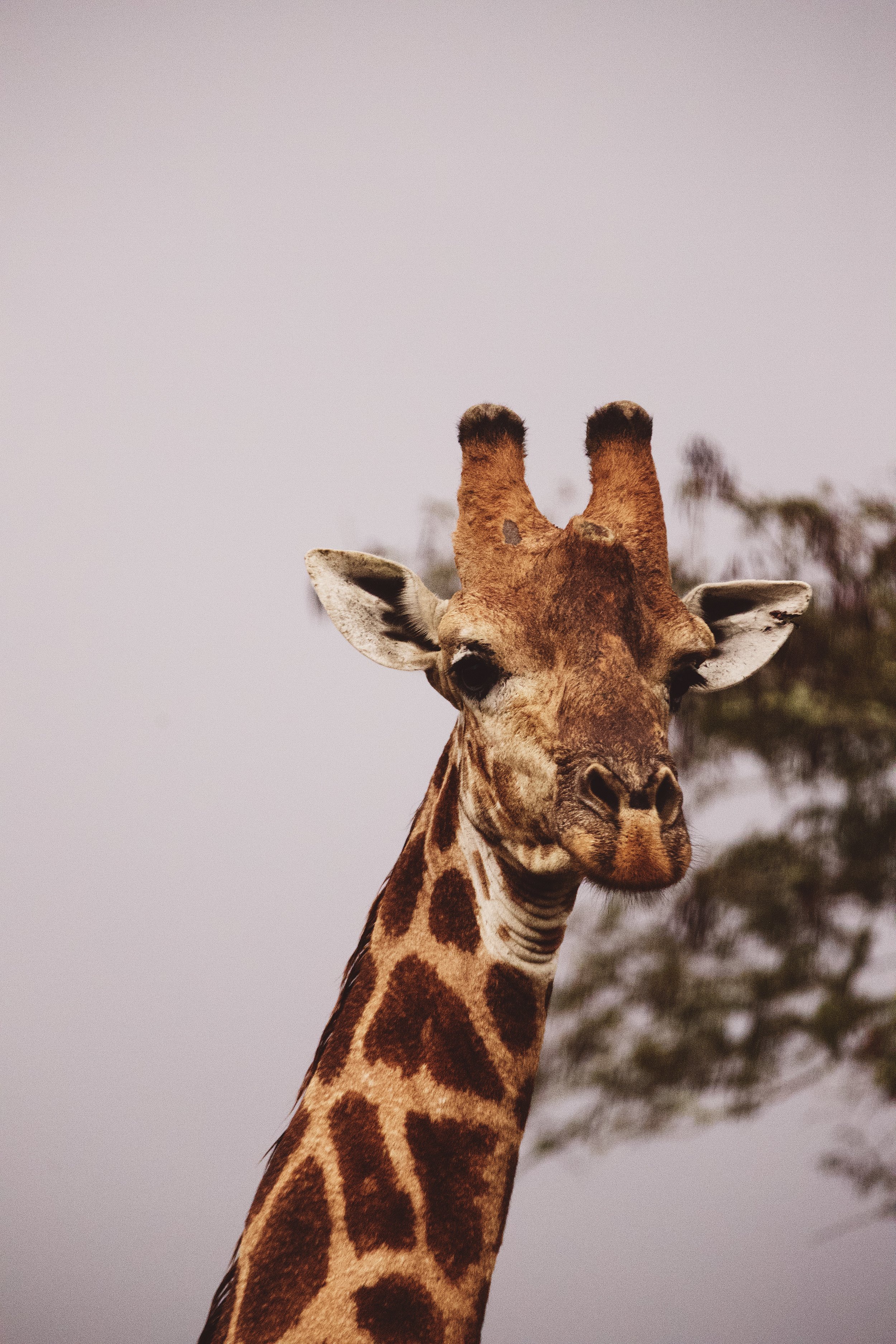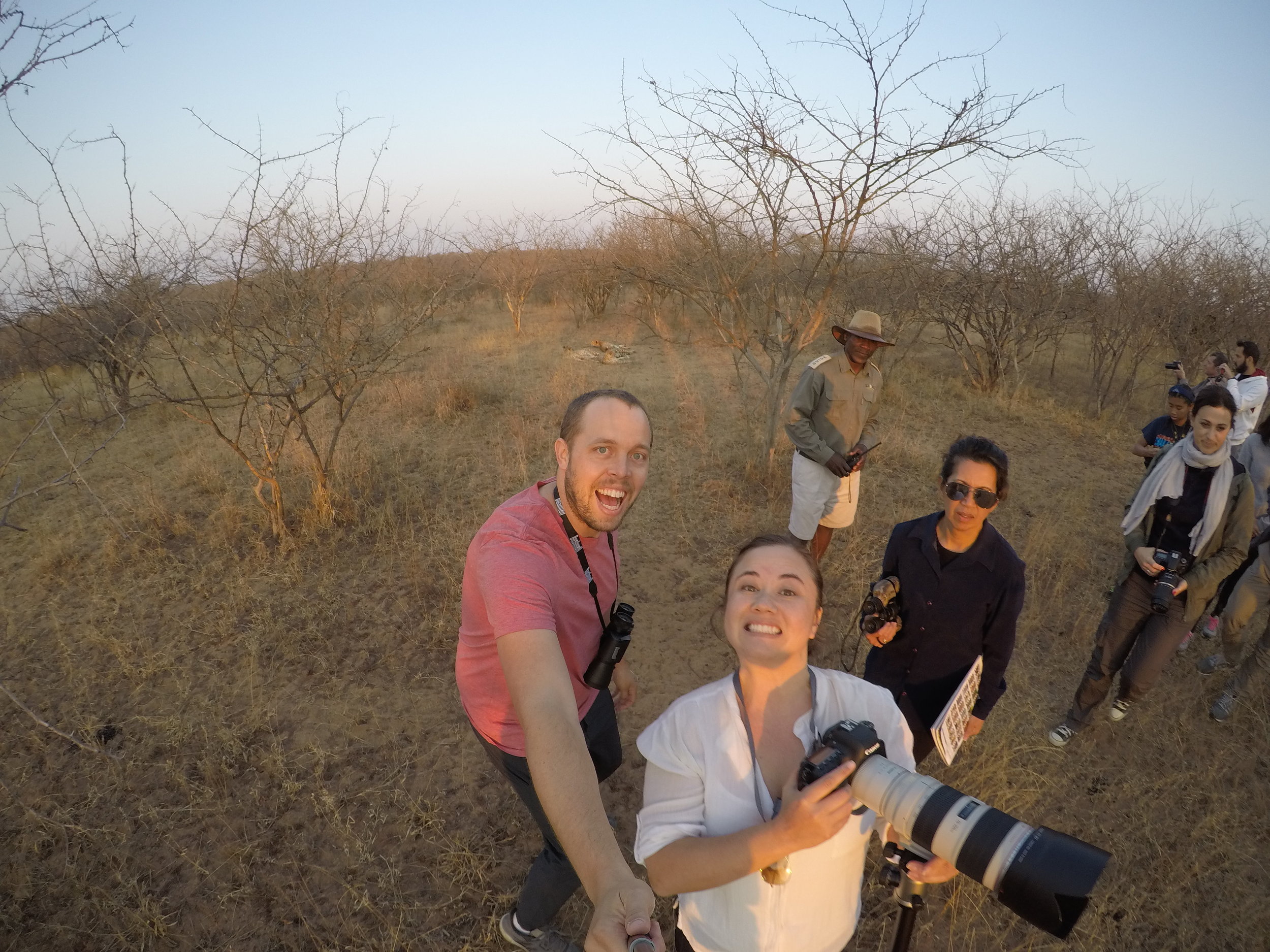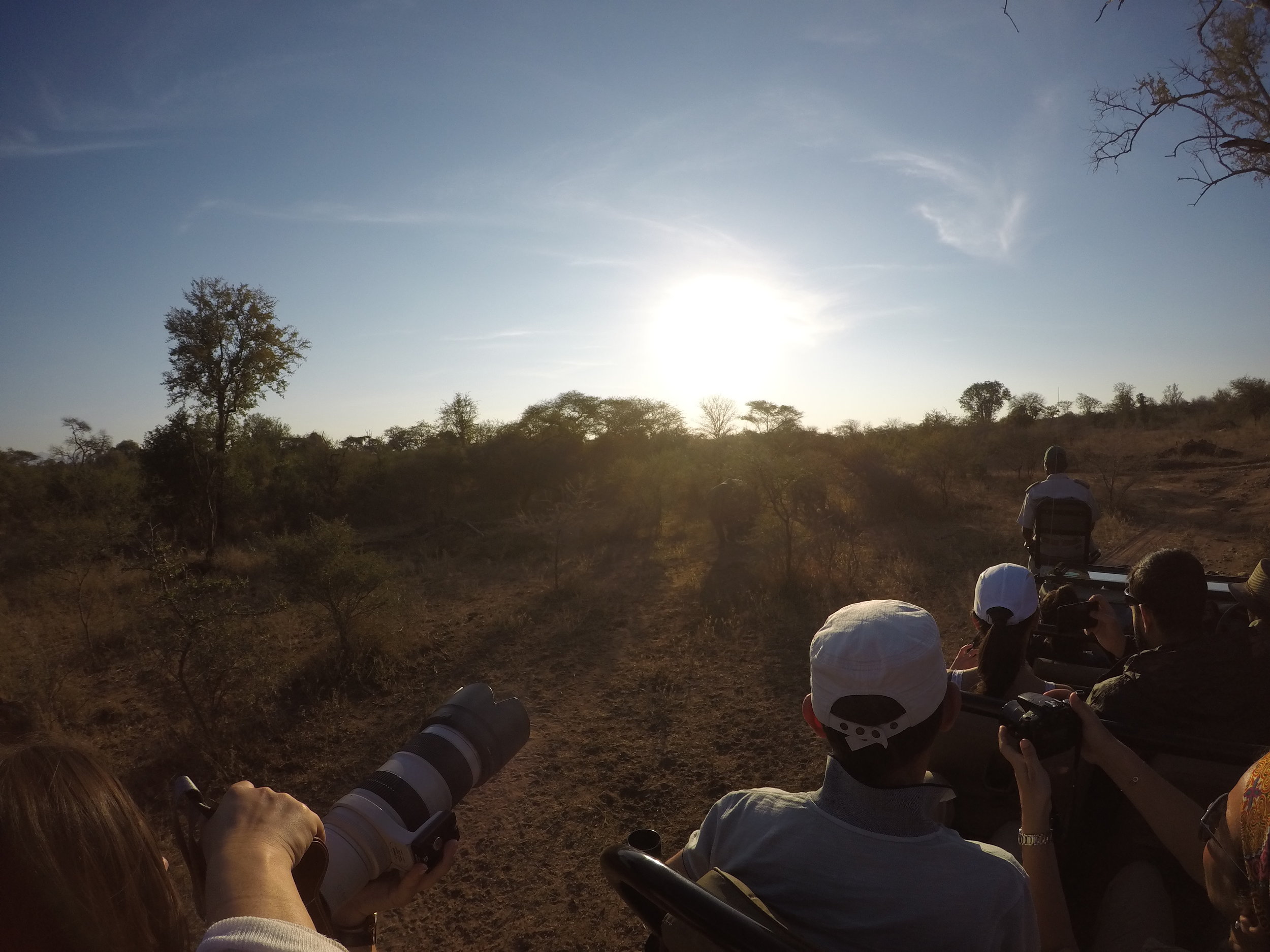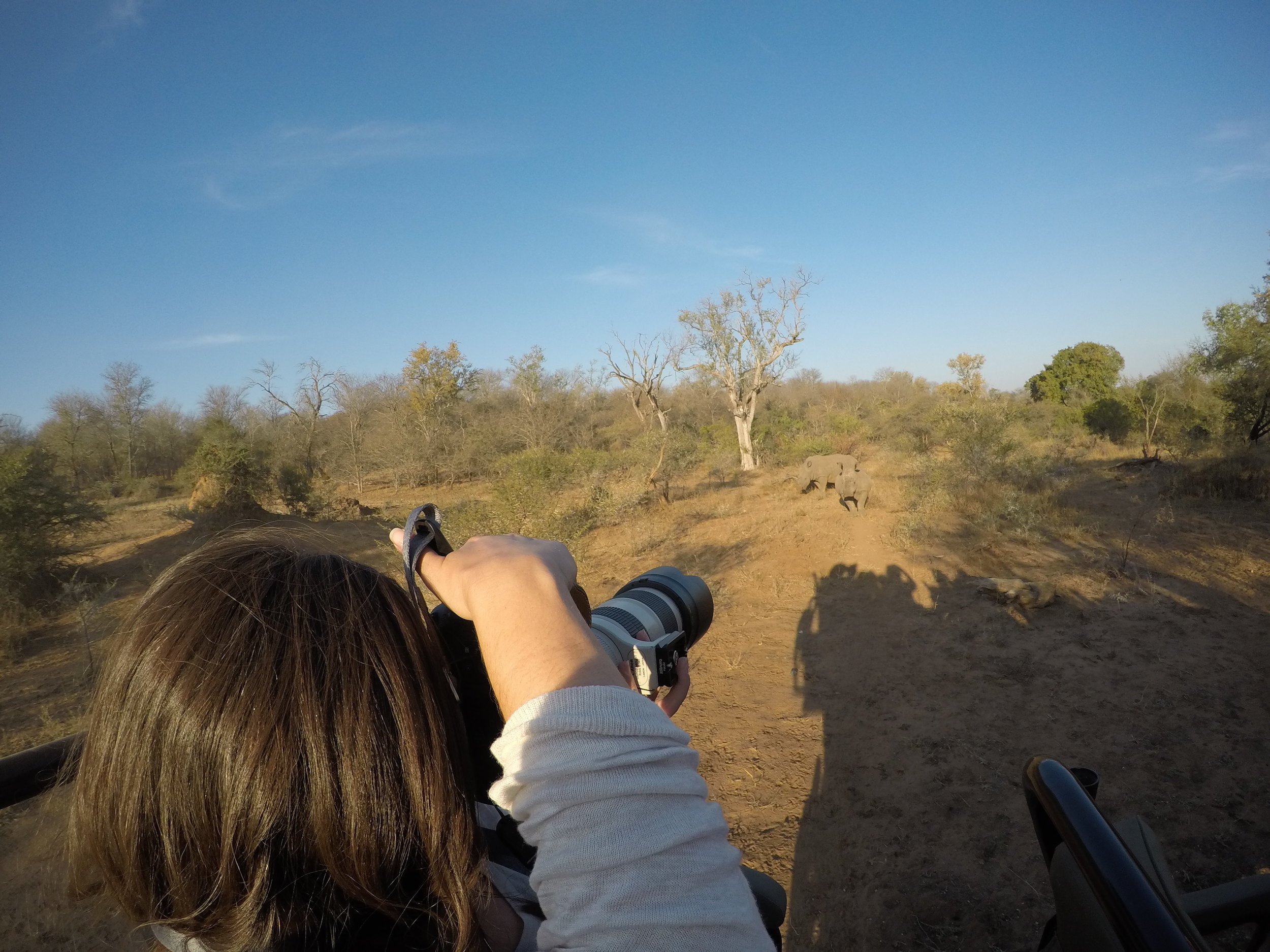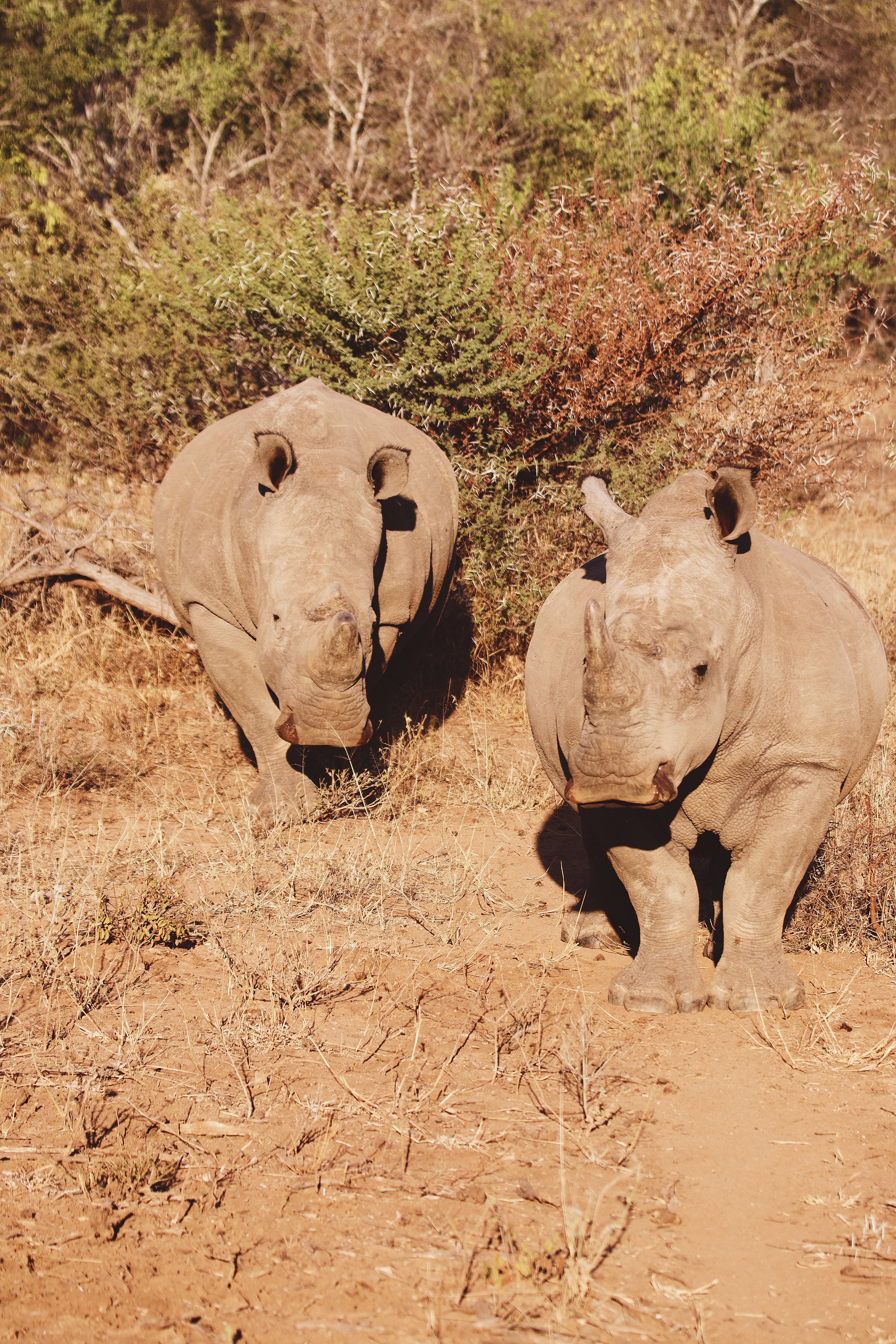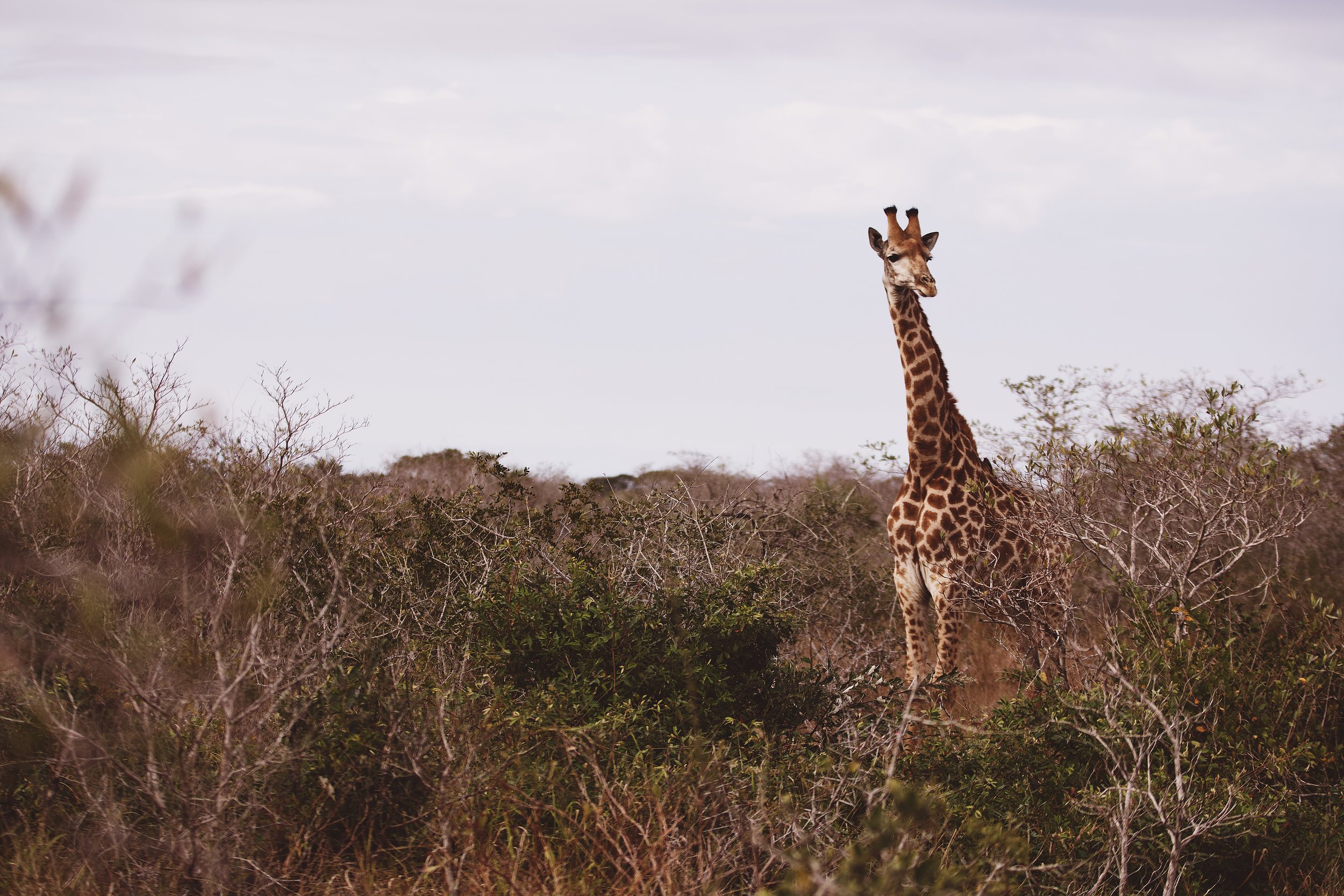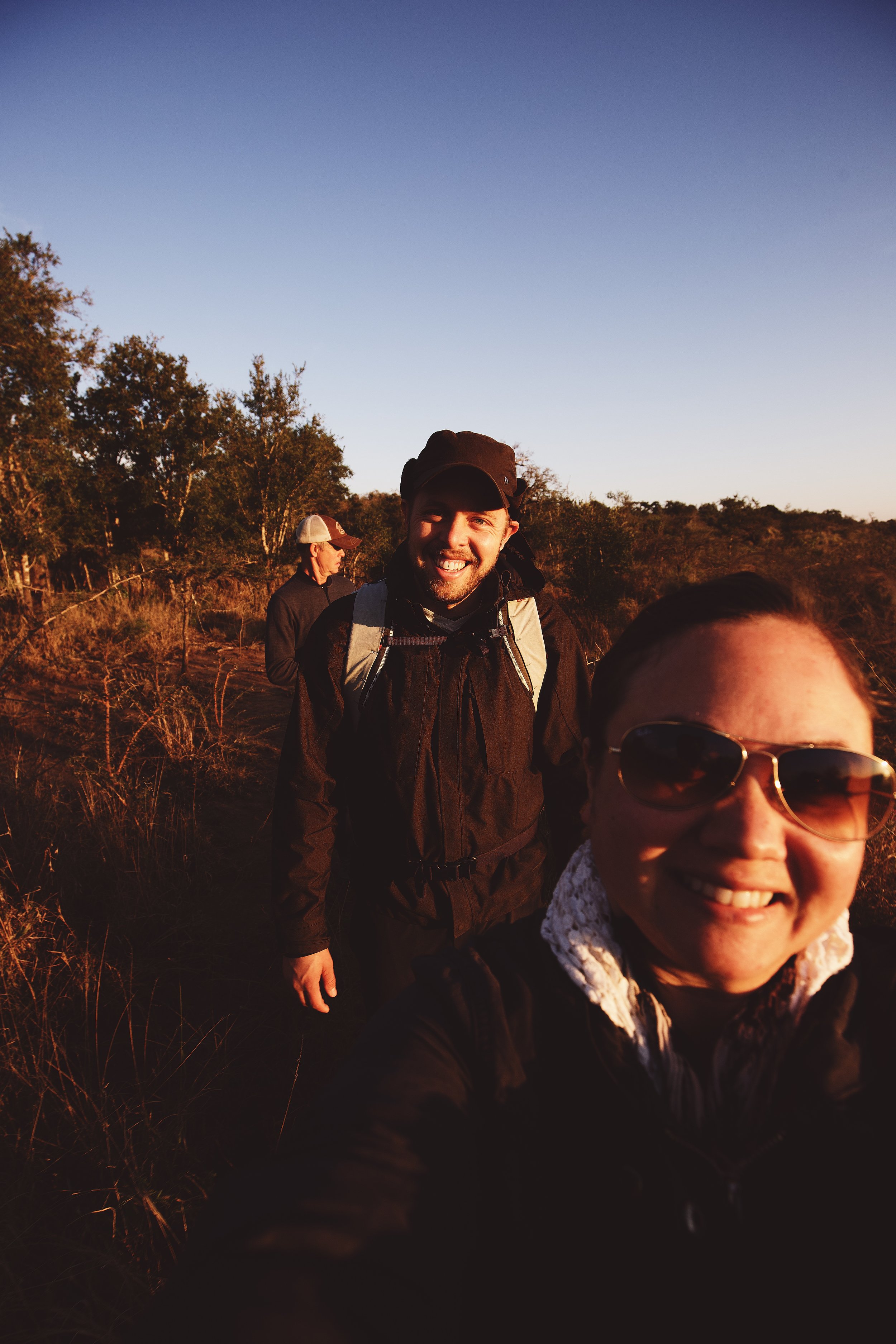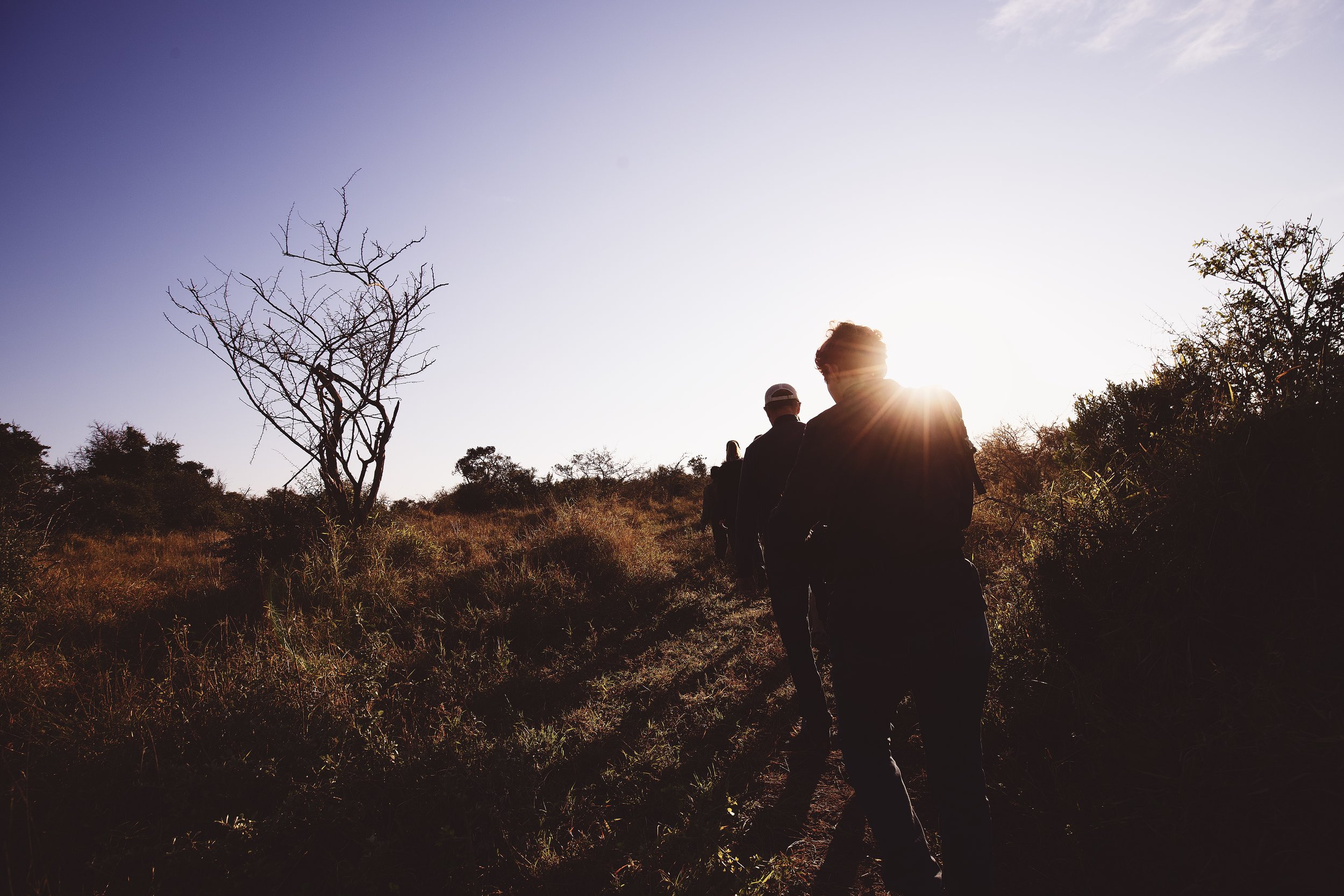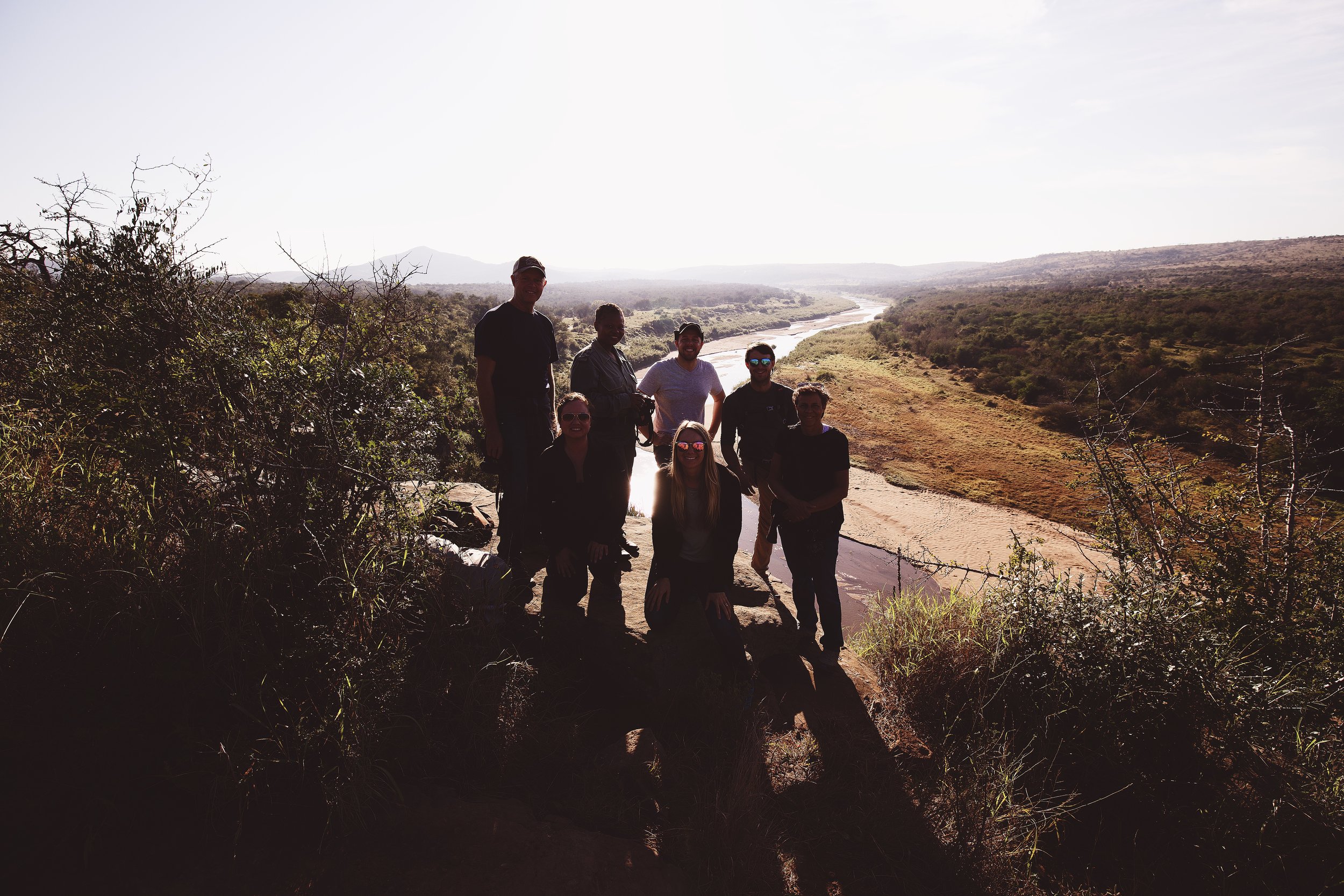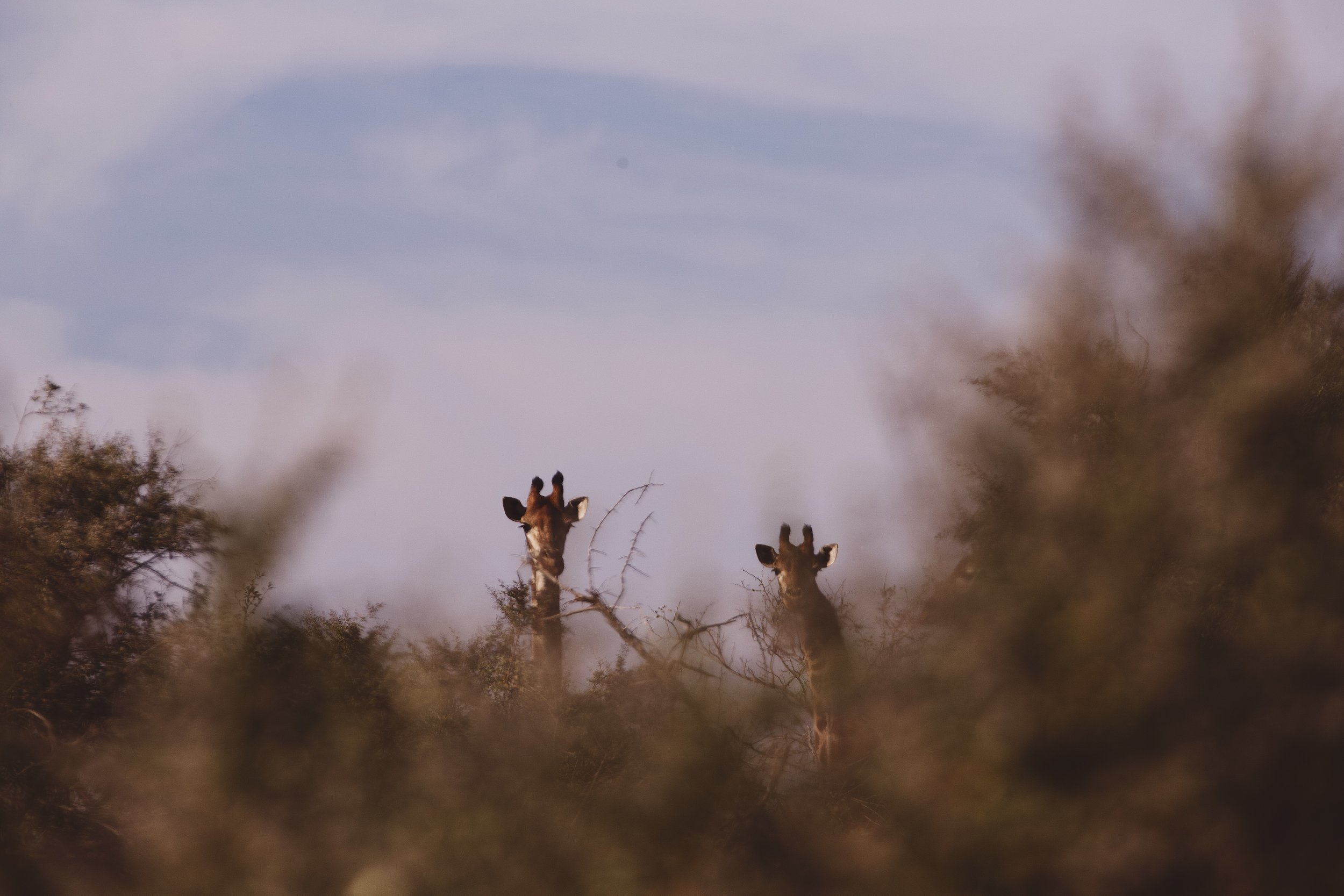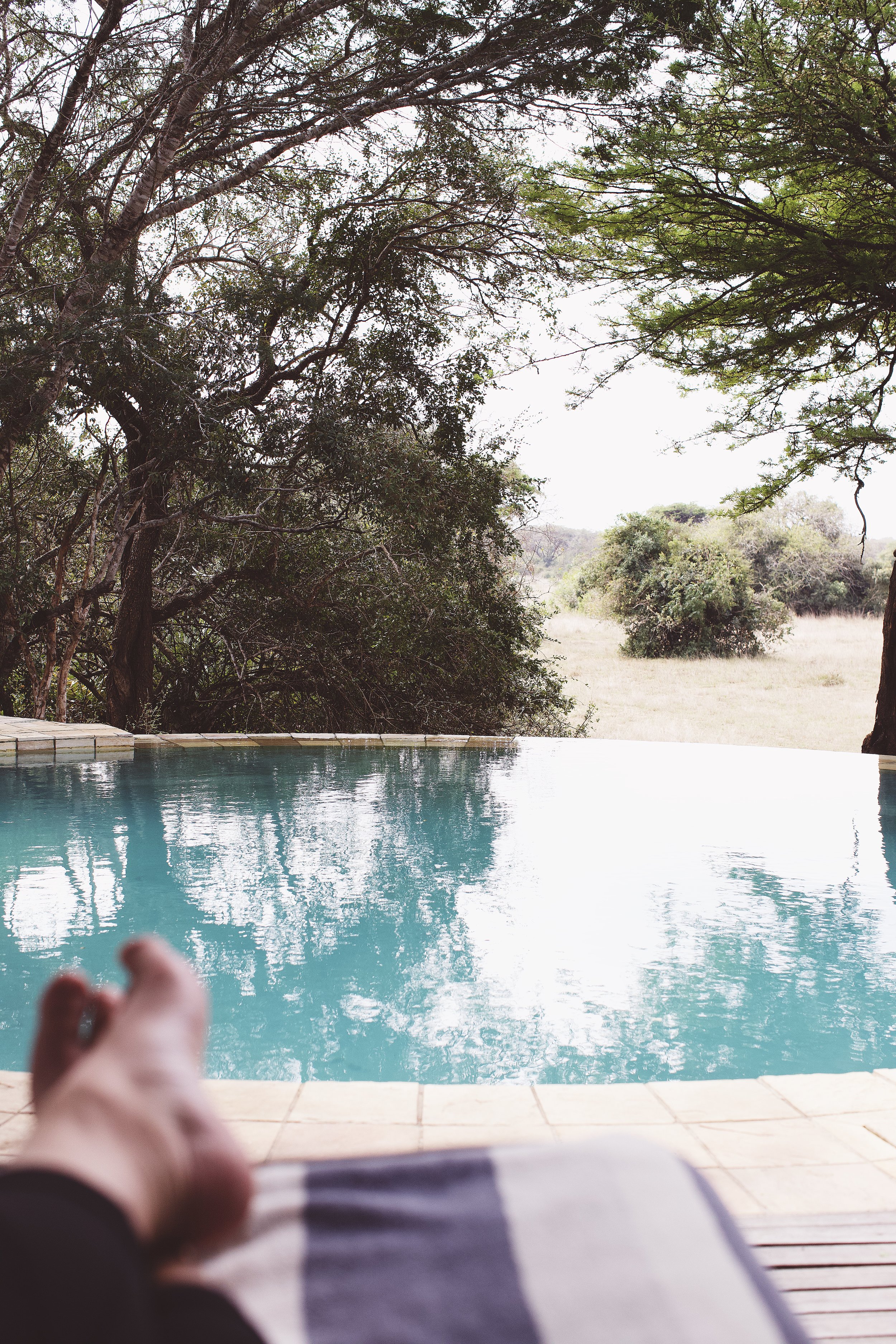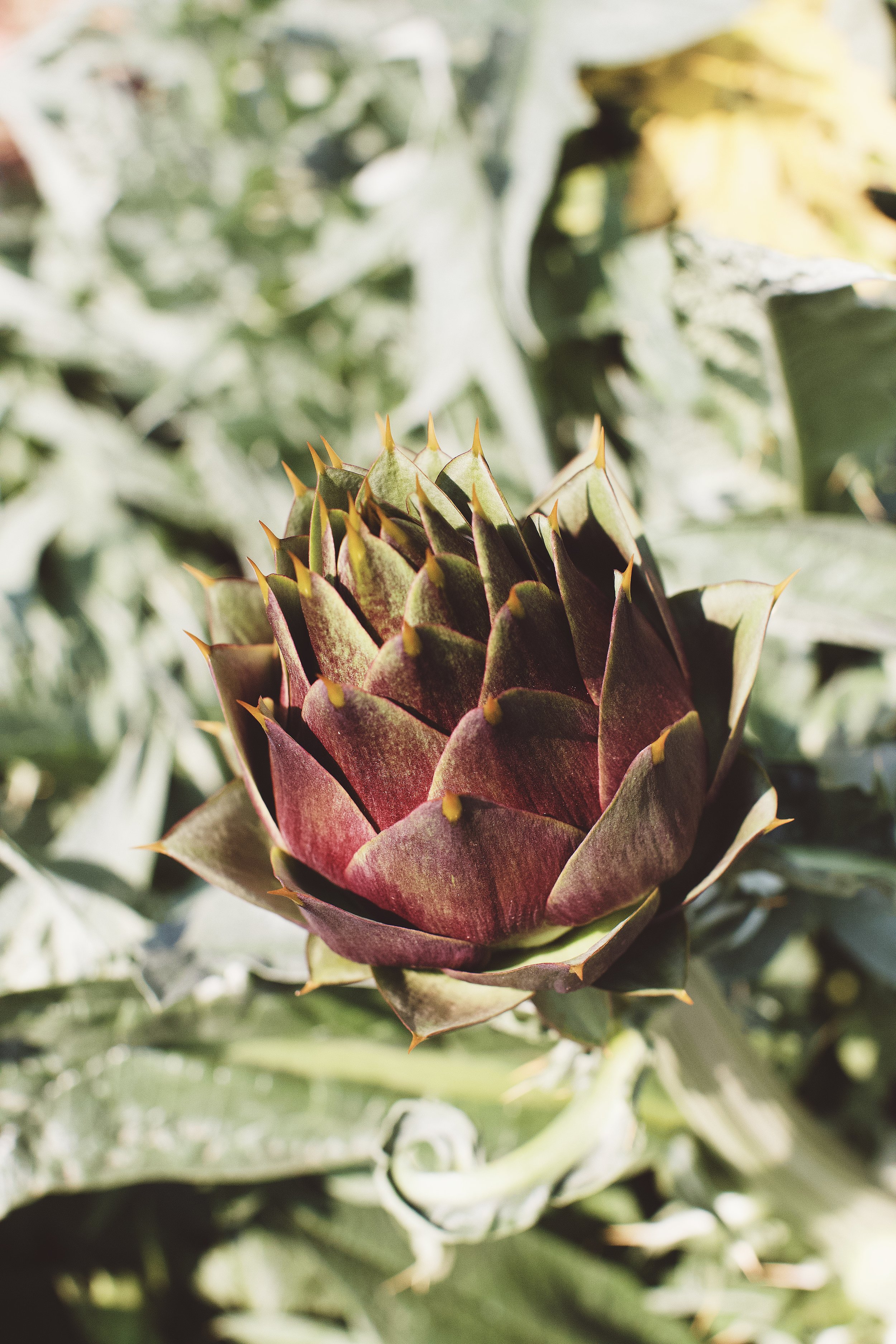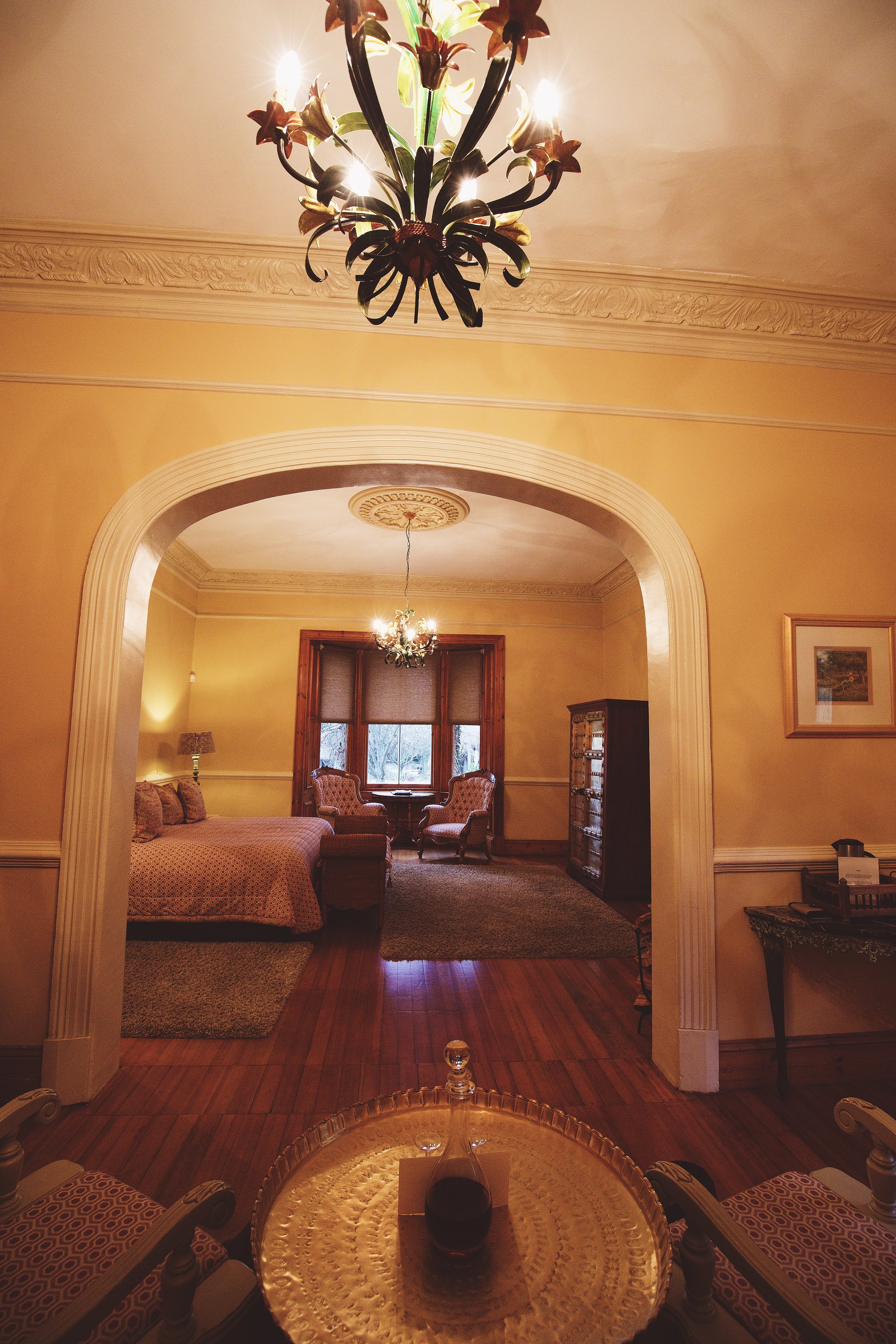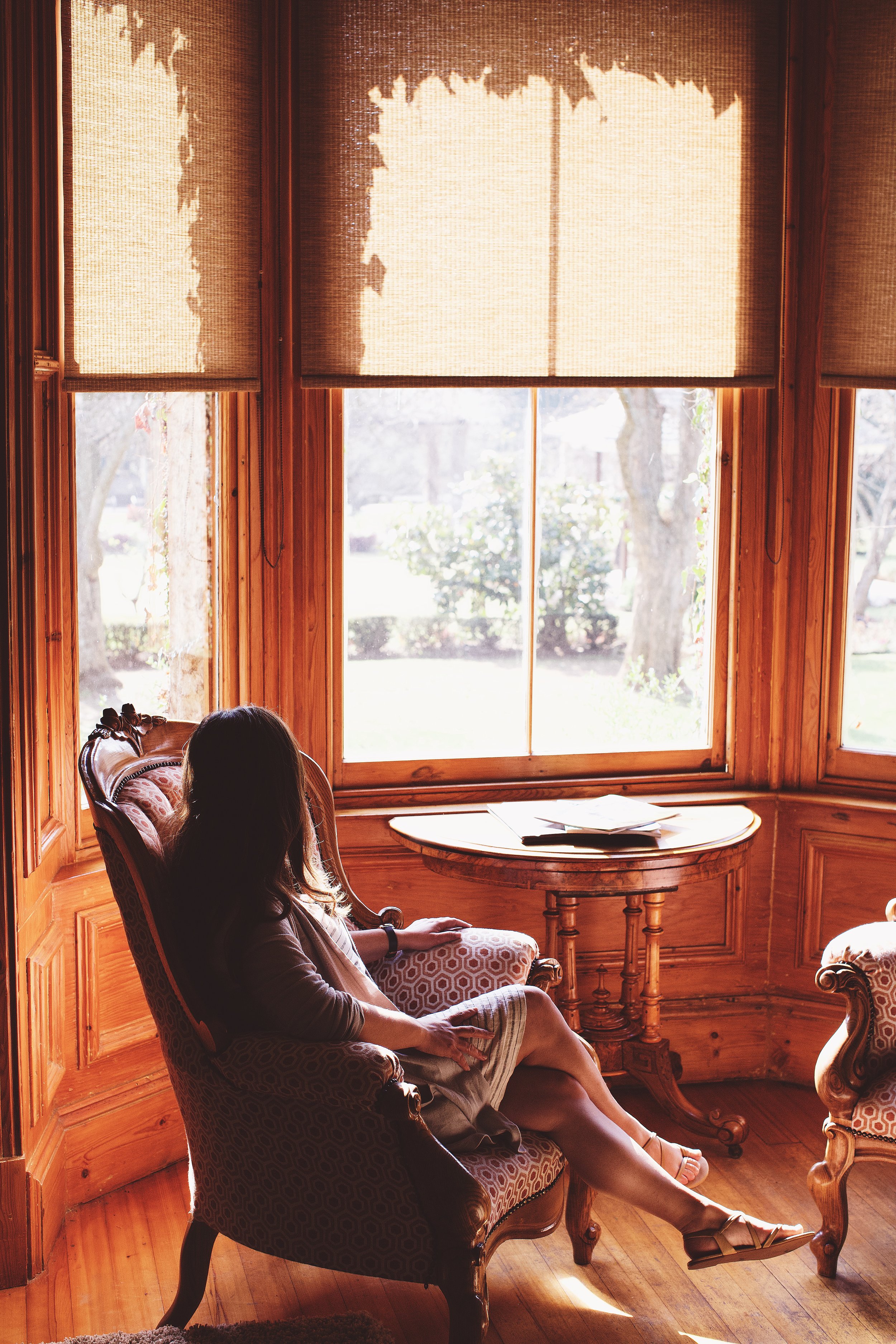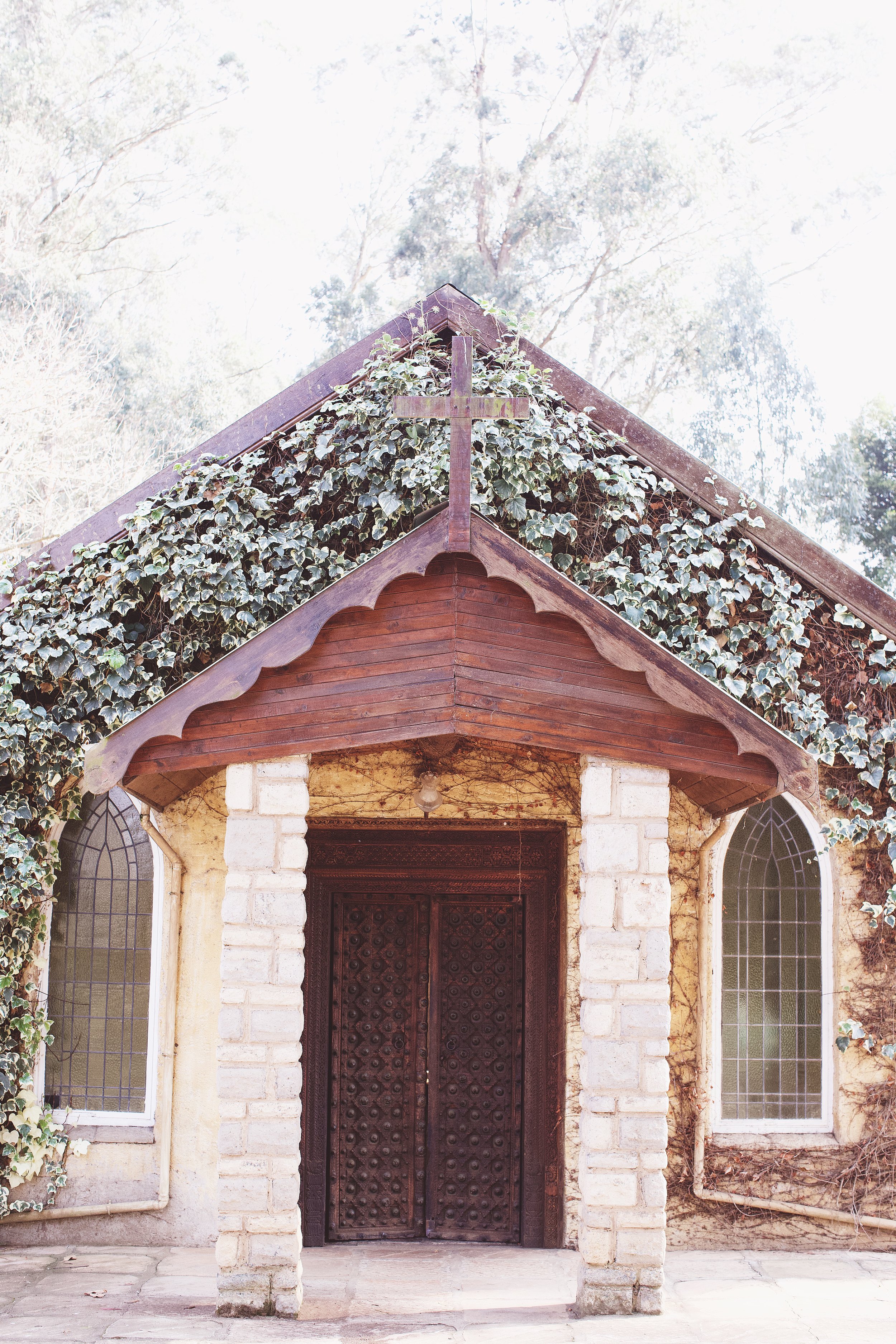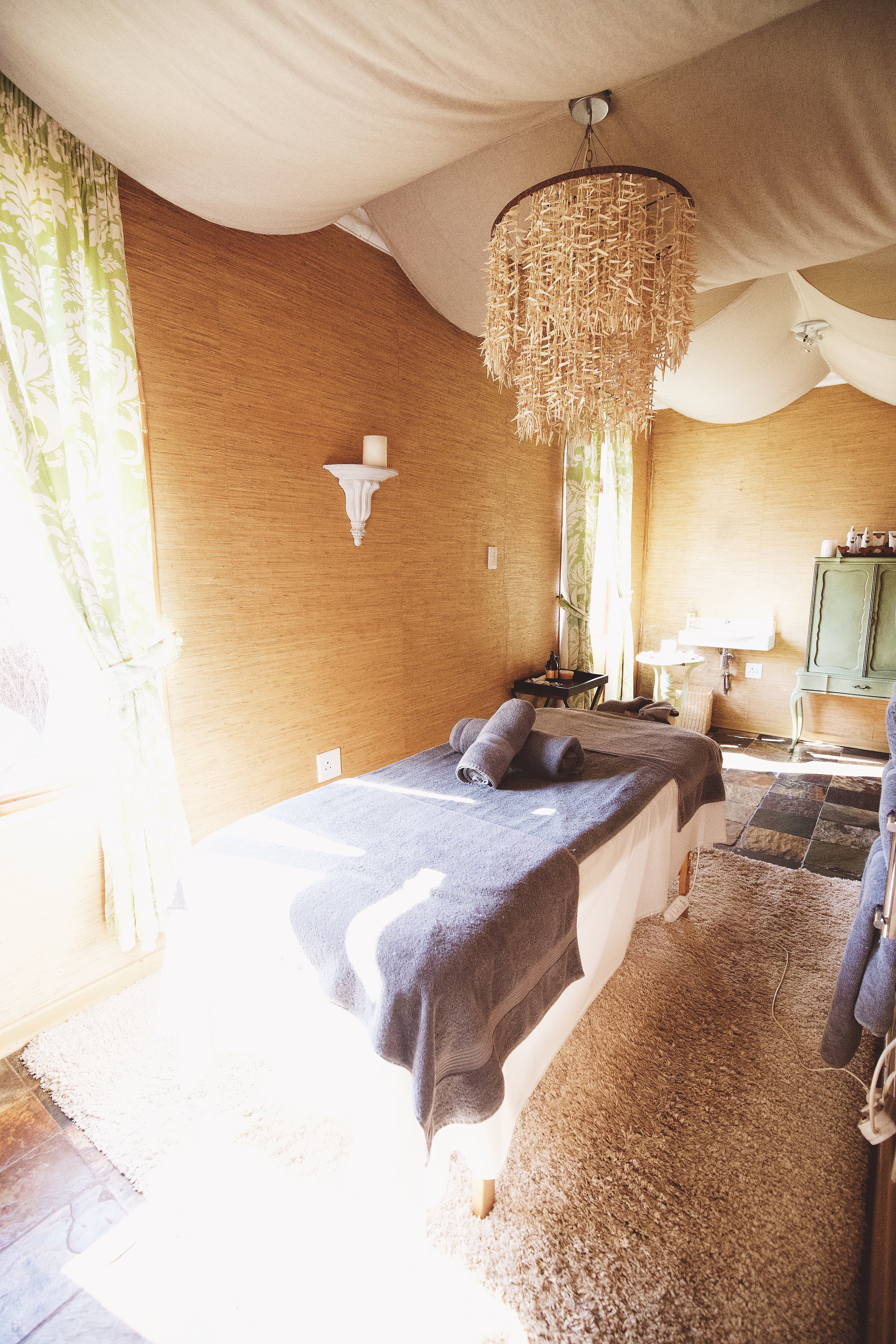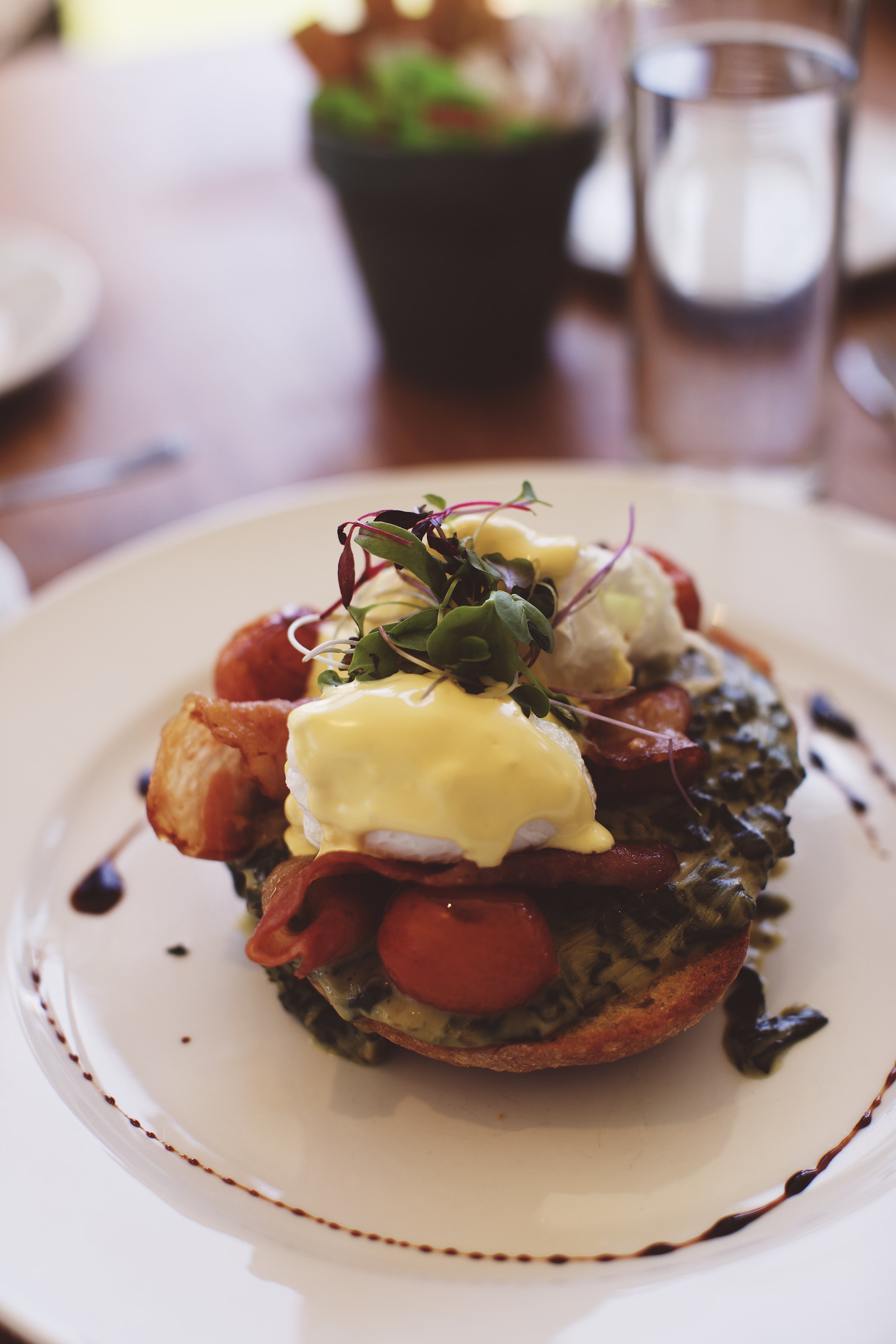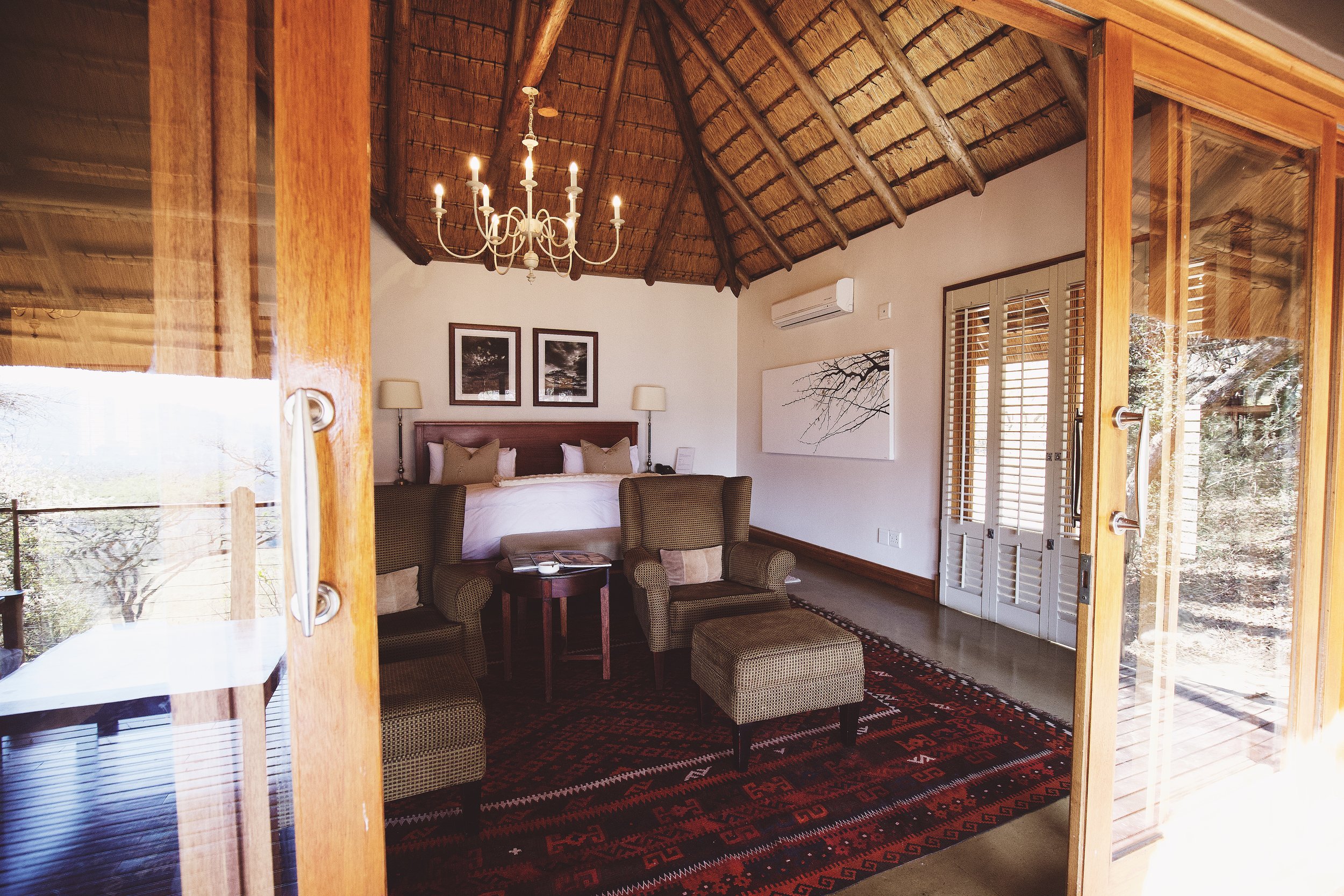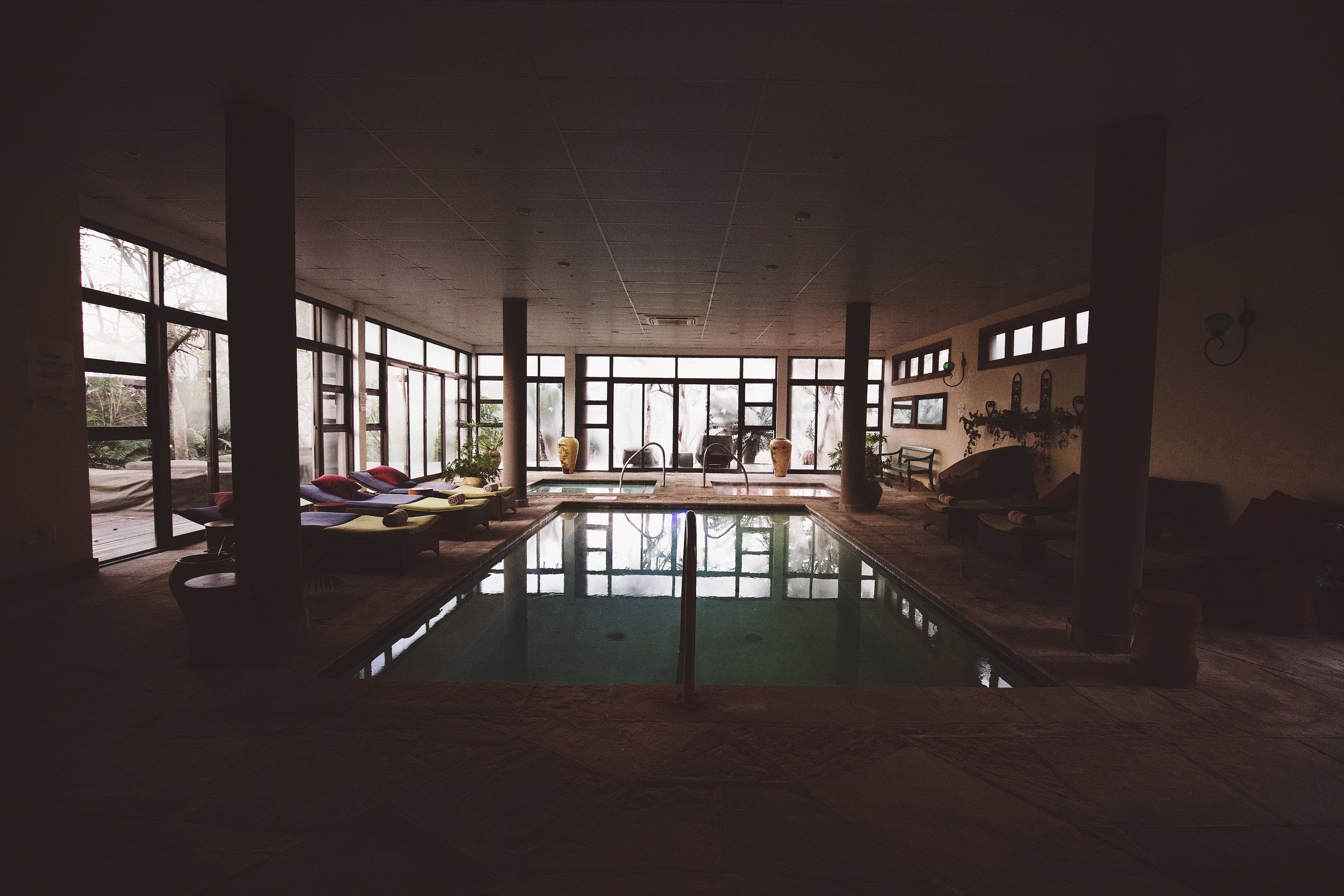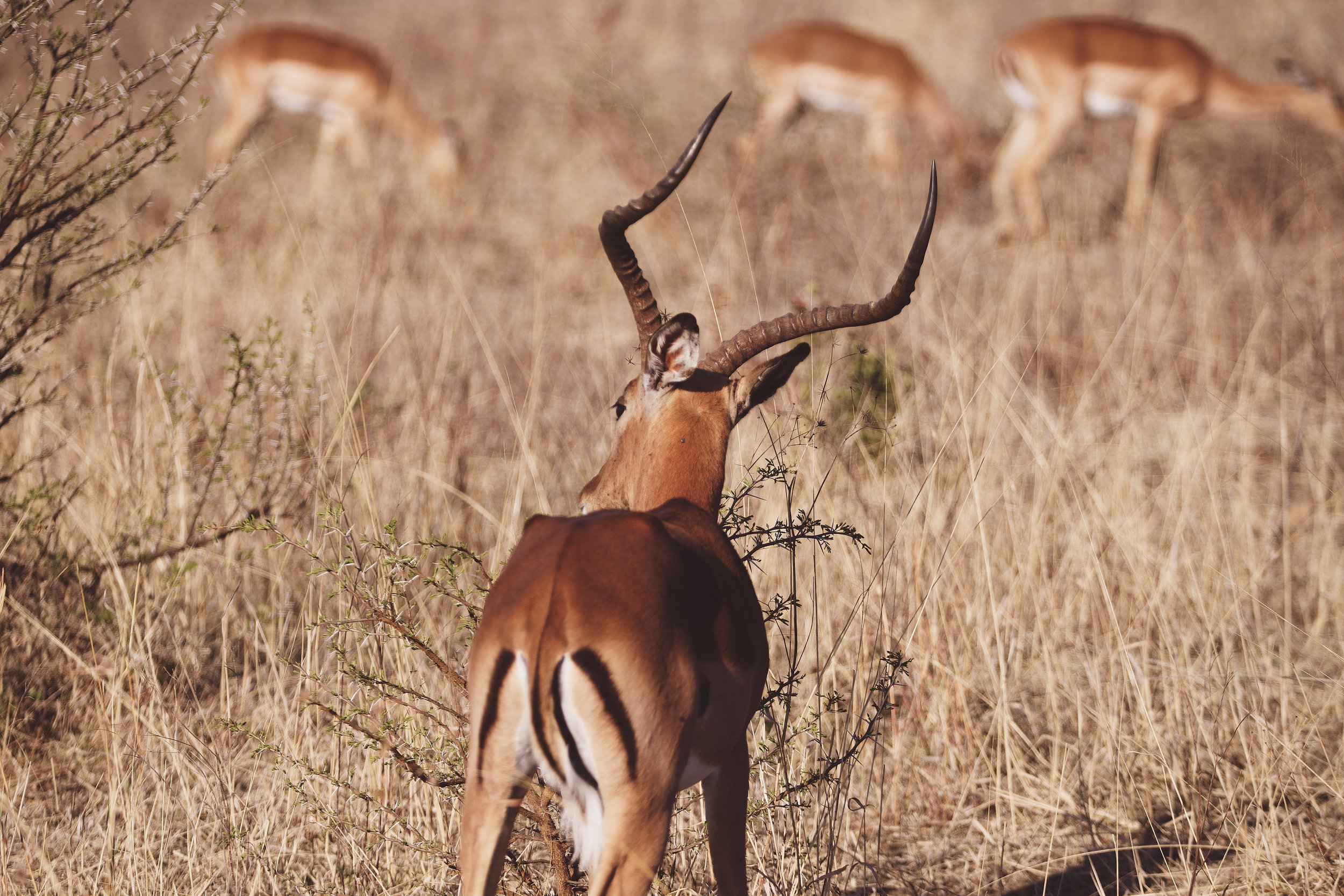How to Plan a Trip to South Africa
Important Tips on Game Parks, Packing, Tipping, Driving, Photo Gear, etc.)
Johannesburg - Arriving in South Africa
Shiduli Private Game Park - Karangwe Reserve
Kruger National Park | Letaba Rest Camp
Tembe Elephant Park Lodge
Hluhluwe-Imfolozi Park | Mpila Camp
andBeyond Phinda Private Game Reserve | Forest Lodge
Midlands | Hartford House | Crab apple Cottages
Karkloof Safari Villas and Spa | Kwazulu-Natal
Springbok Lodge | Nambiti Private Reserve
Drakensberg Mountains | Royal Natal National Park
First Timer’s Travel Guide to South Africa
This very detailed guide is packed full of travel tips on how to pack, how to plan, where to stay and what to do when visiting South Africa for the first time and will provide you with all you need to know before you go to South Africa. Now this guide is extra long, so you can jump to specific locations or areas of interest by clicking the quick links.
Our Safari Adventure through South Africa from Kruger Park to the Midlands Meander and Beyond - The Best Road Trip of My Life
South Africa is an unbelievable country, so full of life, culture and beauty unlike anything I’ve ever seen. It remains one of the most incredible places I’ve ever visited, while also being one place I’ve felt both deep sadness and, at moments, fear. I met women who couldn’t help but sing praises aloud because of how blessed they felt just to feel the warmth of the sun, game rangers who have so much passion for what they do that they exude excitement and reverence for every animal they encounter and experienced great generosity from many who had little to give. At the same time I heard stories of sorrow and pain because of violence, frustration due to corruption and fear and uncertainty in what the future holds for the only place they call home. So while this is a travel guide for those looking to visit South Africa, it’s important to represent the full picture of what I experienced while there.
My husband is half South African - his Dad grew up in a town just outside of Durban - so he’s been talking about taking me since we started dating 13 years ago. It took us a while, but we finally made a plan to make our way to the Motherland along with my in-laws. I knew very little about travel in South Africa so had to do a lot of research and put more trust than I feel comfortable with in my father-in-law’s planning ability. We set aside three full weeks to explore as much as possible - but this wasn’t a normal Type A Trips vacation - let’s just say that we tend to travel slightly different (ok… a little more than slightly) than the rest of the family. So we split our time between reasonable accommodations in the national parks with the family and boutique style private game parks when it was just us. So I’ll be able to give you a “well rounded” experience of our trip to hopefully help you plan yours!
How to Plan a Trip to South Africa
Planning a proper trip to South Africa takes time, effort and forethought. Most people begin planning their trips at least a year in advance, something I wasn’t expecting when I started booking our trip 6 months early and found myself faced with limited options and replies relaying “fully booked” filling my inbox. In addition, many locations we contacted were really difficult to book… everything from emails to confirm availability to bank wire transfers for payment, making planning that much more difficult. Don’t let this deter you in any way, because all the hard work is worth the reward that awaits. So here’s my Type-A tips for planning:
Tembe Elephant Park
Plan your trip far in advance, ideally booking hotels 9-12 months ahead of time - flights can be purchased 6 months out or when a deal comes up. There really isn’t much of a slow season anymore so just always expect it to be busy and full.
Add payment due dates to your calendar and request to pay by credit card. Many accommodations require an initial deposit then final payment prior to your arrival. Remember, these are not always sophisticated systems so instead of sending you a reminder, they will literally just cancel your booking if payment is not received on time. Also, be sure to ask about paying by credit card because most places require costly bank transfers which are a real pain to deal with, but if you ask you may be able to pay by card.
Book a flight that arrives early in the day, especially if you’re flying into Johannesburg and since you’ll probably have to travel to your first destination and you will want enough time so you aren’t driving or traveling at night. If you are flying directly into Cape Town or a private game park, then this is less important.
Plan for a minimum of 10-14 days, ideally 2-3 game parks for at least 3 days each then a stop in Cape Town and/or Midlands, Kwazulu Natal for food and wine. This would be my ideal trip for our next visit, knowing what I know now.
Figure out your budget and start saving. While South Africa is relatively cheaper when it comes to some areas, it’s not when it comes to tourism and you can expect that all game resorts price for European and American tourists, lodging often costing more than anywhere else in the world. Here’s a very loose expectation of costs: Flights $1,500 each economy, $350-1,000 per night for all-inclusive private game parks and then $1-2k for extras like car rentals, massages, misc. meals, etc. It’s safe to say that 2 weeks for 2 people will cost you around $10k, depending on your level of fancy-shmancy.
Decide how you want to get around, if you want to drive yourself to cover more area or simply plane hop to a few destinations. If you want to hit a few key game parks plus a visit to Cape Town, then flying is probably the way to go as many of the private reserves have their own flights into the park; however, if you want to travel around and visit some national parks like Krueger, you’ll probably want to drive to avoid the hassle. If you’re considering driving, read more about our tips and experience below.
Booking a Rental Car in South Africa
Large Trunk - When renting a car, ensure you reserve one with a fully closed trunk and big enough to fit all of your belongings as you’ll want to ensure that nothing can easily be seen inside your car while driving. If you don’t get one, go back inside and insist on one as this is necessary.
Photos of the Car - Take pictures or even video of the entire car and make note of any issues as you may very well have to fight it later. I recommend that once you’ve taken the pictures that you ask where to email those photos so that there is record of the date they were taken. I’ve heard plenty of stories of being charged for minor issues, so you may want to pay extra for the insurance so you don’t have to think about it. Type-A Tip: We had our car washed right before returning it so that we could see any issues and were not hit with a surprise fee for a blemish we never even saw.
Car Insurance - our credit card covered some of it and I told them this when I made the reservation; however, ended up still being charged a very large daily fee (which I found out when I got home). I fought it by showing proof of that insurance and did get my money back. Call your credit card company, ask for your specific coverage, be sure to bring it with you, and also send it via email so that you have that paper-trail - it could save you hundreds of dollars.
Driving in South Africa
Kruger National Park
Never Drive at Night: I will advise that driving can be intense, especially going through some of the towns can feel scary at times and you should absolutely avoid driving at night (even the locals will tell you this).
Dangerous but Common Passing Tactics: When driving, watch what the locals do and pass along the shoulder or even into oncoming traffic lanes otherwise your drive could take you twice as long; however, go with your comfort level and take your time. Don’t feel pressured to do anything that doesn’t feel safe.
Plan Your Driving Route: Most importantly, if driving, map out your route ahead of time, asking trusted locals to ensure you arrive at your next destination well before dark and that you are taking the safest route possible even if that means a bit of extra driving time. There were many times we were told to avoid certain areas/towns/streets, etc. due to safety, even being told to just drive through red lights so we are not stopping unnecessarily, making us a target for theft or crime.
Hitch Hikers: It is a common practice to hitch hike in South Africa; however, we don’t recommend picking anyone up as it can be dangerous. My father-in-law picked up a sweet, older woman on her way to church (he wasn’t in my car, otherwise I may have protested) and it was perfectly fine; however, on other occasions we had rocks thrown at our car when we passed by groups of guys wanting a ride and didn’t stop… so there’s that.
Getting Gas: Stopping at petrol stations can be a bit stressful and this is something you’ll want to have planned out along your route as well. When driving on the major roads, stop at large stations such as “Caltex” or “Shell” which have clean bathrooms, food and are generally safe. Fill up when you can, not when you have to - not allowing your tank to be less than 1/2 to 1/4 at any time. Getting gas in smaller towns was one of the most stressful places for me as there are so many people (literally just people everywhere) loitering around and I hated being in the car by myself while my husband went inside to pay or use the restroom. Gas is full service, meaning it is pumped for you at the station and you should expect to tip 2-5 rand. Some of the guys filling up the gas will also clean your windows, but if someone else comes up to do it, be sure to tell them no or you should expect to also tip them 1-3 rand separately.
Shiduli Private Game Reserve
Things i learned during my first visit to south africa
Kruger National Park
Must-Try Food and Drinks
Biltong - This is the South Africa’s most loved roadside snack and their version of beef jerky made of quality, meat hung to dry . It can be purchased just about anywhere, but the best are places that have a butcher. You can buy it dry or wet (which doesn’t last as long) and with varying degrees of fat. It’s much thicker and chewier than beef jerky and it’s mostly beef, but you can also buy other meats like ostrich. Often, the butchers will let you go to the back and pick which one you like, hanging from the ceiling or along the wall - choosing both the size and texture. It is sold by the kilo, so plan on about half a kilo = 1lb and it’s pretty pricey so don’t go too crazy all at once. We usually bought a kilo at a time for about $20US, which would last us a few days or one long car ride. Each shop has different seasoning so you may find one spot you really like and another that’s just ok. I didn’t really like the ones we bought from the grocery stores, the best ones were generally from actual butcher shops.
Grapetizer and Appletizer - these were my two favorite drinks (Grapetizer specifically), which are a perfect mix of juice and soda. You can order them as easily as you can order 7up and are great for game drives.
Amarula - this is my husband’s favorite South African alcoholic drink, best served with cream, it’s very similar to Baileys and perfect as an after dinner cocktail and gift to bring home to friends and family.
Game Park Tips
Big 5 vs Big 10 - Originally coined to refer to the hardest animals to hunt on foot is now mainly a marketing term. Big 5 is the lion, elephant, buffalo, rhino and leopard. The Big 10 adds the giraffe, the cheetah, the hippo, crocodile and zebra. Big 5 is most common and often has most if not all of those listed in the Big 10, but Big 5 is more well known. Do check before booking to ensure that the animals you are hoping for are there, just don’t expect to actually see them all (especially the infamous leopard, which is often the hardest to spot).
Bigger isn’t necessarily better when it comes to game parks - and smaller isn’t always better either. There’s a balance that you want. You’re more looking for the overall experience so reading reviews is really important. You don’t want a place so small that it feels like it’s a zoo, but also not so huge that you may be driving for days and not see much of anything. I personally seemed to prefer a range somewhere between 9,000 - 45,000 hectares to give you a rough estimate. And to give you a comparison, Kruger National Park is over 2 million hectares - literally bigger than Israel!
Government and public parks although cheaper and in some cases are in excellent locations and have great animal viewing, they can also be very run down and poorly managed. I really did not like the accommodations at any of the government/pubic parks we stayed at - they were all extremely outdated, the level of cleanliness was far less than I’d hope for and were really underwhelming, which is truly unfortunate considering the potential that is there. These parks also have rules such as no off-roading and specific curfews to be aware of, which are both for your safety and the safety of the animals.
Cleanliness - The level of cleanliness I experienced was generally a bit less than what I would be used to at a similarly rated resort in the US, so be mindful of that, especially for my fellow clean-freaks out there. Not bad and totally acceptable, just not great except when visiting the really high end resorts.
Several Lodges on the Same Reserve - Private lodges on the same reserve will mostly take you on the same game drives - it’s less about the lodge and more about the reserve. The differences in price will be around the amenities, quality of lodging, quality of food and in some cases the quality of the guides. So if you’re wanting a stellar game viewing experience on a budget, look at all of the lodges on a specific reserve and book the cheapest one they’ve got! Just know that those are the ones that book out the quickest, so you’ll have to plan ahead.
Guided Game Drives Twice a Day - One in the early morning around 6am and one in the afternoon somewhere around 3pm depending on time of year. This is for good reason, since this is when most of the animals are out and during the coolest times of the day. It’s best to follow this same schedule when doing your own drives, leaving the middle of the day for rest and relaxation.
Game Drive Expectations - Game drives aren’t consistently exciting, and sometimes not at all. There are slow points, boring points, even rain. They can be long. Sometimes you see things every 5 minutes and other times you don’t see anything for your entire 2 hours drive. If weather is really bad - like wet and windy with no signs of clearing up, it can be better just to skip it for the day than sit out there miserable while all the animals have find places to hide away.
Off Roading - The best private game resorts had the ability to go on off road adventures, getting us way closer to the action, like following a cheetah chase or seeing a male lion sitting a mile out in the middle of a thick field.
Bush Bathrooms - plan your pee. On private game drives you will be offered lots to drink, but beware that what goes in must come out. So be sure to go right before the game drives and be able to hold it for at least 3 hours, otherwise you’ll have to go in the “Bush Bathroom” which is literally squatting somewhere when you stop for a snack, which is great for guys but terrible for ladies. I had small baggies for these little trips that had tissue and hand sanitizer and I would stuff my used tissue in there and throw it away when I got back. Gross but true.
&beyond Phinda Private Game Reserve
Important Type-A Tips to Remember When Doing a Self-Driving Safari Through a Game Park…
Do not get out of the car. Period. Unless you are at a designated rest stop, it is extremely dangerous to get out of your vehicle. Wild animals are very hard to spot and you never know when you’re pulling up next to one or one is in the distance watching you. They are faster and stronger than you will ever be, so don’t be stupid, it’s not worth it. Did you know they call elephants the quiet killer because they are so quiet, you sometimes will have no idea they are hiding just a few feet from you in the thick brush?
Don’t roll down your window all the way. I’m serious! This may sound ultra paranoid, but I’ve heard too many stories of baboons jumping through windows to take food and even lions getting a paw in if they see an opportunity.
Park or stop you car on the side of the road that the wildlife is sighted, otherwise if cars stop on both sides of the road, cars aren’t able to get around or drive through. We had a couple very frustrating encounters where this was not observed - you know who you are angry South-African man!
Keep your car a very safe distance away from elephants. While elephants look slow and friendly, they will absolutely charge a car and go into a full chase (we know this because it happened to our family while we were there). Especially when a bull is in musk (ready to mate) or mama’s are near their young, they can become extremely aggressive. Ensure that your car never becomes blocked on several sides without a way to get out and always be watching if you feel a change in behavior. Look out for ears being held out for a prolonged time, trumpeting, stamping their feet and shaking of the head, these are all signs you should drive away, even if that means backing up as fast as possible.
Packing
Packing for South Africa is something that’s scrutinized over by too many people, including myself, but I realized once I was there it was actually much easier than I made it out to be. Don’t stress about wearing specific colors or having to buy brand new safari gear - for the most part you already have everything you will need. I do have some recommendations for must haves that should help. Overall, it’s really important to have clothes you can layer because the temperatures will shift drastically during your game drives (see variety of clothing throughout the trip below) - in the morning you’ll start out in the dark when it’s super cold and windy and you’ll end up shedding down to shorts and a tee by the time you’re done and during afternoon drives you’ll be sweating in the sun, but by the time you are driving back your teeth will be chattering. Don’t make the mistake of thinking that whatever the temperature is at the moment you leave will be the same in a few hours or you'll find yourself miserable by the end of it. Also, don’t pack anything flashy or much jewelry, it’s better to leave those items at home.
Items to Bring
Buff/scarf to cover your face during game drives
Fanny Pack/Cross-Body Bag - You'll want your essentials out with you, including some tissue, lotion, medication, sunscreen, camera, etc., but the drives are very bumpy so purses fly around a lot and backpacks sitting on the floor slide around too much. The best set up I saw was a cross body bag that zipped up and the strap snapped so that you can connect it to the roll bar on the vehicle, keeping it in the perfect spot during the drives. Here's an example I found on Amazon, but it could be as simple as even a fanny pack: Cross Body Bag from Amazon
Binoculars
Medication
Insect repellent
Sunglasses
Sunscreen
Earplugs and an eye mask (especially if you’re a light sleeper, there can be a lot of animal sounds at night)
Clothing
Pack in layers - for the most of the day you’ll wear lighter clothing, but for the colder part of the game drives you’ll want the following. If you pack one of each that should be enough and you can just rewear. I promise you, even if you’re super hot when you leave for a drive and couldn’t imagine needing gloves in just a few hours - you’ll be so thankful you have them in your pocket when it’s pitch black out and the cool wind is ripping through your t-shirt. Otherwise, pack some shorts (longer is better in my opinion to keep you from sticking to the car seats during drives!), t-shirts and all the regular items you would pack on vacation. Do remember that it’s dusty and dirty, so I do recommend leaving your nicer attire at home and don’t overpack - you really only need a few of everything, plus enough underwear and socks to last the trip and that should be just enough. If you’ve got more clothes than you can fit in a carry-on, you’ve probably packed way too much.
Long sleeve shirt
Long pants (light travel pants are best and are great for layering a pair of shorts or leggings underneath)
Longer socks
Light gloves
Hat/beanie
Bathing suit
One pair of sandals
Comfortable, closed toed shoes
You will only need casual clothes for game parks, including for dinner - even at the fanciest resorts, no one dressed up. I packed one simple, cotton dress with a sweater that I was able to wear when we were at non-game resorts and that worked great.
A lighter jacket with enough room to layer and a hood helps (both for cold nights and possible rain)
Optional: light rain jacket/windbreaker - it rains more than you would think
Health and Wellness
Walkabout through iMfolozi
Malaria Pills and Yellow Fever - in all of the locations we went, they were malaria and yellow fever free zones, but you should look at all of the parks you are going to and where you’ll be traveling. We chose not to take malaria pills ahead of time for this reason, but did bring a bottle with us just in case.
Asthma - I am someone who doesn’t get asthma often, unless triggered by animals or seasonally and I really struggled this trip. Because of the constant, dusty game drives in open vehicles, my asthma was at an all-time high and even with my emergency inhaler it wasn’t subsiding, to the point of considering going to the hospital. I strongly recommend that if you’re like me, you wear your buff or scarf around your face during drives and bring both a full inhaler plus something stronger (talk to your doctor) if it gets really bad.
Exercise is difficult because you spend most of your time in cars driving around and it’s too dangerous to just walk around randomly. I brought some small elastic resistance bands that helped work out our tight muscles.
Tembe Elephant Park
Wifi and Connectivity
Wifi throughout South Africa generally sucks. Phone service is better and you can get pretty reasonable sim cards at the airport or you can pay a daily fee to your carrier (Verizon was $10/day) and at least ensured we had connectivity to directions and could make emergency calls. However, internet throughout the country is terrible. Even if a resort says they have internet/wifi, it’s usually slow and often only at certain spots throughout the resort. I would not be expecting to do work during your trip as it will be more of a headache than anything.
Tips on Tipping
Tipping in South Africa can be a bit complicated and it’s one of those places you will want to keep small amounts of cash on you, specifically if you plan on driving. Here’s some important areas you want to note for tipping, but then I’m going to turn you over to a great site that goes into much more expert detail than I ever could - just visit Expert Africa’s site by clicking here.
Petrol (Gas) Stations = 2-5 Rand (less than .50 cents US) - these are full service, so you can stay in your car and the attendant will fill your car and often wash your windows
Safari Guides = 150-200 Rand ($10-15 US) per person, per day
Safari Trackers = 75-125 Rand ($5-9 US) per person, per day
General Staff at Safari Resorts (waiters, cleaners, maintenance, etc.) = 50-100 Rand ($3-5 US) per person, per day
Tips for Photographers
Figuring out what photography gear I needed to bring to South Africa was one of the most stressful parts of planning for me because all I was imagining was a cheetah running in the distance and I didn’t have what I needed to capture it. I did so much research and asked way too many questions, but was pretty happy with what I had with me. Here’s some obvious reminders, plus some tips for getting the best shots.
The bigger the lens the better. I landed on the Cannon EF 70-200 F2.8 and bought the 2x extender. I didn’t want to buy a massive lens that I couldn’t use otherwise, which is why I did it this way; however, there was part of me that wished I had just bought the 100-400 for better clarity. Saying that, I was still really happy with what I had and you’ll be able to get close enough with the 70-200, especially with the extender. You can see my set-up used and the photo of where I am in the jeep taking photos of the rhinos and how close the photo actually looks - hopefully that helps.
Be Prepared to Shoot in Low Light. Since you go out early in the morning and in the early evening, there’s a few hours of very low light so be sure you have the lenses and settings to adapt.
Monopod - Having a monopod was essential when using the big lens and I was able to stabilize the camera while following an animal, even while the jeep was moving. I have the MeFoto GlobeTrotter Classic, which is a tri-pod and monopod in one and I really like it. It’s not the smallest out there or lightest, but it’s an excellent travel option for durability and versatility.
GoPro + Stabilizer - we brought our GoPro for those must-have action shots, but do yourself a favor and buy a stabilizer. We still don’t have one and most of our videos are total garbage and make me sick watching them. Don’t make the same mistake we continue to make and spend the extra bucks for some worthy video footage, especially while on drives.
Extra batteries and memory cards - duh, but figured I’d mention it anyway.
Rain gear - I made sure I had a waterproof cover for my body and lens so that if rain did start falling I didn’t have to risk losing a good shot. I use the Peak Design shell (and pretty much everything else they have), which was especially helpful in keeping dust out. Also be sure you have a waterproof backpack or case, just in case of sudden showers while you’re on a drive.
Backseat is best spot for photographers - I consistently found that the backseat was the best spot to sit on drives because I didn’t have someone I was blocking behind me, I had full range of motion and the longest view time to get just the right angle.
If we were to do it all over again…
Knowing what we know now, we would make a few travel changes for next time.
I would pretty much skip the public/government reserves unless we could find better accommodations within them.
I’d limit driving from place to place as much as possible. There’s already enough driving within the parks that 6+ hours of driving from place to place is too much.
I’d plan on only staying at 2-3 private game reserves for a minimum of 3 nights each, then stay in Cape Town or Midlands (or ideally both) for at least 3 nights.
My Fear and the Realities of Danger in South Africa
Before going, I was honestly very scared. I had heard a lot of stories from family members who lived there of being robbed and put in some dangerous situations. But I’m so thankful that did not stop me from going and the incredible experiences I had in South Africa far exceeded any moments of uncertainty I had during the trip. Overall, we didn’t have a single incident during our travels and generally speaking the South African people were wonderful, so full of joy that they would burst out in song and extremely generous with what they had, even if that was very little. However, there were a few moments of fear as we drove through towns and our cars were surrounded by pedestrians staring in at us, times when we had to stop for gas and I was afraid to be left in the car alone and situations when we were driving down quiet dirt roads for miles without cell service and feeling like if something happened to our car we wouldn’t know what to do. Unfortunately, we heard over and over again from local South African people that in many cases the value for life is less which is what makes the fear so real. Because of the extremely high level of poverty and unemployment and a lack of appreciation or care for life where someone desperate enough is just as likely to kill and rob you than just rob you; it’s a fear that many live with on a daily basis - especially local women. It’s a lot worse within the tribal communities and locals than with tourists and hopefully not something that keeps you from experiencing this absolutely marvelous country, but it’s always a risk to be aware of and something that left me pained for what the country is grappling with. The political and cultural landscape is constantly changing in South Africa, so it is important to do your research and understand what is going on where in preparation for your trip. Don’t be afraid to call places you are staying as well and ask the questions you need answered, especially when it comes to the safest route to take and what they recommend you be cautious of.
&beyond Phinda Private Game Reserve
My Itinerary Through South Africa’s Best Safari Parks
South Africa is obviously a very large country so it’s nearly impossible to visit every area in just one trip. Planning your route is the most important aspect of a smooth experience and I learned so much from my first visit, including where to stay longer and where to just drive on by. This map shows you our route, not exactly the specific roads we took, but fairly close - starting in Johannesburg and making a circle back up (the route back up to Johannesburg from the Royal Natal National Park is not shown because GoogleMaps wouldn’t allow me to add anymore destinations!). This trip involved a ton of driving (40ish hours just going from location to location) and it’s not necessarily what I would recommend, but hopefully this gives you a helpful visual of where places are as I talk about them below. Even my planning isn’t always perfect and we had to do some backtracking along our journey, but it all worked out just fine.
johannesburg - arriving into south africa
Johannesburg is the largest city in South Africa and most likely the airport you’ll be flying into if you’re planning on exploring the eastern region where most of the Big 5 game parks are (Capetown would be the other possible starting point). Unfortunately, Johannesburg is also one of the most, if not the most dangerous cities in South Africa with very high crime, so there is no reason to spend any time here - just arrive and get out. I’m not tryin to be dramatic - everyone from locals, family and total strangers advised us of this.
If you are grabbing a connecting flight from Johannesburg then there’s no reason to leave the airport, but if you are driving you’ll want to ensure that your flight arrives in the morning or early afternoon so that you have enough daylight hours to get to your first destination. If you don’t have a choice but to arrive in the evening, I highly recommend staying the night at one of the airport hotels and starting your drive first thing the next morning.
Springbok Lodge
Johannesburg to Kruger National Park & The greater area
The natural progression is to drive from Johannesburg towards Kruger National Park (5+ hours with a rental car or hired driver, but go at your own pace) or hop on a quick flight (1hr flight, but checked baggage is limited). Kruger is the most well known game reserve in South Africa and if you take a look at a map, it is gigantic so it’s hard to know exactly where to start. Think of it as South Africa’s equivalent of Yellowstone or Yosemite, just with lions and elephants.
There are several entrances to the park, a variety of lodging options from self-service camping to five star accommodations as well as the option to self-drive or book a guided tour. Because Kruger is so wildly popular and accessible, the lodges within the park book up extremely quickly - up to a year in advance. When I went in search of luxury, boutique accommodations 6 months in advance, I couldn’t find any with availability, it was nuts. So here’s what we did…
Shiduli Private Game Reserve - Affordable Luxury, Big 5 Safari Resort near Kruger
I wanted to arrive and have a few days of worry free relaxation to regroup after the very long days of travel getting to Johannesburg (nearly 30 hours coming from California). So before embarking into the Kruger Park adventure, we found the Karangwe Game Reserve, just over an hour drive west from one of the Kruger entrances leading directly in the middle of the park. Compared to Kruger, Karangwe Game reserve is barely a dot on the map, which I was initially worried about being too small, but I was quickly proved wrong.
The Karangwe Game Reserve has four different lodges to choose from spread out throughout the 9,000 hectare property. This was something I didn’t understand when I first was looking at places to stay, but like I mentioned in my tips - when it comes to the smaller, private game reserves, all of the lodges pretty much cover the same ground when it comes to the game drives so staying in the cheaper option vs. the highest luxury lodge on the same reserve doesn’t buy you a better animal viewing experience - so you can make your decision from there.
We booked two nights at the Shiduli Private Game Lodge, which is an all inclusive, 25 suite lodge - meaning that in addition to your lodging, you are provided with all of your meals (minus add-on drinks) and game drives twice a day. I would call Shiduli “affordable luxury”, where everything is taken care, the staff is extremely kind, accommodations are a bit dated but comfortable, grounds are minimal, but serene and food is good, not great. Saying that, what the lodge lacked in fancy touches, it more than made up for in the guides and game drives, which ended up being some of the best animal viewing we experienced the entire trip.
Here’s the schedule that Shiduli offers, which is pretty typical of most private game parks:
Morning coffee and game drive around 6am, for 2.5-3 hours, including a coffee/tea break during the drive
Breakfast
Break
Lunch
Pre-drive afternoon tea & pastries around 3pm
Afternoon game drive around 4pm for 2.5-3 hours, including wine/beverage break during sunset
Dinner
The guide and tracker we had at Shiduli were truly two of the best we had throughout all of the trip; they were knowledgeable, strategic, confident and adventurous - using patience and a little risk to give us some unforgettable moments. If you have an option, ask for Dennis as your guide and Johnson as your tracker - you won’t be disappointed. After being at Shiduli just 24 hours, we saw all of the Big 5, including watching a leopard eat his kill at the end of one of our night drives (picture below) - it was unreal. They also do a great deal of work with the cheetah population… so if the guides tell you to get out of the car to take a closer look - do it! I was fairly stubborn and refused to get out of the jeep, but our amazing guide put me in the exact right spot, just a few feet away a majestic trio lounging in the glow of dusk.
I would highly recommend staying at Shiduli or one of the other Karongwe Portolio locations as this private reserve is full of rich wildlife. If you don’t want to do the drive, you can fly from Johannesburg to Hoedspruit and rent a car from there (1 hour from Karongwe) or set up a transfer to pick you up and take you directly to your lodge. The days go by really fast. You’re constantly full. Game drives usually have at least one epic moment so it’s never a good idea to skip one (unless it’s really miserable and rainy out). We had an unbelievable time and it was definitely one of the best introductions to South Africa I could have asked for. PS - their website says that the reserve overlooks the Drakensberg mountains… I’m fairy certain that’s not actually true considering it’s a 6 hour drive between the two, but I’m willing to be proved wrong.
A Funny, but Really Embarrassing Story
My husband Colin has night terrors (remind me to tell you more about those sometime), but it’s a form of sleep-walking where he looks like he’s awake, may get out of bed and move around and he’s interacting with you but he’s seeing “extra” like other people in the room or thinks I’m falling off a cliff… that sort of thing. Anyway, on our first night in South Africa at Shiduli, the door to our room wouldn’t lock for some reason, but by the time we realized it, it was pretty late and we just figured we would get it fixed in the morning. I didn’t think anything of it until I woke up at about 3am to the scariest noises I’d ever heard, which literally sounded like it was coming from right outside our room. It was a terrifying, angry guttural roar or bark - sounds I’d never heard in my life, coming from something that sounded really large pacing back and forth in front of our unlocked door. At that point all I was imagining was Colin waking up with a night terror, hearing these sounds, jumping out of bed and running immediately out the door to be attacked or eaten by a leopard or lion or whatever the hell was out there (because that’s how it works in South Africa, lions just hang out at camp, right?). After waiting in total fear for about 10 minutes for this thing to go away and imagining it opening our door with its dinosaur sized paws, I decided I needed a plan. So I carefully and quietly shook Colin awake, holding him down as hard as I could so he would not jump out of bed and oh so seriously said, “I need you to barricade the door with the luggage then go into the bathroom with me and lock the door. Now. I’m serious.” After his confusion wore off, he obediently did what I asked and came into the locked bathroom with me where I was shaking and in tears. There, he heard the noises too and had no idea what was making them. He was so sweet and tried to calm me down from being convinced we were going to die at any second and we stayed hunkered in there for about 15 minutes. Finally he convinced me to come back to bed once the animal had seemed to move on. In the morning, we asked the staff about the wild killer beast that was terrorizing the camp last night… to which they snickered, “It was just a baboon”. WTF man, it must have been some kind of rabid, crazy baboon, right? Nope, I was assured it was just a regular baboon probably hanging out outside our room. Don’t believe me, listen for yourself - here’s a video of Scary Baboon Sounds on YouTube. So the moral of the story is 1) make sure the door to your room locks and 2)know your monkey sounds.
Kruger National Park & Letaba Rest Camp
From Shiduli, we drove one hour east to the Phalaborwa entrance of Kruger Park and another 1.5 hours through the park to the Letaba Rest Camp. The Letaba Rest Camp is located in the middle of Kruger Park and is one of the largest and oldest gated camps with furnished bungalows, tents and guest houses, as well as a variety of facilities, including a gas station, store, pool, laundry machines and tour office where you can book guided day and night drives. Think of it like a campground that you would stay at in Yosemite or Yellowstone, except there is a strict curfew at night when the gates are locked and no one goes in or out, including the wild animals that roam around the perimeter of the camp.
We met up with our family there and we each had our own fully furnished bungalow, including pots and pans for making food. Within the camp there are charcoal BBQ stations as well as communal hot plates and microwaves and you can buy groceries at the camp store. The accommodations are rather rustic, minimal and a bit run down - not at all my ideal scenario; however, the communal option of cooking outside with the sounds of Africa vibrating all around you is something I’ll never forget.
We did not book any “guided tours”, so with Letaba as our home base, we took two daily self-guided drives through the park, one in the early morning and one in the afternoon. As I mentioned, gates close at a specific time each evening and open again early the next morning, mainly for protection, so it’s important that you schedule your time outside accordingly.
Hornbill (AKA Zazu from Lion King)
Driving around Kruger National Park
Kruger National Park is absolutely massive and the terrain can change significantly depending on the location, so don’t expect to see it all on your first visit. Even with 3 days, we barely scratched the surface. Although Kruger is rich with wildlife, it can be harder to spot some of the less populated animals like rhino, leopard and lions, especially since most people are self-driving and you are not allowed to go off-road. When one of those animals is spotted, there’s usually a line of cars awkwardly parked along the road to catch a glimpse.
Unfortunately, I can’t provide any great tips for where to go to see since it is constantly changing, but you should definitely make stops at the ranger stations/rest camps where there are maps of recently spotted animals and the rangers can give you tips on where to spend your time if you’re looking for something specific. It was incredible the variety of wildlife we saw - especially some of the smaller species, like the honey badger. The initial thrill seeing zebra and giraffes quickly wares off after the 52nd and you begin to drive by like they are just another squirrel, so I recommend getting a guidebook when you enter the park that sends you on a scavenger hunt for animals - hundreds of species of wildlife are listed, each with their name and a colorful picture so you can recognize it when you see it. It keeps the very long drives interesting.
To give you an understanding of how long it takes to get through Kruger park, we left Letaba and drove straight down to the southern entrance/exit and it took us about 10 hours and that’s only half of the park. Of course, if you were driving without stopping, it would be closer to 5 hours, but when you see a lion sleeping on the side of the road… you stop! So give yourself plenty of time to explore and truly enjoy, stop when you see something interesting and ensure you arrive at your destination before dark.
Would I visit Kruger again? I keep asking myself this question and have struggled with my decision. Kruger National Park is absolutely worth a visit and we saw some incredible wildlife. While I would not take back my experience, I don’t think I would go back - simply because of the sheer size of it, the amount of driving we had to do and because of how difficult and expensive it is to get into a nice accommodation within the park. For our next visit, I’ll probably choose smaller, private, all-inclusive game parks, especially if I have limited time.
Here’s some of what we saw during our time at Kruger:
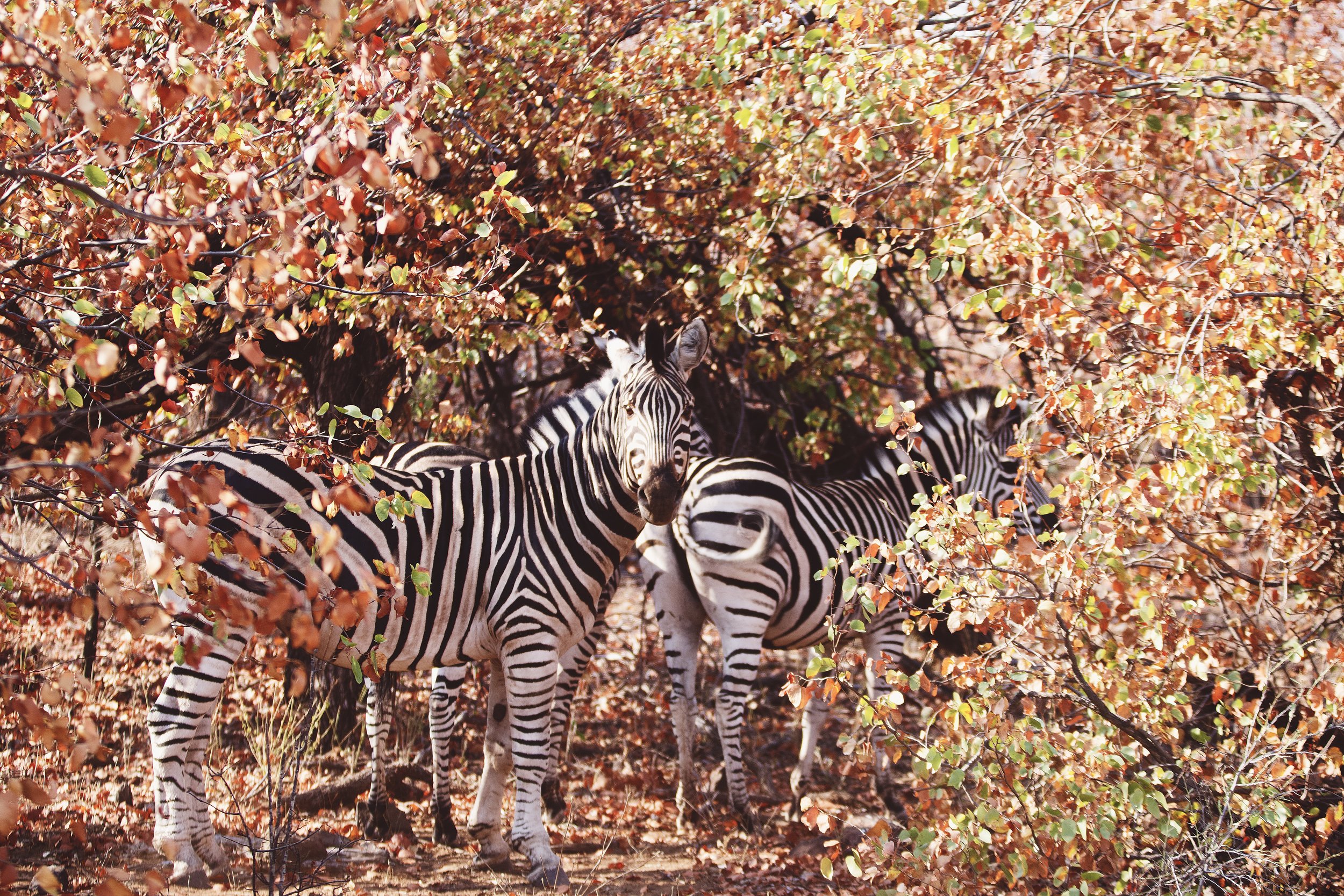
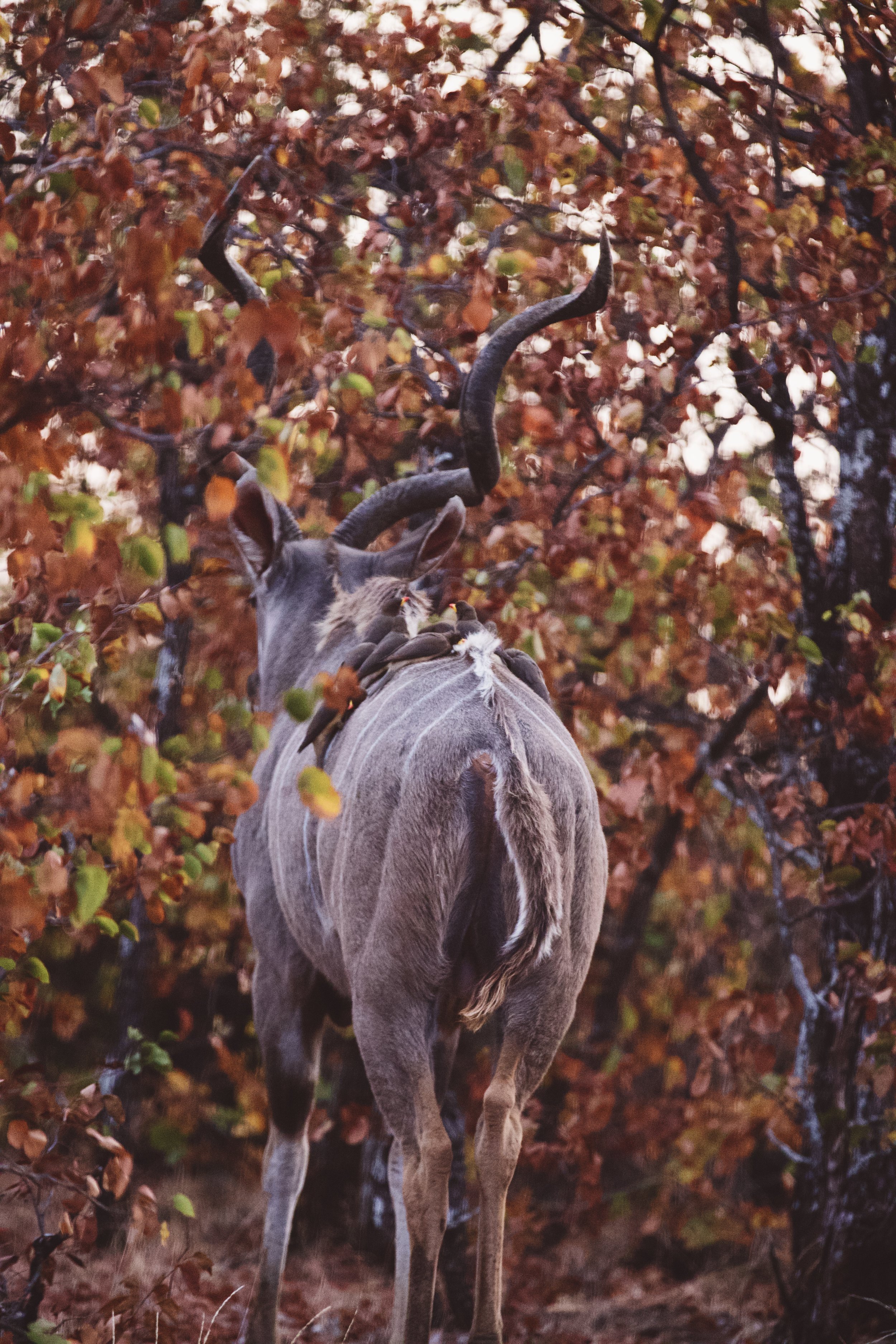
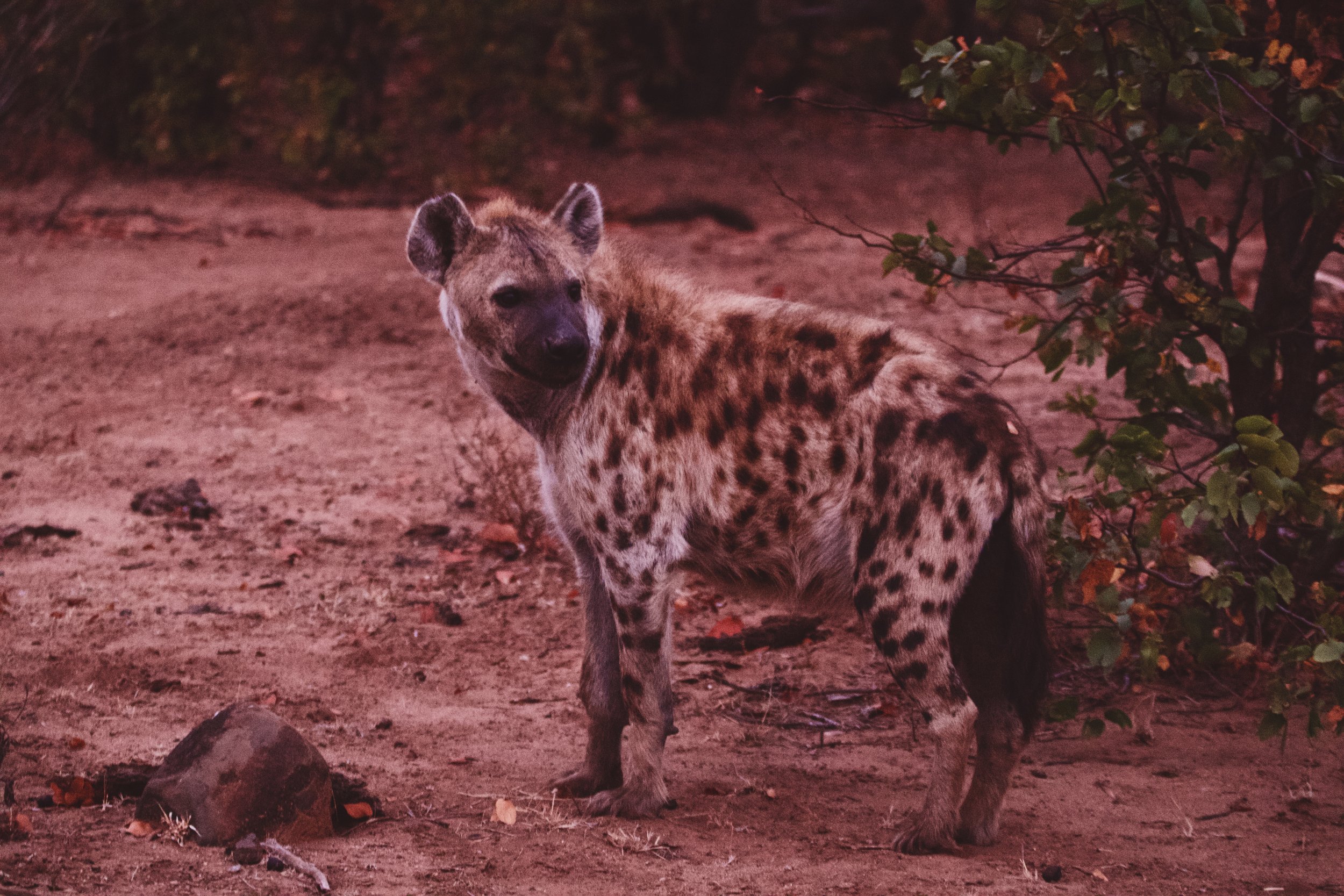
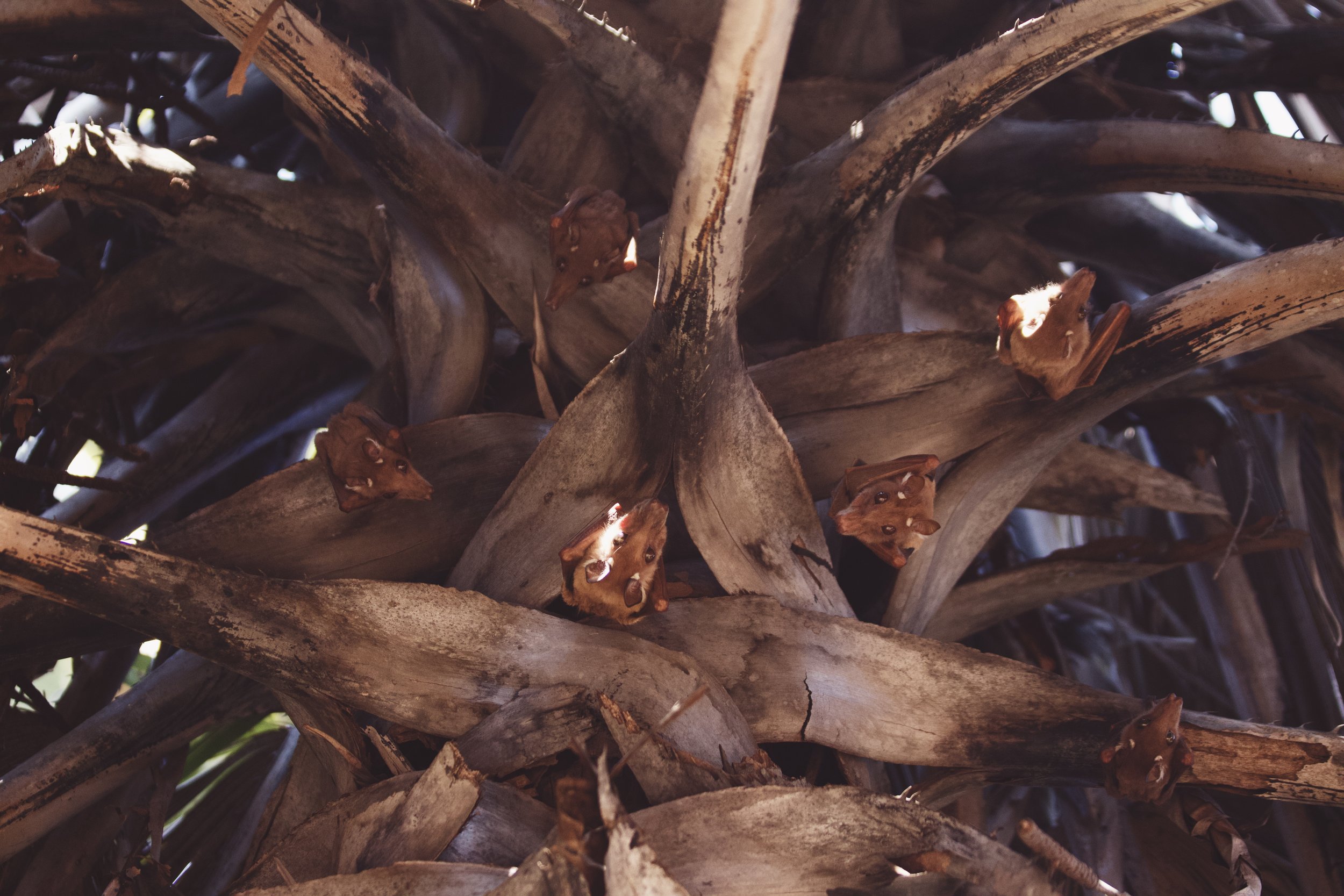
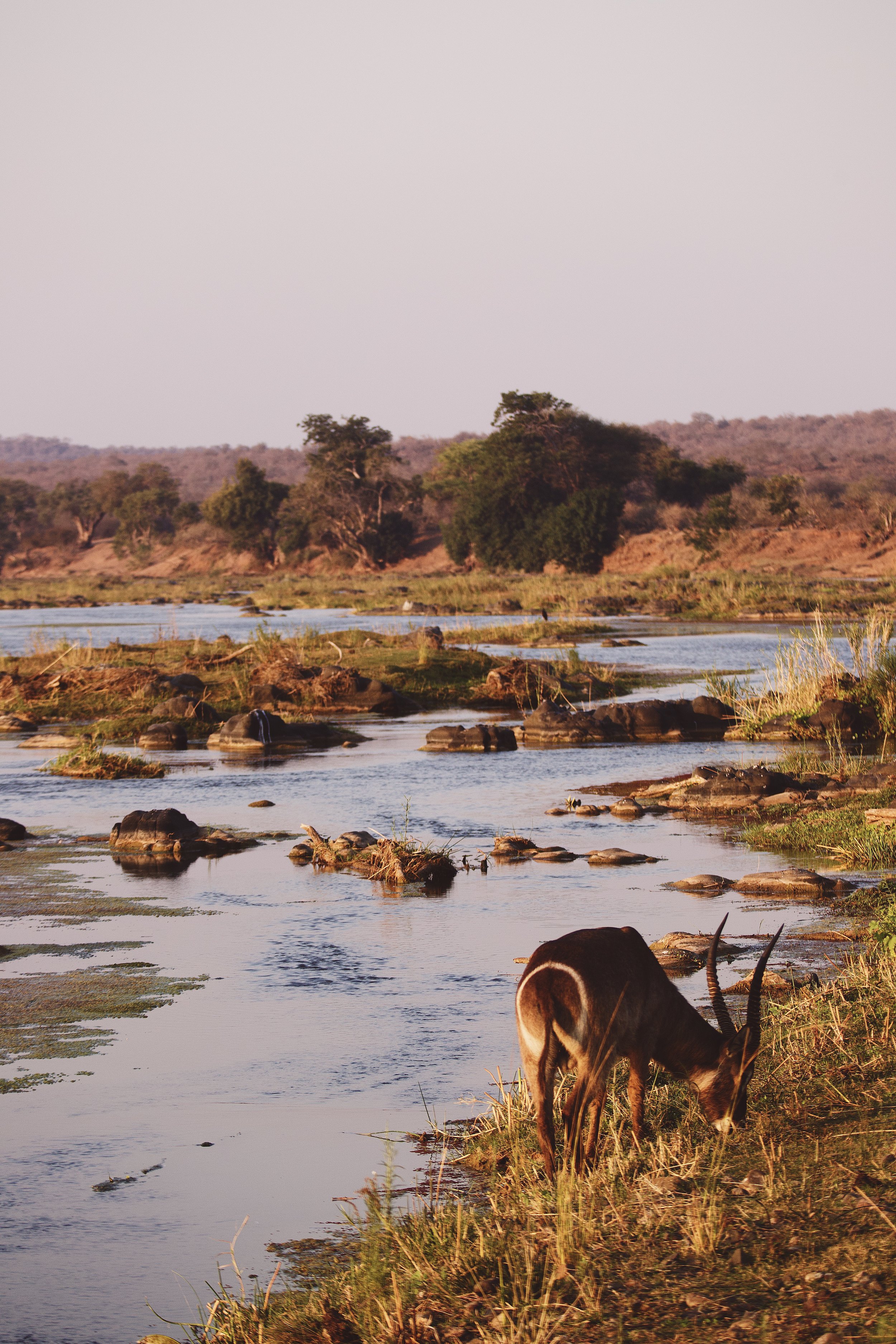
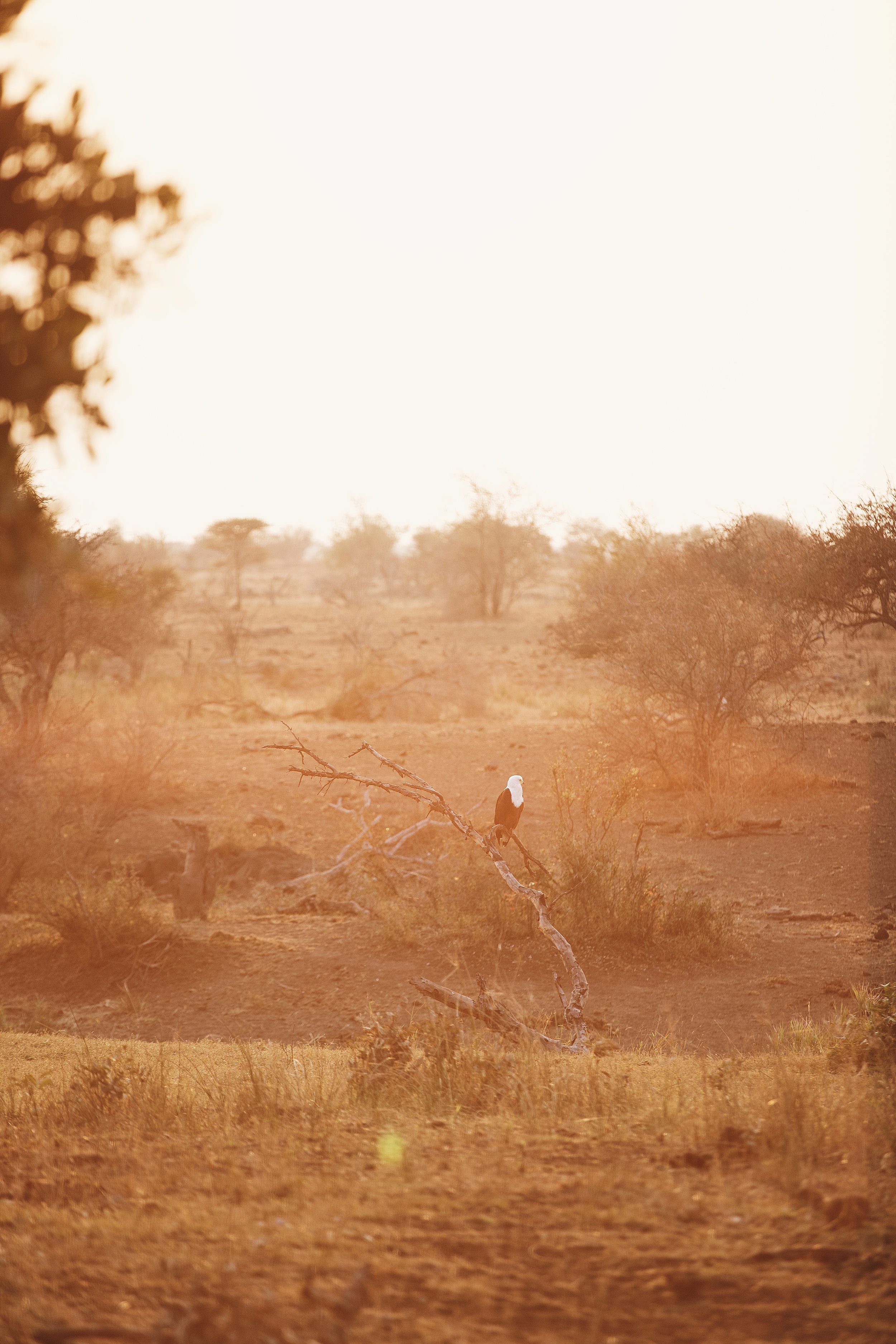
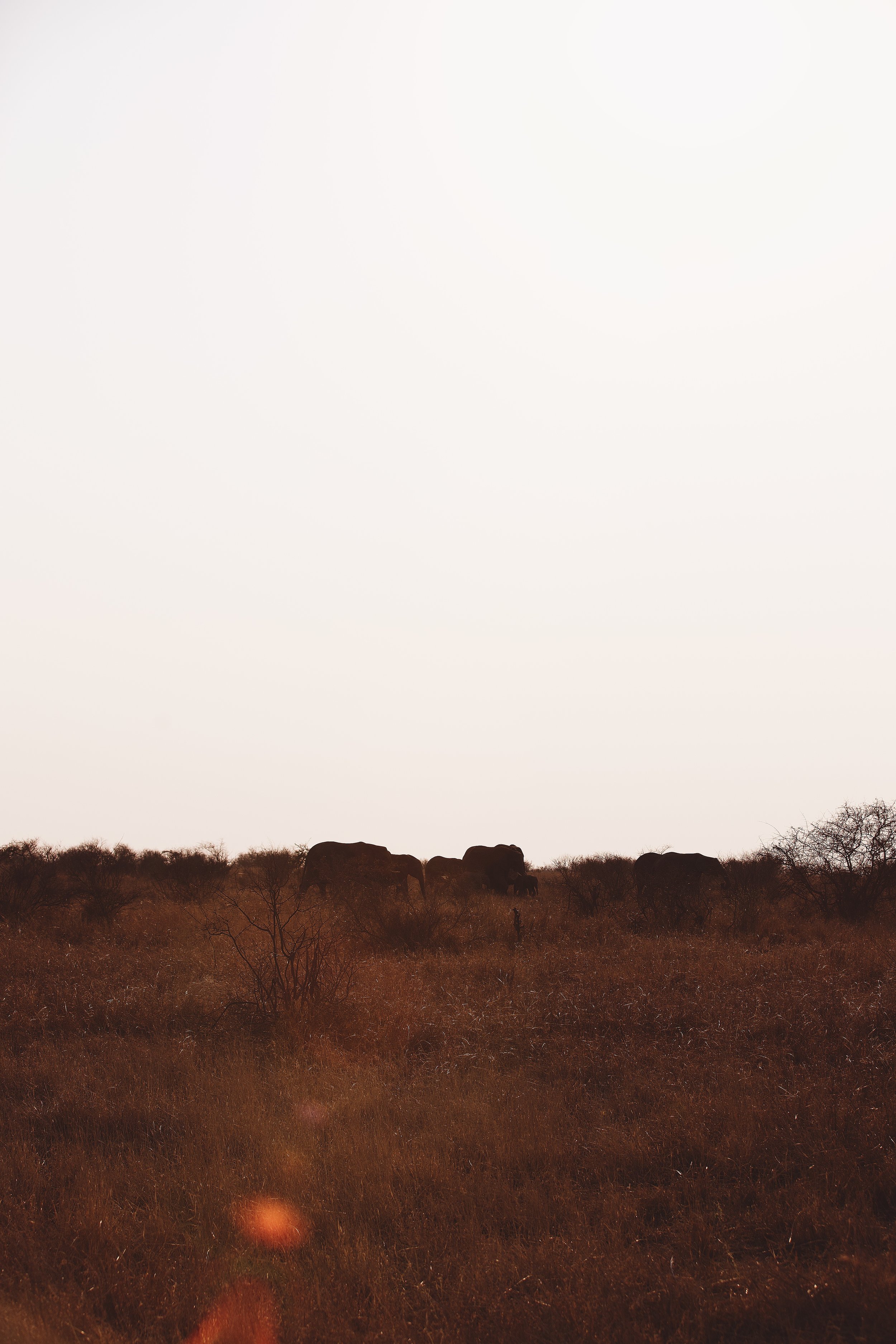
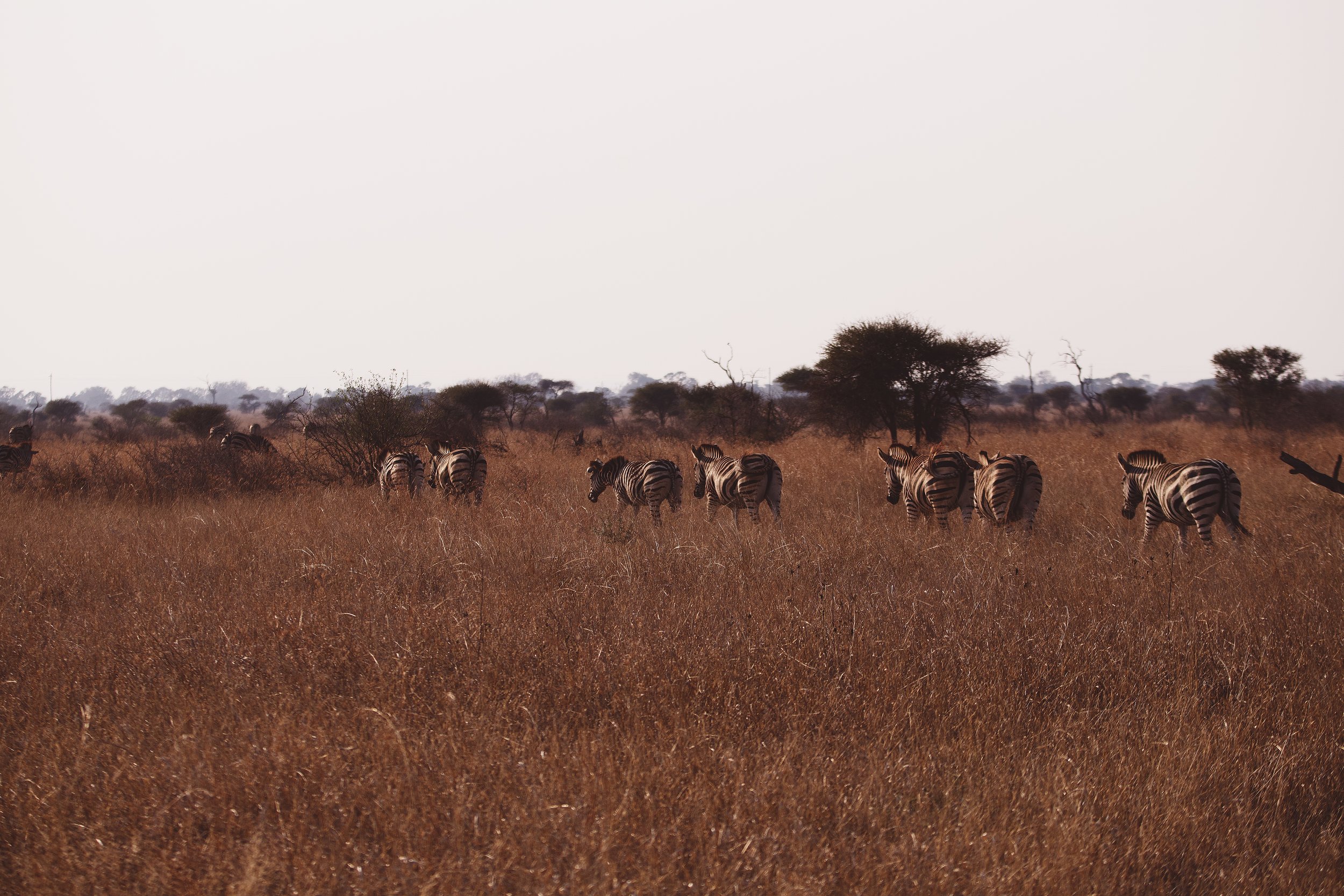
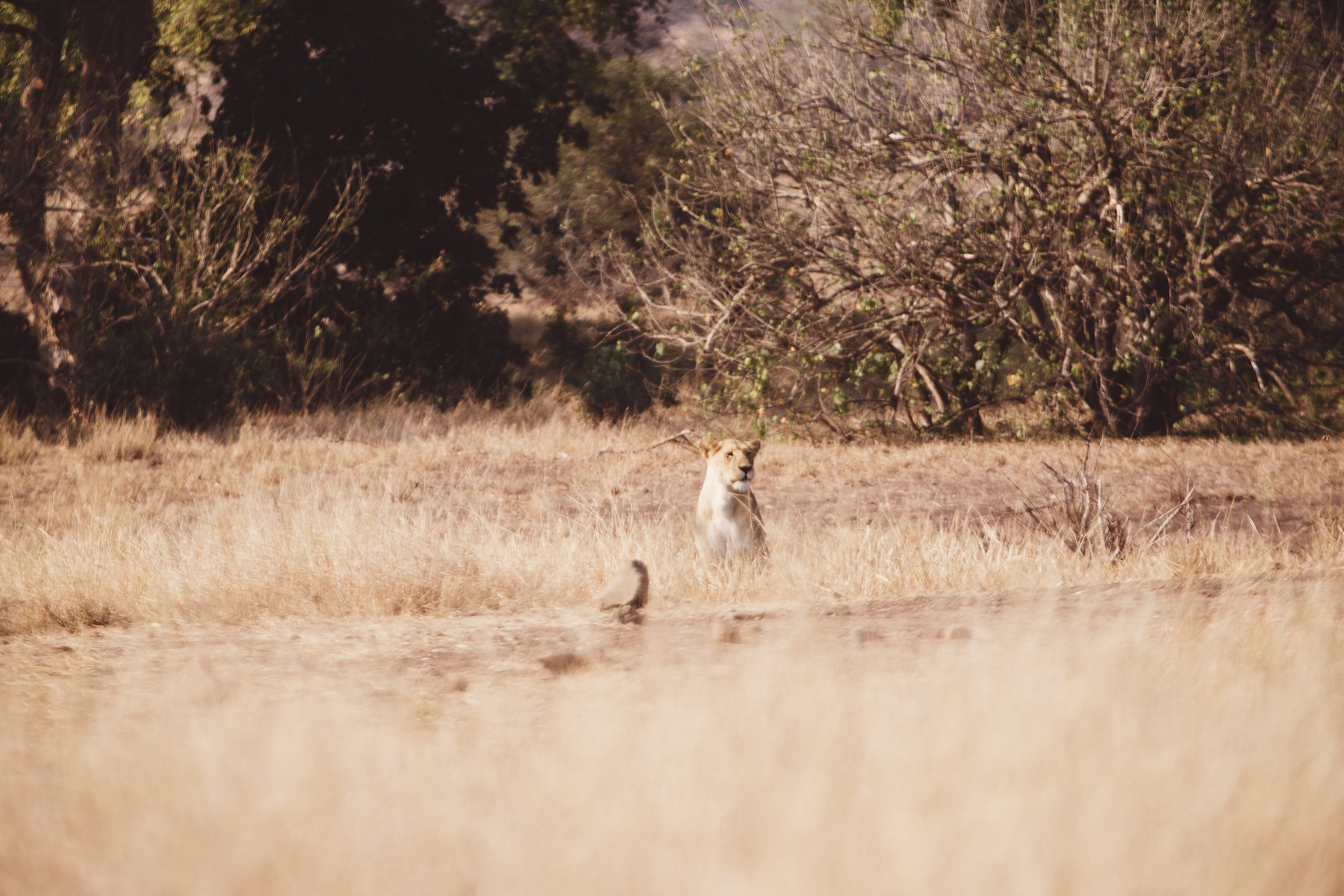
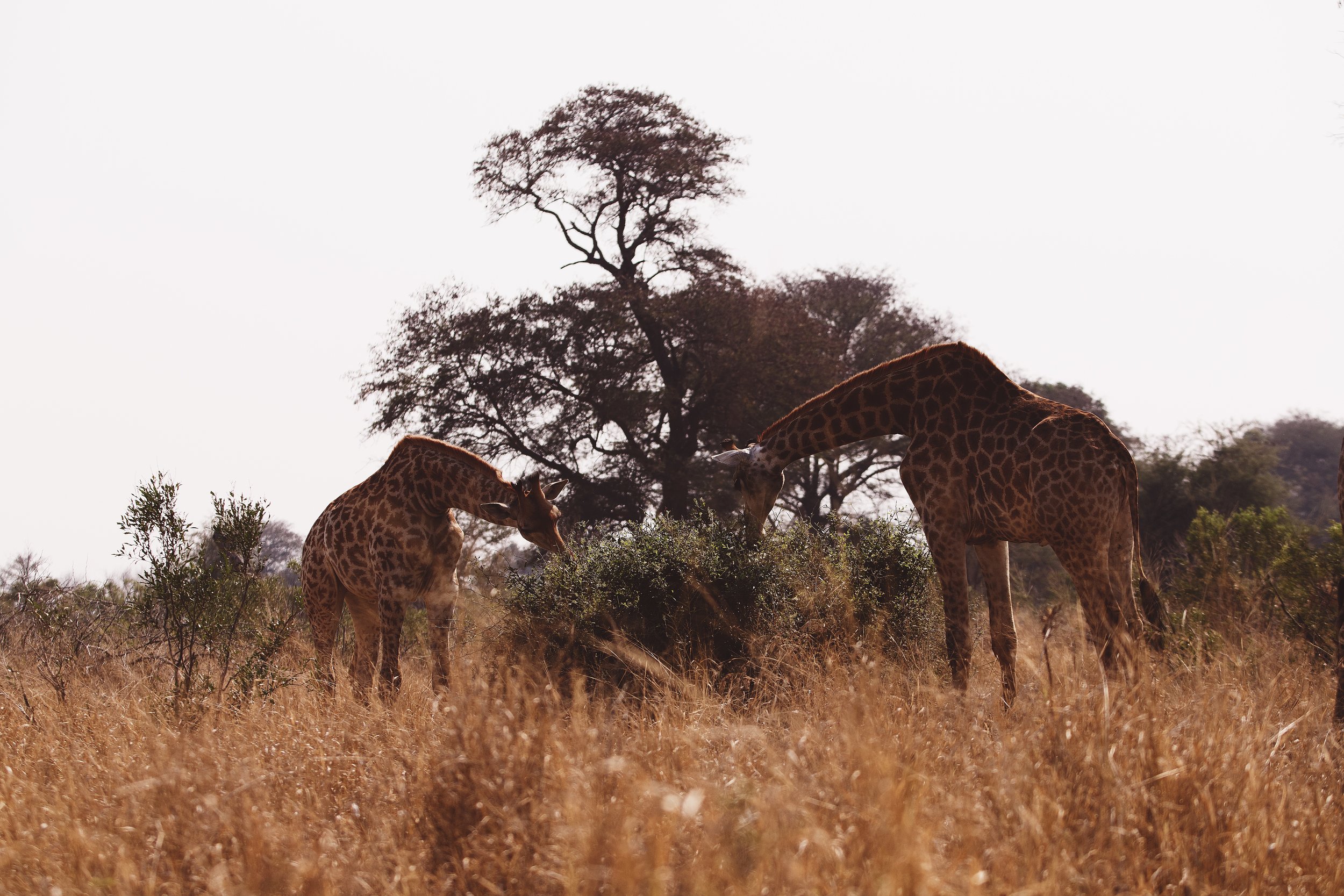
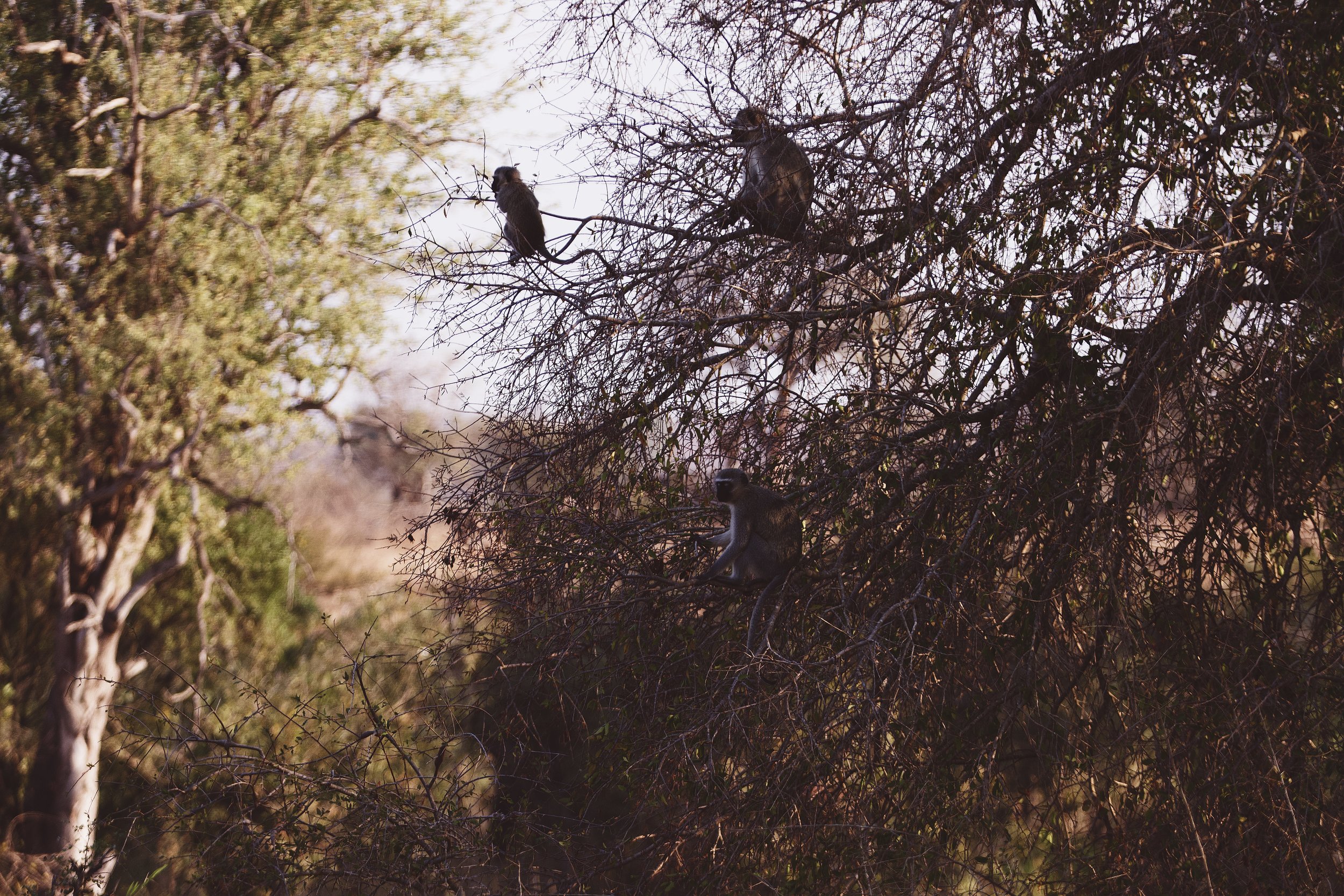
tembe elephant park lodge
To get to Tembe was quite a journey. We caravanned with our family from Kruger and stayed the night in Nelspruit, a larger city just south-west of the park. We were told by several people that it’s a relatively safer city, especially compared to Johannesburg, but we weren’t taking any chances so didn’t do much driving at night. We found a really cool accommodation called the Zebrina Guesthouse that I would highly recommend if you find yourself in the area. The rooms were spacious and updated, the gated lodge had its own parking and restaurant, felt very safe and was really reasonably priced. We left very early the next morning to make the 6 hour drive to Tembe Elephant Park in order to arrive in time for the afternoon game drive at 3pm. It was an unbearable amount of driving, to say the least, so I wouldn’t recommend this route unless you are dead-set on roadtripping.
Tembe Elephant Park a Big 5 game park and is home to some of the largest elephants with the biggest tusks in the world. It is a small lodge, consisting of about a dozen private “glamping” tents and an intimate camp - I would again call this an “affordable luxury” accommodation option. The camp is owned and operated by the Tembe tribe on their sacred land in the middle of the dense bush where guests are greeted by a beautiful tribal welcome song upon arrival.
The tent suites are hidden within the bush, making it feel like you’re all alone in the wild. Don’t worry, there’s a large fence surrounding the camp to keep the larger animals out, but smaller critters do wander throughout the camp. The tents all include plumbing and an outdoor shower, heated blankets and even a separate massage tent (just don’t make the mistake we did of booking an evening couples massage as a storm rolls through… one of the coldest hours of my life!). The tents were very cool, well appointed, seriously comfortable and something that I’ll never forget - there’s nothing like the exhilarating feeling of sleeping with just a thin canvas separating you from the wild animals on the other side.
Unfortunately for us, we arrived right as a storm came through and every day of our stay at Tembe was wet and frankly, miserable. This was the only time in the entire trip that we stopped a game drive early and even skipped some of the drives completely, simply because the weather was so bad and there were few animals out to see. The bright side is that it was probably the best place for us to get some much needed rest after the constant driving and traveling we had been doing, cozy inside our tents under a warm blanket and a cup of tea by our bedside. That’s not to say we didn’t get a few incredible glimpses while there. The elephants are clearly in their element and there is great love for them by the Tembe tribe. Some of my favorite shots are below, plus photos of our private tent.
My Type-A Summary of Tembe Elephant Park
Tembe Elephant Park is a great safari option if you are driving and will be in the area and want a private game experience on a budget. The tent suites are very memorable, this is one of the few tribe run and owned parks and it’s got a plethora of huge, gorgeous elephants. If you’re a true luxury traveler, this is not the best option for you and the negatives involve that it’s a hard location to reach, the camp is small, but the park is rather large so it can make spotting wildlife harder. In addition, I found the guides less engaging during the game drives and the experience overall is less refined.
Hluhluwe-Imfolozi Park, Mpila Camp
From Tembe, we continued with our family to Hhuluwe-Imfolozi Park (which is both hard and fun to say); a relatively large state run park a 3.5 hour drive south of Tembe. This is a beautiful and expansive self-driving game park, packed with wildlife where you’re almost guaranteed to see a plethora of white rhino, and if you’re lucky even one of the rare black rhinos. At the entrances of the park, there are large craft markets that are reasonably priced and serve as a convenient place to buy souvenirs for home (I bought a wood carved giraffe and salad tongs).
Mpila Camp
There are three state-run accommodation options within the park (that I’m aware of): Hilltop, Nselweni and Mpila. We rented a large 3 bedroom house at Mpila Camp for us to stay together… which left much to be desired. Unfortunately, the state run camps have really gone downhill over the years and are poorly managed and run (this is not just my opinion, I heard this sentiment from many South African’s we spoke to), although some are newer and better than others. The house was really large with 2 baths, a full kitchen, dining room, living room and outdoor patio, but it was fairly dusty, looked like it hadn’t been updated since the 1980s and instead of fixing a broken bathroom faucet, it was replaced with a plastic shower head. Even the store at the camp was sad, with very few groceries and really outdated merchandise.
What made up for the undesirable accommodations was literally being surrounded by wild animals. This was by far one of the most exposed camps we stayed in, with a few higher strings of wire keeping elephants, rhino and giraffe out, but that’s about it. Inside camp were baboon, zebras and I even heard that a pride of lion had walked right through a few days prior. One afternoon we were all sitting in the living room and I looked through the window and there was an elephant staring back at me! As you can see from the photo, this is my sister-in-law standing between our house and the “fence”. The sunsets from camp were incredible and at night we would shine our flashlights out the window to catch the hyenas as they walked by our porch, cackling at the evening sky.
Warning: Hyenas are not afraid so if you decide to do some outdoor grilling, just don’t be surprised if you find yourself fending off a few as they beg for an invite to dinner. A strong and extra-bring flashlight is a helpful tool for scaring them off, which we were equipped with thanks to our family friends who said not to go without one.
My first (and probably last) Walkabout
The whole family signed up for a “walkabout” through the bush with a professional guide, one of the unique activities the camp offered. I was pretty adamant I would not be attending this little family outing… someone needed to stay alive to return the rental cars, am I right? But seriously, I was terrified. Walking through dense terrain with nothing to protect ourselves but a guide with a single rifle sounded like a death wish, and considering I was the smallest and probably slowest of the Slade pack, I was less than confident about my fate. After a mixture of guilt, peer pressure and FOMO, I put my big girl boots on and walked ever so quietly and cautiously into the bush. Our trained guide was very knowledgeable and during our 2.5 hour walk educated us on old bones we spotted along the way, led us to picturesque vistas and told us a few terrifying stories of running into a buffalo just a few weeks before (no big deal, only the animal that causes the most deaths in South Africa!). But the more we walked, the calmer I felt and the happier I was to have this experience with my family, especially with my father-in-law who was once a game tracker himself. Luckily for us, the only animals we ran into along the way were a tower of giraffes (apparently a group of giraffes is called a tower, who knew? Thank you Google) and they were way more scared of us, so we weren’t able to get more than a few hundred yards away. It was actually pretty eerie how absolutely quiet giraffe are, we had no idea they were even there until we were next to them (which also made me wonder what else was out there that I wasn’t aware of ~pondering emoji~). Check out the last picture of the giraffes below, how many can you spot?
Hhuluwe-Imfolozi Game Park, Self-Driving
Hhuhluwe-Imfolozi is an incredible Big-5 reserve. The driving is easy and there is so much to see. I recommend that you keep your driving north of Mpila Camp as we saw next to nothing and it becomes much drier southwest of camp. There were so many rhino, more than we saw anywhere else during our journey. It’s a good idea to stop at the camps to check the maps for where specific animals have been spotted and also ask people you run into. Hilltop Camp is a nice place to stop for tea and lunch since they have a restaurant and you’ll get excellent views of the reserve. Hhuluwe-Imfolozi is worth spending two nights at, but if you don’t have that much time, it’s worth the drive through this beautiful park.
andbeyond PHinda Private Game Reserve, forest lodge
After a week straight with the family, Colin and I broke off on our own for a few days for some much needed rest and relaxation. We backtracked about 2.5 hours north to our next stop, andBeyond Phinda Big 5 Private Game Reserve in Kwazulu-Natal where we stayed at the ultimate in luxury, Forest Lodge. The time we had at andBeyond Phinda was unforgettable and if I could only go back to one place again, this would be it.
How do you describe perfection? Imagine ultimate relaxation, extreme exhilaration, surprises around every corner and the highest quality in food, service and lodging that you’ll find anywhere in the world - that’s what you’ll find at andBeyond Phinda Forest Lodge. We loved our time so much that we actually extended our stay an extra night and missed a day with our family because we just couldn’t leave. I recommend at least 3 nights here to get the most out of your time here - it’s worth every penny.
The Luxury Forest Lodges
From the moment we checked in, we felt like family - sitting under a shady tree, we were handed a glass of champagne, provided with an introduction then led to our private lodge that stands high above the forest floor floating amidst the trees. With floor to ceiling glass on all sides, it was hard to distinguish where the wilderness stopped and the indoors began. Within moments of putting our bags down we watched a red duiker race by our window and we knew we were in for an epic adventure.
The rooms are simply stunning - a fluffy king sized bed sits in the middle of the room with only the outside trees adorning the walls like massive pieces of art, the bathroom has a large soaking tub, with candles, bath salts and a robe perched beside it enticing you in, and there’s a large covered porch, complete with outdoor seating and a mini-bar with snacks so you can enjoy happy hour right from your room. The management has truly thought of everything as you even have your own set of rain boots and umbrellas in case of wet weather, plus yoga mats for getting your Zulu zen on.
andBeyond Phinda has several lodges spread across the private game reserve, each with its own unique look and feel - but as I mentioned before, they all share the same spectacular location for game drives so no matter which one you choose to stay at, you can expect an unforgettable experience.

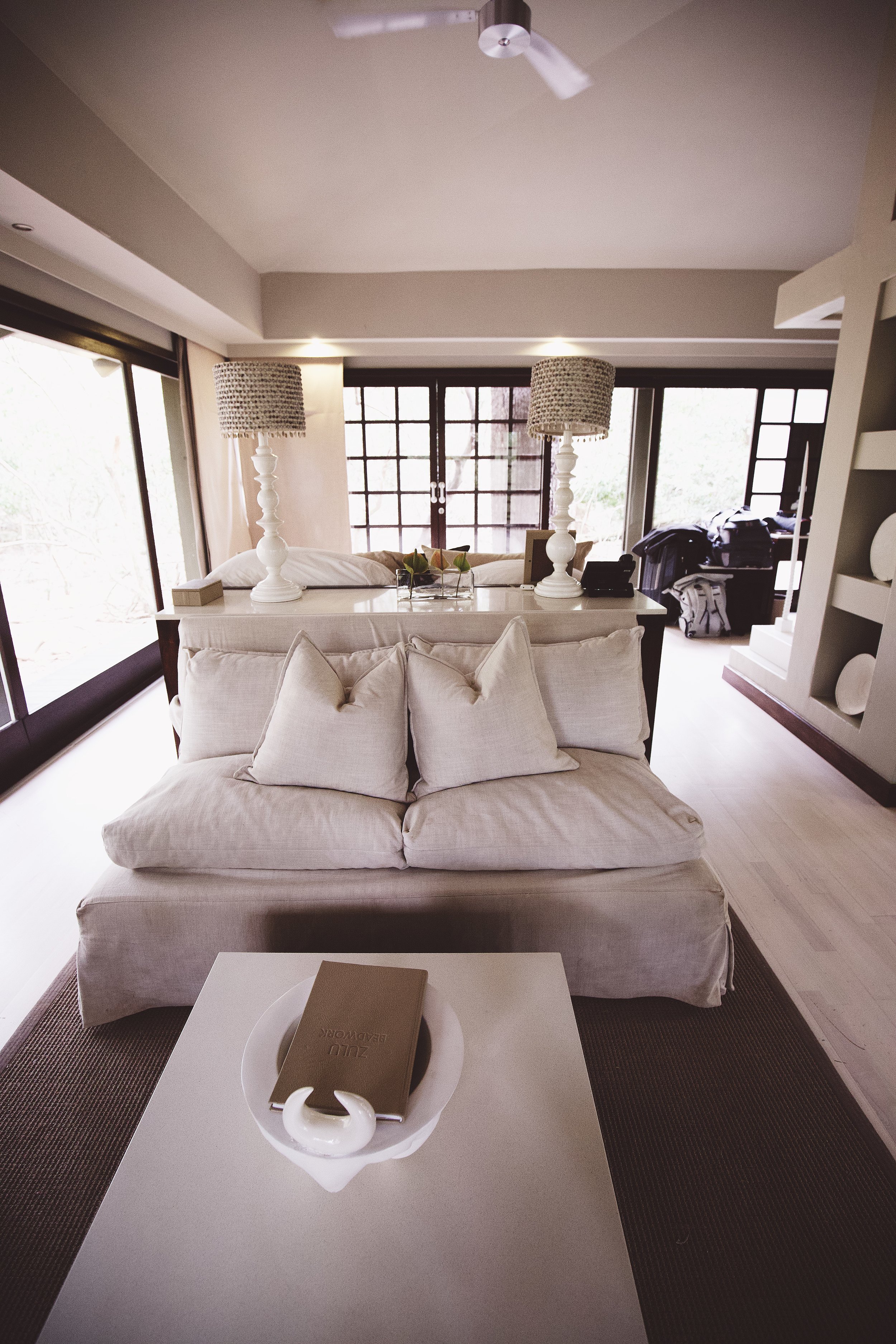
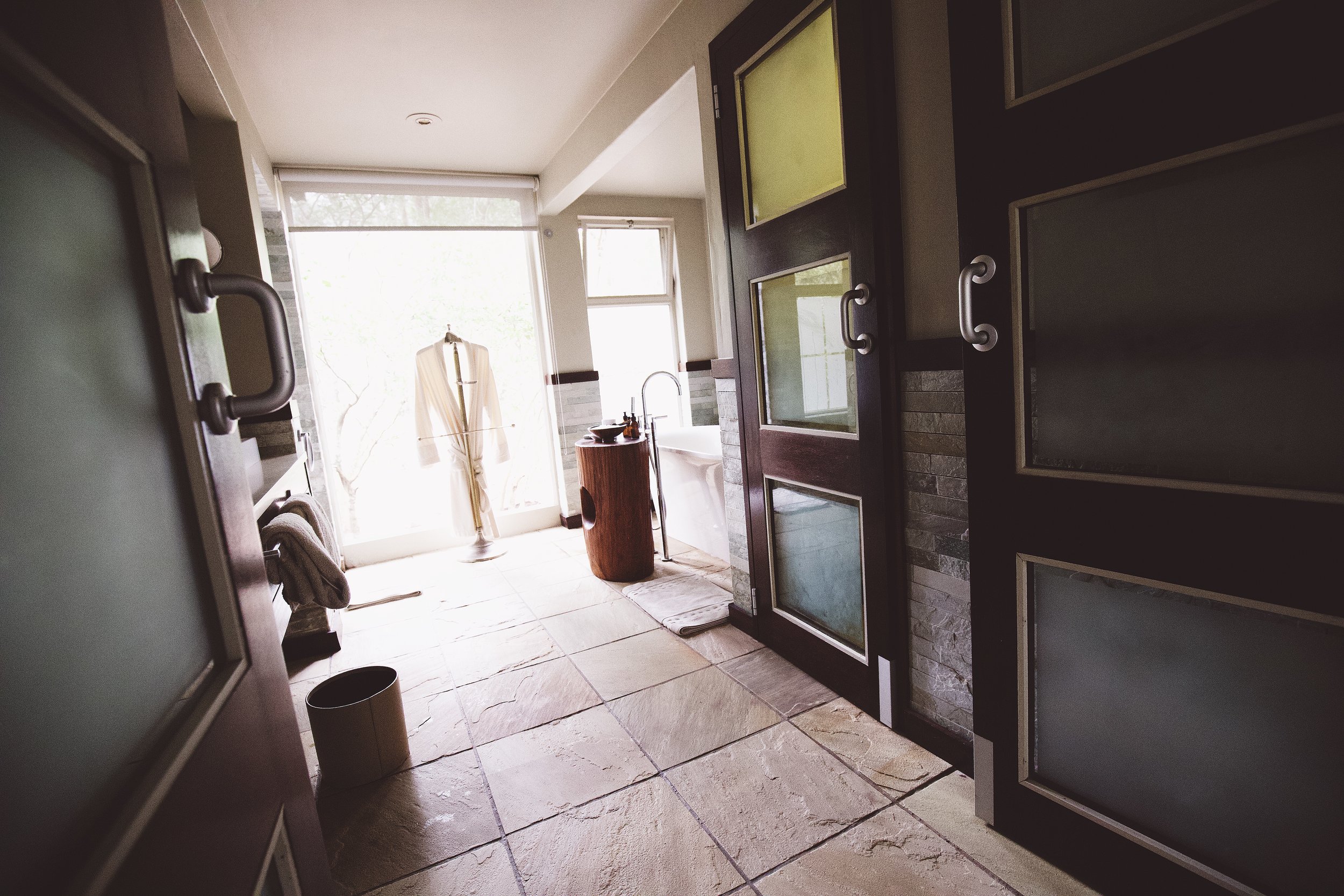

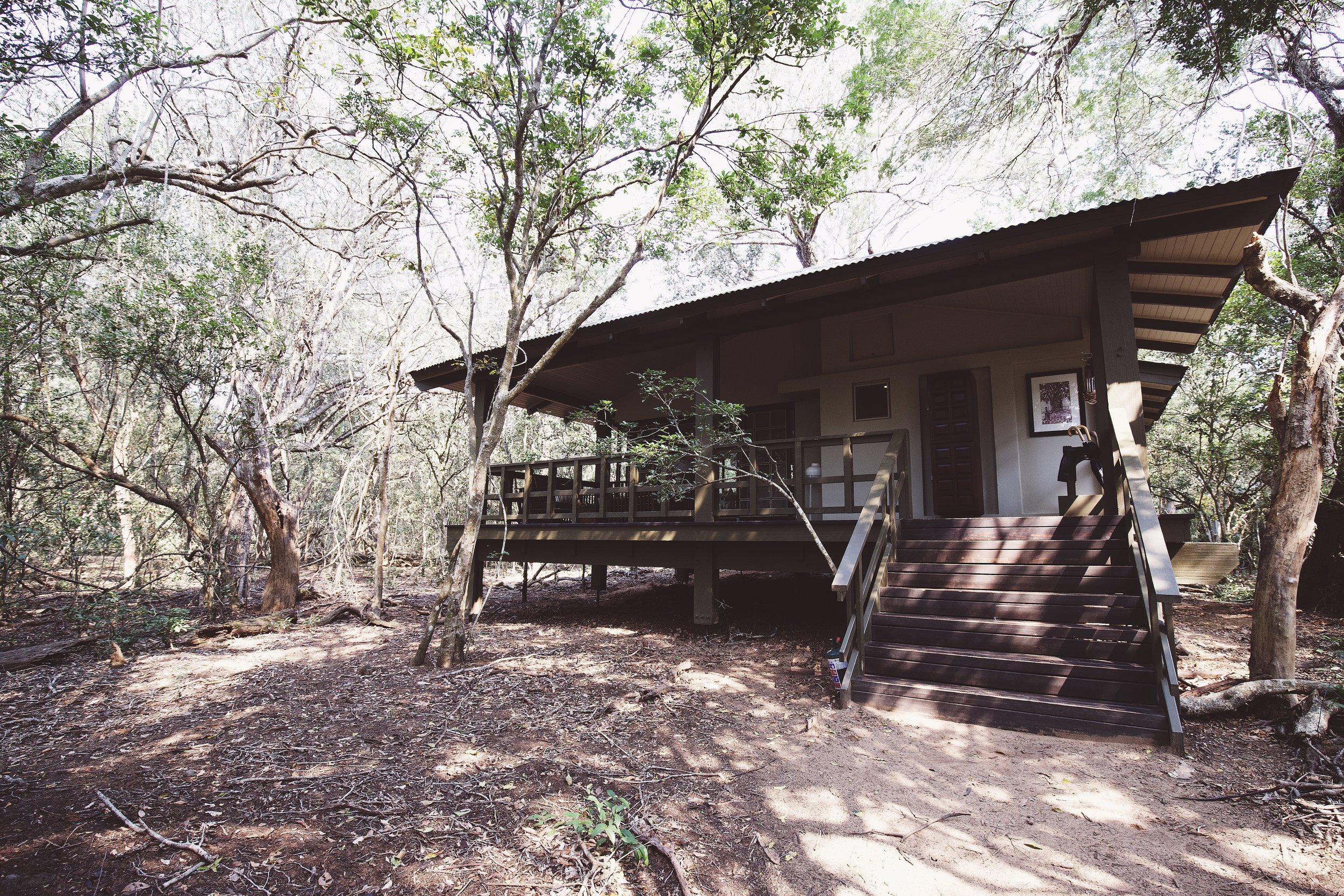
The Grounds and Amenities
Part of what makes the Forest Lodge so special is its unique eco-system in a sandy, dense forest and also how small it is. With only 16 rooms, there’s only a few dozen guests at a time and the grounds blend right into the serene scenery so the animals just wander around as if they are right at home. There’s a really great gift shop with quality, locally sourced items (I bought some gold salad tongs that are my absolute favorite), there’s the main lounge/restaurant which looks out over an open meadow where animals stop for a drink and monkeys swing from the trees. The best way I can describe it is that it feels like you have a front row seat to an iMax movie about South Africa, except you’re actually sitting at lunch sipping a glass of wine - there’s nothing like it.
The food is exquisite, true five star drinks, dining and service for breakfast, lunch and dinner. Most meals are served at the main lounge; however, there may be a few surprises thrown in that I won’t ruin for you. Even afternoon tea and snacks during game drives are filled with delicious treats. Between eating fabulous food and game drives, the best place for some rest and relaxation is by the infinity pool, surrounded by chais lounges. It’s also a prime spot for animal watching, with an open “window” to the meadow right from the pool. Need a drink? Not to worry, there’s a self serve bar right there for you. I’m telling you, they’ve thought of everything!
The Forest Lodge is dedicated to ensuring guests leave with lasting memories by creating epic experiences tailored to your interests. For us, they heard we loved to cook so they set up a private South African cooking lesson for us with the chef. My husband had also expressed interest in doing a walkabout (not me, no thank you), so they set up a private session for him with two guides and tracked rhino… on foot! It was one of the best times of his life.
One more amenity that blew my mind was the spa that comes right to you. I booked a 60 minute aroma therapy massage (at an added, but reasonable cost) and instead of heading over to another building, I waited in my plush robe in my room and the masseuse set up a table outside on the patio with the birds in the background to soothe me into complete euphoria. Especially after long travel days and bouncy game drives, a deep massage melted away all of the stress.
Safari Game Drives
The game drives at andBeyond Phinda Private Reserve were the most magnificent animal viewing we had during our entire South African adventure. There are two game drives a day, one in the morning and one in the afternoon. In the cool, early mornings the comfortable, open jeeps even have blankets and heating pads on each seat to keep you warm, such a nice touch when it’s dark and you’re barely awake. Unlike other resorts we visited, andBeyond Phinda limits the number of guests per vehicle (usually around 6 to 7 per 9 seater vehicle), so that you’re not squished in like sardines. It also means no one has to ride middle - a huge plus for the photographers out there. The drives are also very planned out, trying to group guests together based upon check-in and check out dates so you are on the same “viewing” schedule… the last thing you want after 3 days of game drives is having a newbie asking to stop for every giraffe and springbok that passes by. We also got to spend a lot of time with the people in our group, some we are still friends with today (shout out to our honeymoon couple Kristin and Robert - we miss you guys!). After being loaded into your luxury LandRover, you are whisked away for 2-3 hours on an exhilarating South African safari through the 28,000 hectares and seven distinct ecosystems of the Phinda wilderness.
Our extremely intelligent, insightful, and super entertaining guide Warren made our entire trip. You’d think that day after day, taking travelers out on drives would get old, but I’m pretty sure he was just as excited as we were every time we spotted anything, maybe even more! We also felt totally safe with him, because he was cautious, cared deeply for the land and the animals, but was also ready to take smart risks to provide an incredible experience. Warren’s enthusiasm was contagious and his passion for his work was inspiring; someone with a true heart for nature. While I’m clearly partial to Warren being the best guide ever, I heard these sentiments about all of the guides and trackers there. They are happy to answer questions and are full of knowledge about the land that they love, so don’t be afraid to come with all of your curiosity.
The game drives were downright exhilarating. There were The Big 5 plus so much more, all thriving at Phinda and the guides and trackers do their best to ensure you see it all. From a parade of elephants staring us down to the infamous dung beetle, we were in the center of all the excitement, while doing some intense off-roading through bumpy and dense terrain to get the perfect shot and a clear view of the action. Often the drives felt like we were in the real-life version of the Indiana Jones ride - my husband was loving every second of it, laughing and grinning from ear to ear. Of course, there were some slower moments as there always are with game drives, but the heart pounding stretches when we were tracking down lions through dense brush only to stop dead in our tracks by a deep warning roar just a few feet away or flooring it as we tailed a cheetah chasing after its next meal left us needing time to catch our breath! While our guides were dedicated to the chase, we also felt like they were much more conscious than other places had been to respect the animals in their element and tried to avoid disturbing them at all costs, especially at night.
There are a number of delightful surprises that occur throughout the drives and in general throughout your stay at the Forest Lodge. During high school, I spent summers going to Younglife camps that were easily some of the best times of my life - they made sure that every experience from interactions with staff to big events was created to make campers feel special, cared for and amazingly loved. Being a guest at The Forest Lodge was the only time outside of Younglife I’ve experienced anything remotely close to that same feeling and I don’t say that lightly. There’s heart behind every little thing they do at Phinda and I feel lucky to have experienced it, even for only a few short days. I don’t want to give away any of these great surprises, so just know you’re in for a treat… speaking of treat, during the morning drive the guides often bring these breakfast bar things that look kind of dry and boring, well they are freaking delicious and I call them crack bars so be sure to eat as many as you can (and put a few in your bag to drop in the mail and send my way!).
andBeyond’s Dedication to Conservation
The andBeyond company started with Phinda as its first location and have since grown to be in 3 continents. Their mission is to care for the environment, wildlife and people of the community they are in and to make it a better place. This mission is actively lived out at Phinda through their strong partnership with the local Zulu tribes to manage the land and share in the success as well as their prolific anti-poaching and conservation programs whose impacts stretch far beyond their own properties. If you’re curious about all that this inspiring company does, I recommend reading andBeyond annual impact report - I promise it’s more exciting than it sounds! And quite impressive.
The Midlands Meander, An Escape to the South African Countryside
The next part of our journey took us away from the wild safaris and to the rolling hills of The Midlands Meander for a bit of lux country living. About a five hour drive from Phinda and Hhuhluwe, the Midlands Meander is an area well known for its artistry, delicious food scene and authentic local shops along a collection of routes and is a common location for weddings and romantic retreats. It’s a really great place for shopping; we bought everything from an nguni skin rug and leather slippers to local honey and a ton of biltong (South Africa’s version of beef jerky).
This is actually where my father-in-law grew up and his family owned a beautiful farm
The Hartford House, Mooi River
We stayed for two nights at the Hartford House, which is an award winning hotel and restaurant on the famous Summerhill stud farm. It’s as close to being in the movie The Secret Garden as I’ve ever been - amidst the luscious gardens, beautiful horses, still waters and peaceful pathways, it’s a true South African oasis.
My husband’s family has deep roots in the horse racing and breeding industry; nearly every male in the family has made a name for themselves in South Africa and internationally for their expertise with pure bread stallions. What was even more special was that Colin’s uncle actually ran the Summerhill property at one point, intimately connecting us to this unique property.
The Grand Hotel Suites
The original house is grand and exudes classic luxury. Dating back to the 1800s, the Hartford House was originally owned by some of South Africa’s elite historical figures. We stayed in a stunning suite within the main home, which was once the master bedroom of Sir Fredrick Moor, South Africa’s first prime minister. Bigger than most homes, the suite had two full bathrooms, a foyer, king bed, fireplace and a vintage clawfoot bathtub which looks out over the gardens that would make even Mariah Carey jealous. With a bottle of sherry waiting for us in the foyer and a door leading to a private courtyard, we were in heaven after weeks of exhausting travel.
Throughout the property there are other accommodation options as well, including grand, modern lakeside villas and quaint boutique cottages. No matter where you stay, you’re guaranteed a blissful retreat in complete tranquility.
Grounds & Amenities
There’s a plethora of things to occupy your time with while staying at the Hartford House, like taking a dip in the pool, hopping on a mountain bike, strolling through the gardens or exploring the horse stables. But there’s nothing like a relaxing spa day to completely calm your senses and like everything else at the Hartford House, the wellness center is just as fabulous. The talented women who run the spa are absolutely lovely and can lure you to sleep with their magical touch. Just be sure to make reservations far in advance because the spa treatments are not a well kept secret, guests come from far and wide to get massages and facials so appointments fill up quickly.


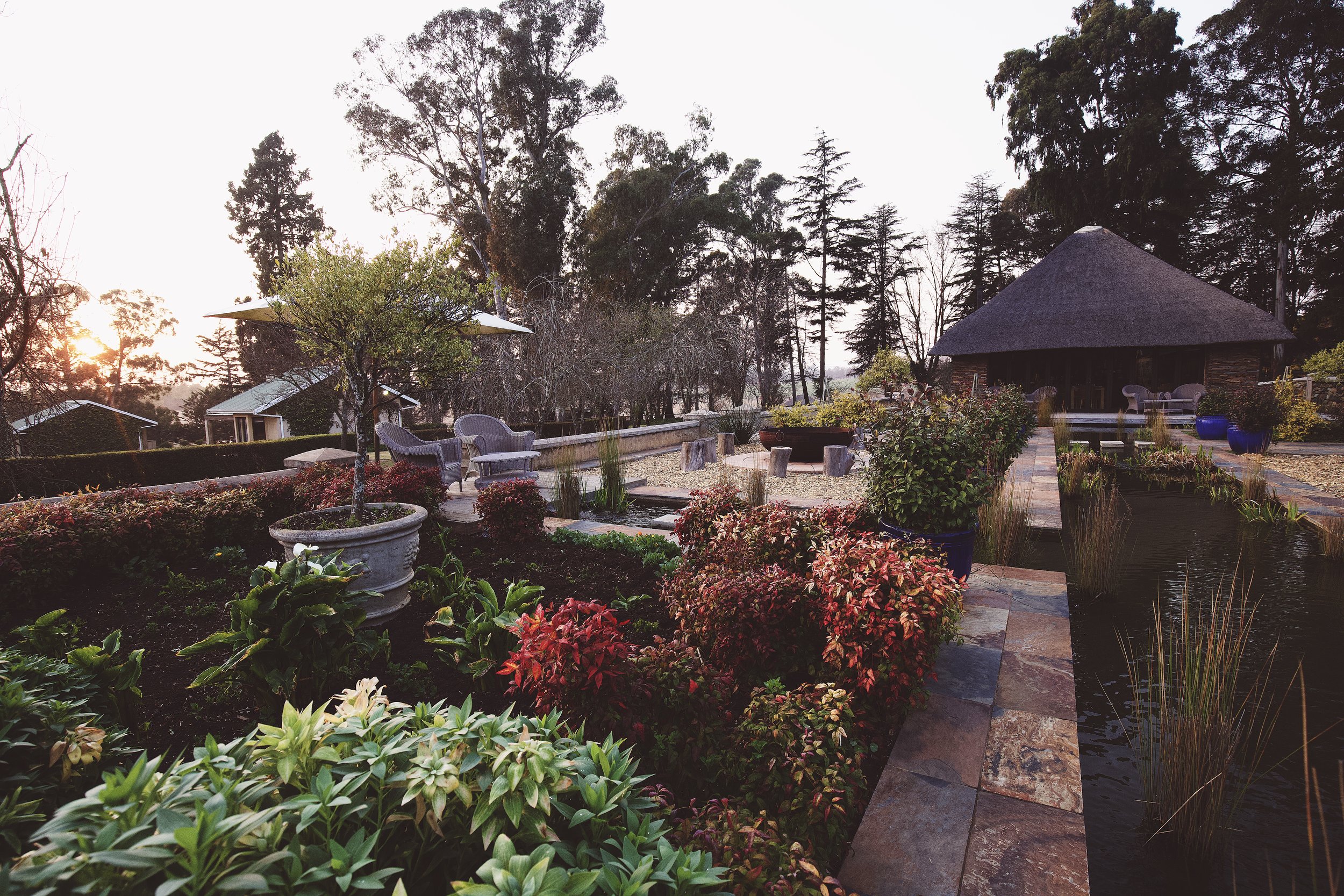
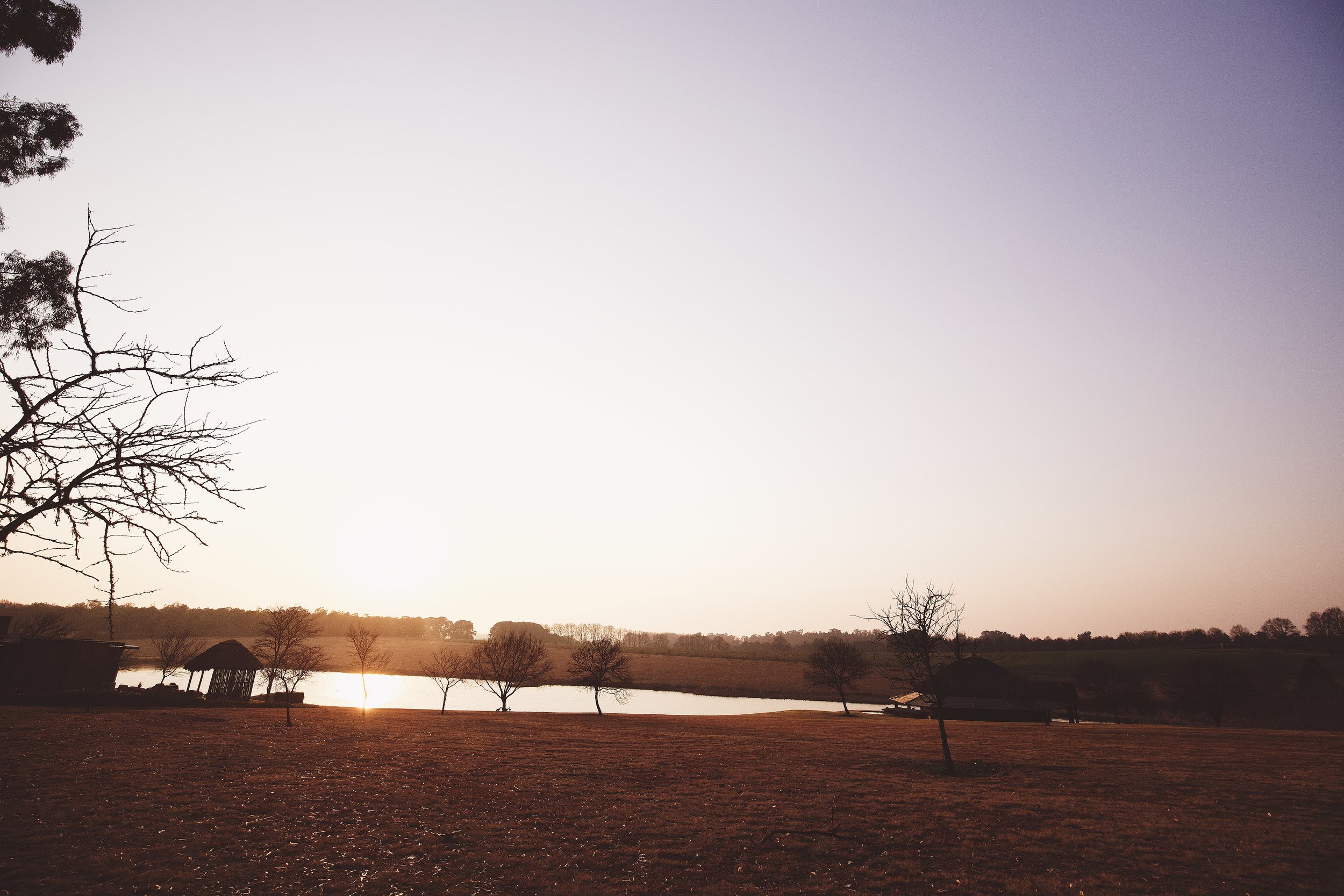
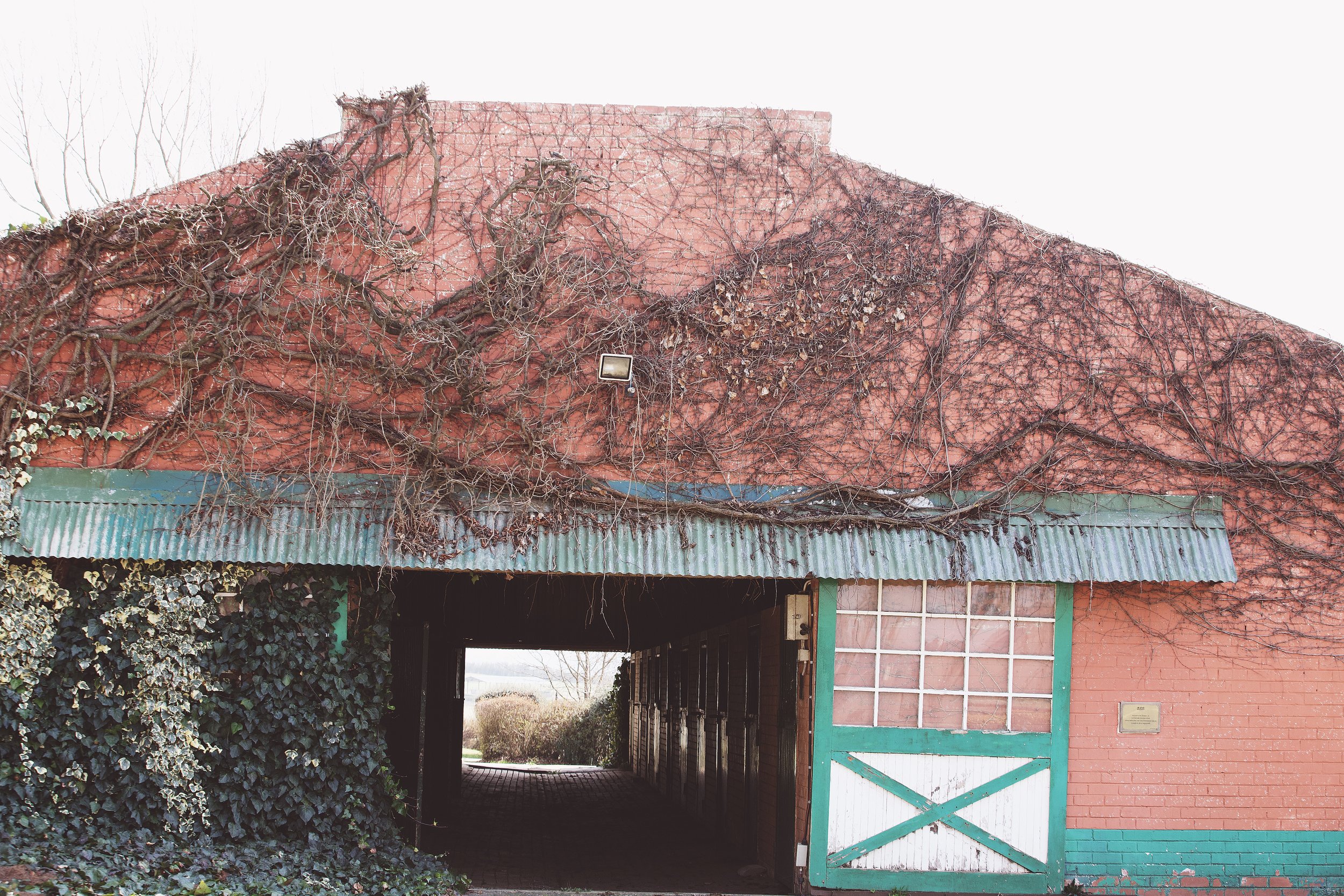
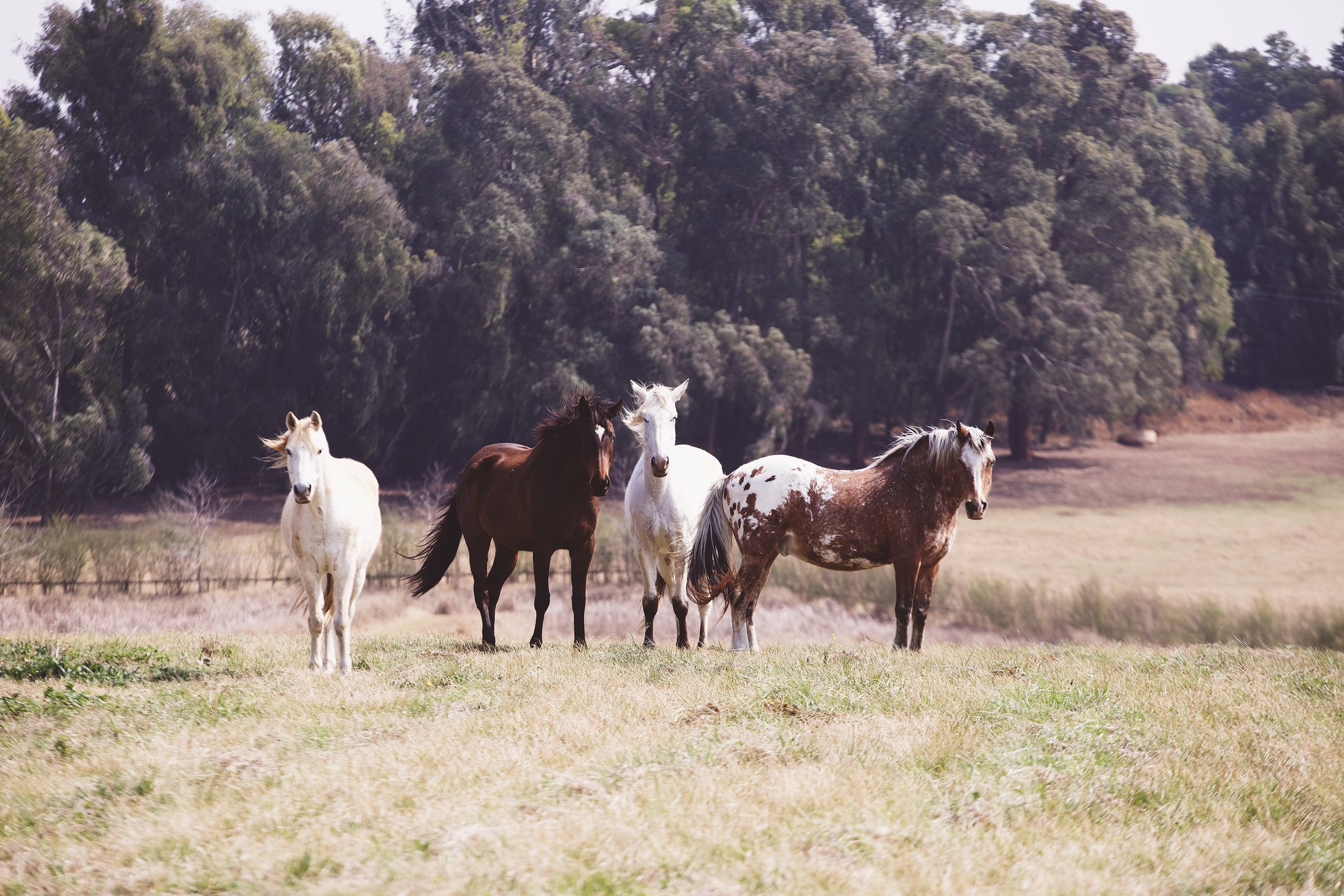
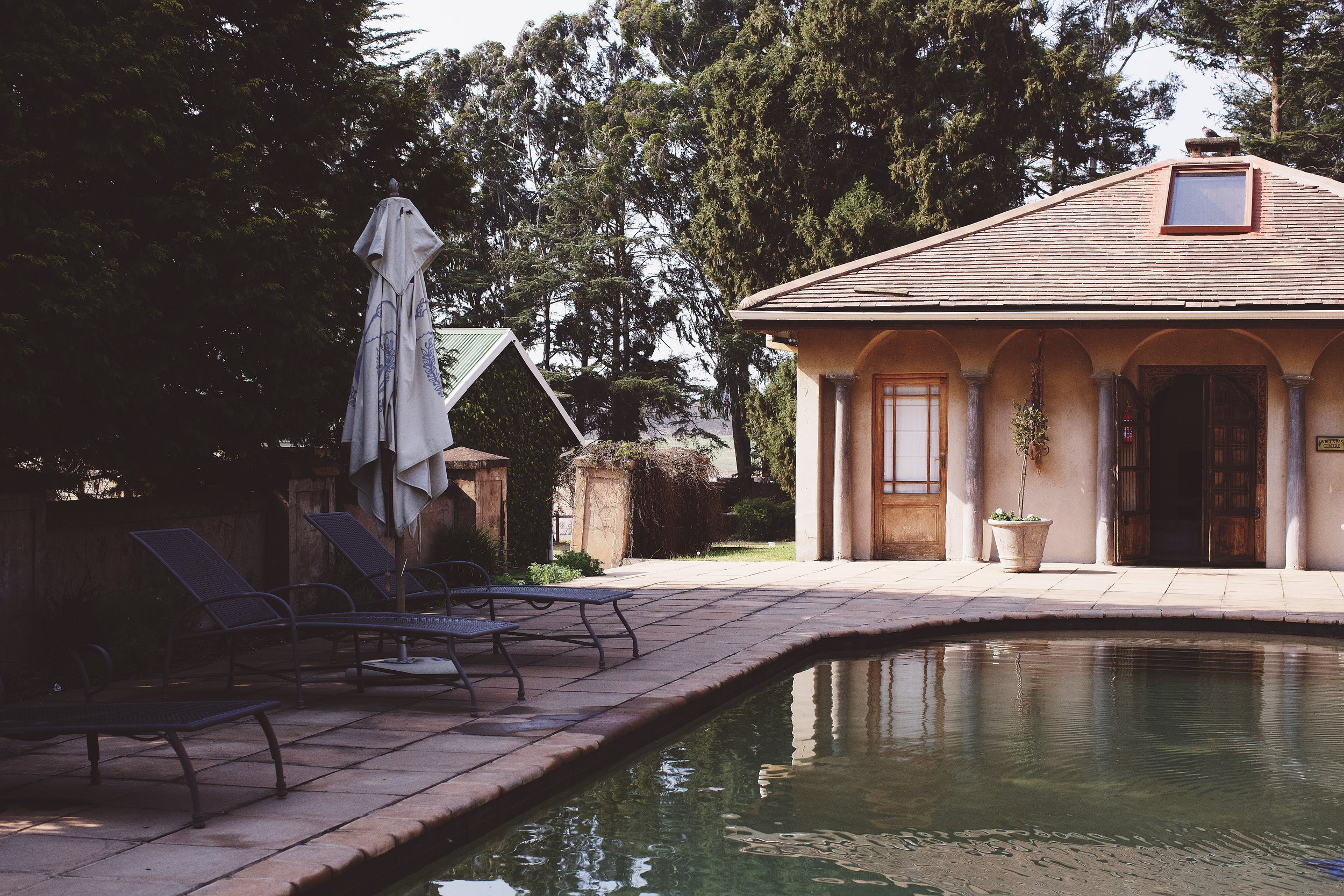
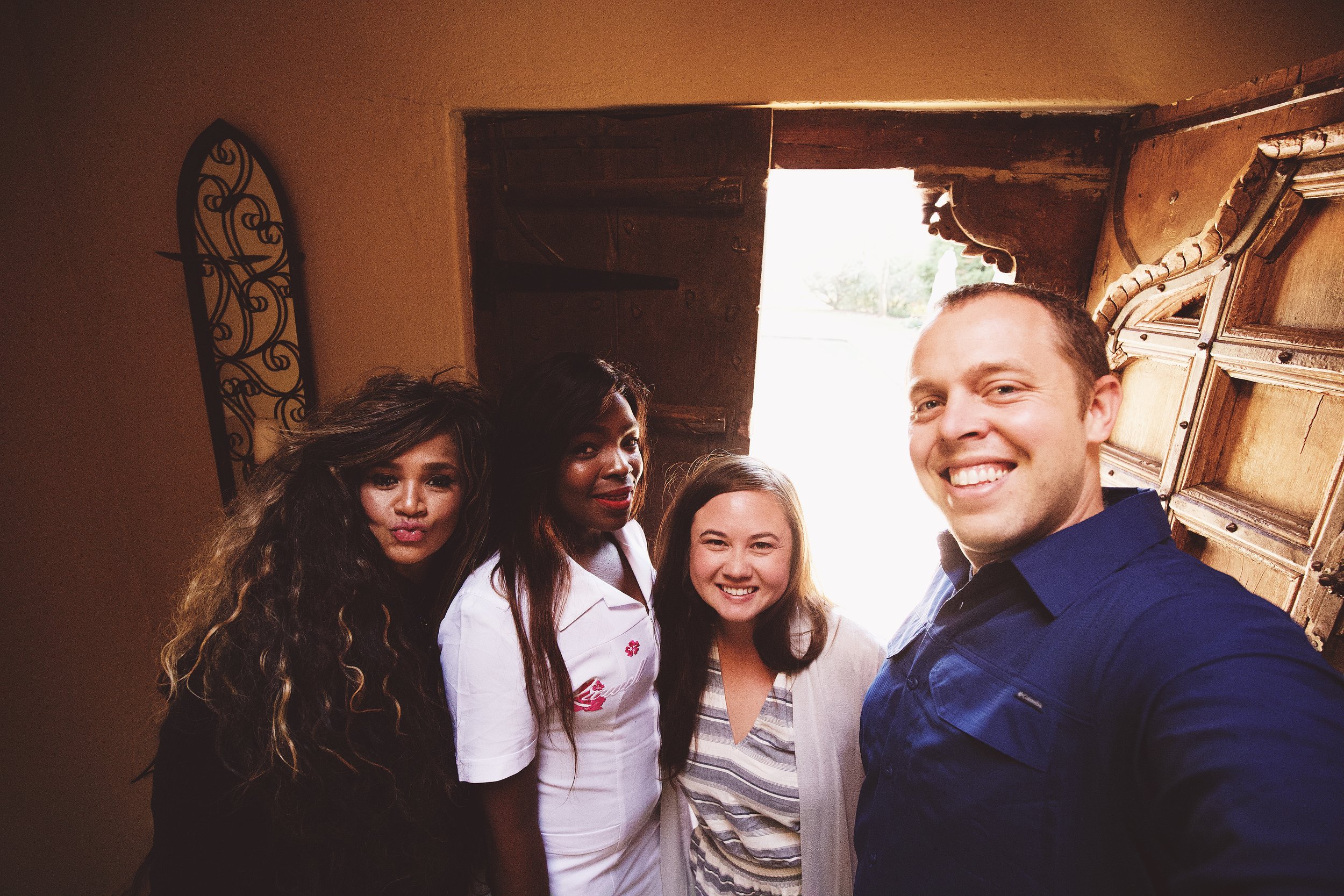
The Hartford House is a Foodie Haven
The Hartford House is also well known as a foodie destination and I’ve gotta say that this is where I experienced the best meals of the entire trip. Starting each morning with a buffet of epicurean delights at breakfast, a lunch with trays of petite sandwiches and delicate deserts during afternoon tea and finishing off the day with a chef inspired 6 course gourmet, candle lit dinner - it’s clear why the Hartford House has the honor of being one of South Africa’s top ten restaurants. Under the leadership of Head Chef Chris Papayannes, the Hartford House confidently solidifies its place as a must-visit culinary destination that displays quality, creativity, locally sourced ingredients and total passion in every dish served.
Type-A Meal Tips:
For breakfast, traditional breakfast scones (or scons as my husband says) with cream and jam are to die for and the Eggs Benedict is simply perfection.
Afternoon Tea is a must, but be sure you arrive hungry and don’t have plans to eat for many hours after because it comes with a table full of food and you’ll want to consume every morsel.
The six-course dinner menu changes nightly and is whimsical, thoughtfully plated and showcases modern South African cuisine using the country’s best ingredients. Even the homemade herb butter left me wanting more. Do make reservations as this is the restaurant is both a traveler and local favorite.
The Crab Apple Cottages, Dargle
From The Hartford House, we made our way south through Midlands Meander’s famous Notting Hill Road about 30 minutes, where we met up with our family for a three night stay at the Crab Apple Cottages in Dargle. This stunning property is unique as it has three separate cottage suites for guests, each with a separate bedroom, bathroom, fireplace, kitchen, living room, loft with twin beds and large deck - making it perfect for all of us to have our own space while being in the same location (my way of staying sane while still enjoying valuable family vacations!). Please do note that this is a very animal friendly accommodation so if you have allergies you may want to consider another option as the property is home to dogs, cats, chickens, horses and even a local wild monkey, fondly known as Rafiki.

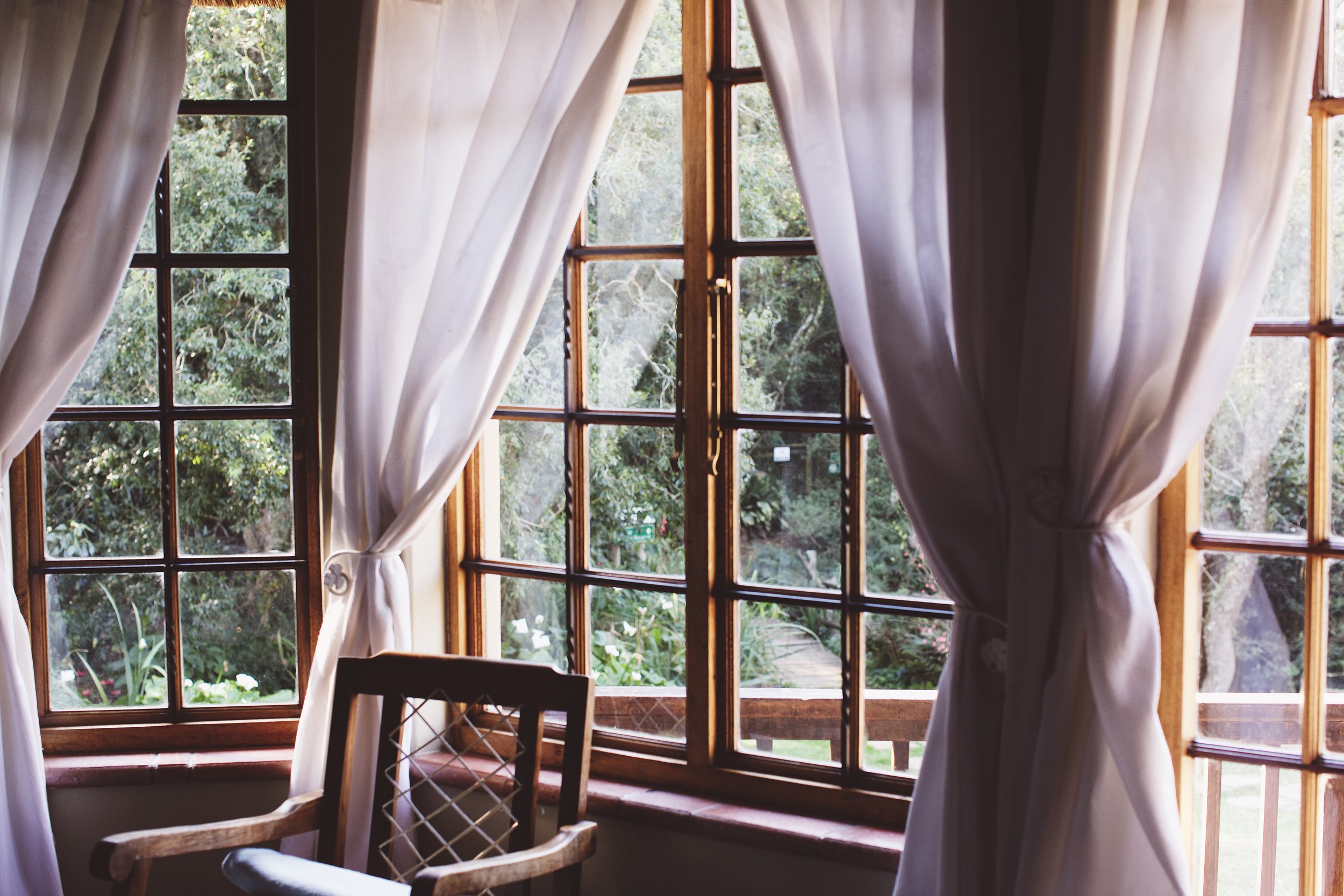
There is also a main house which is home to the ever-so-kind and generous hosts of the Crab Apple Cottages, Barend and Helen. There are few gentler and thoughtful people in the world quite like these two whose love for their many animals, the surrounding natural forest and friends and strangers alike make the experience at the Crab Apple Cottages an everlasting experience.
What makes this place even more spectacular is that it’s actually the place where Colin’s dad grew up - his childhood home sits next door to the Crab Apple Cottages and the surrounding Kilgobbin Forest and Dargle Nature Reserve is where him and his brothers swung from trees and explored as wild children. Unfortunately, the Slade family farm was sold many years ago, but thanks to the Crab Apple Cottages, the family can still return to enjoy a little slice of home.
A Family Photo Session with Laura Jean Photography
This was the first time my father-in-law had his whole family in South Africa together - his wife, two sons and their wives, something he’s been dreaming of for many years. Since this was such a special time for all of us, I thought it would be important to document it properly as we never know when we will all be together here again. After a long search, I found Laura Jean Photography, a husband and wife duo who have a magnificent talent for capturing both people and surroundings in a natural and effortless way. From our first communication, they were invested and eager to capture these special moments with our family, scoping out the area ahead of time and even getting permission from the owner of the original Slade family home for us to take photos at. I’ll never forget this time as we all walked through the forest as my father-in-law told us stories from his childhood and watching him with his boys, goofing off and being completely comfortable in his element. Here’s a few of the shots that Laura and Malcolm captured during our time together.
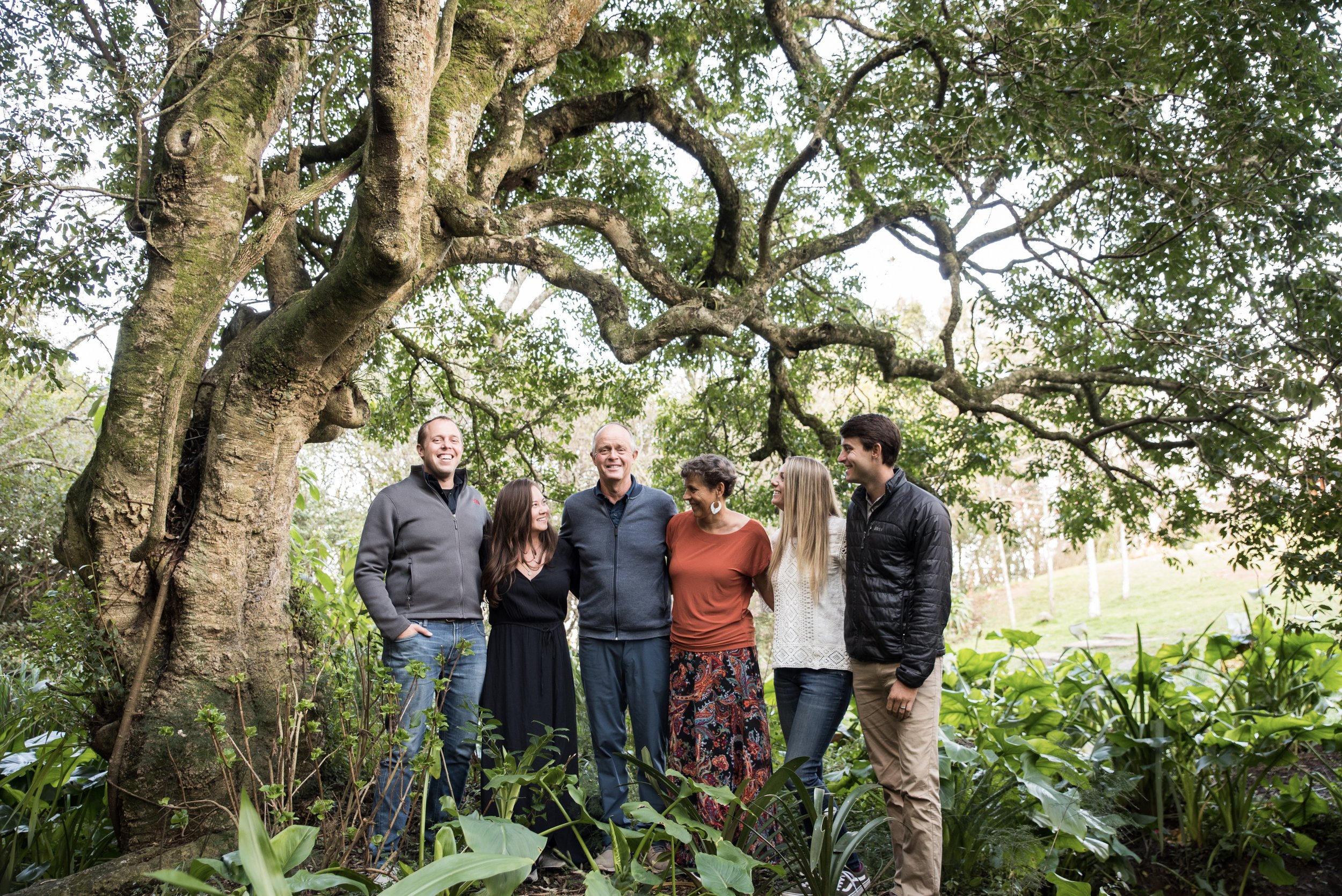

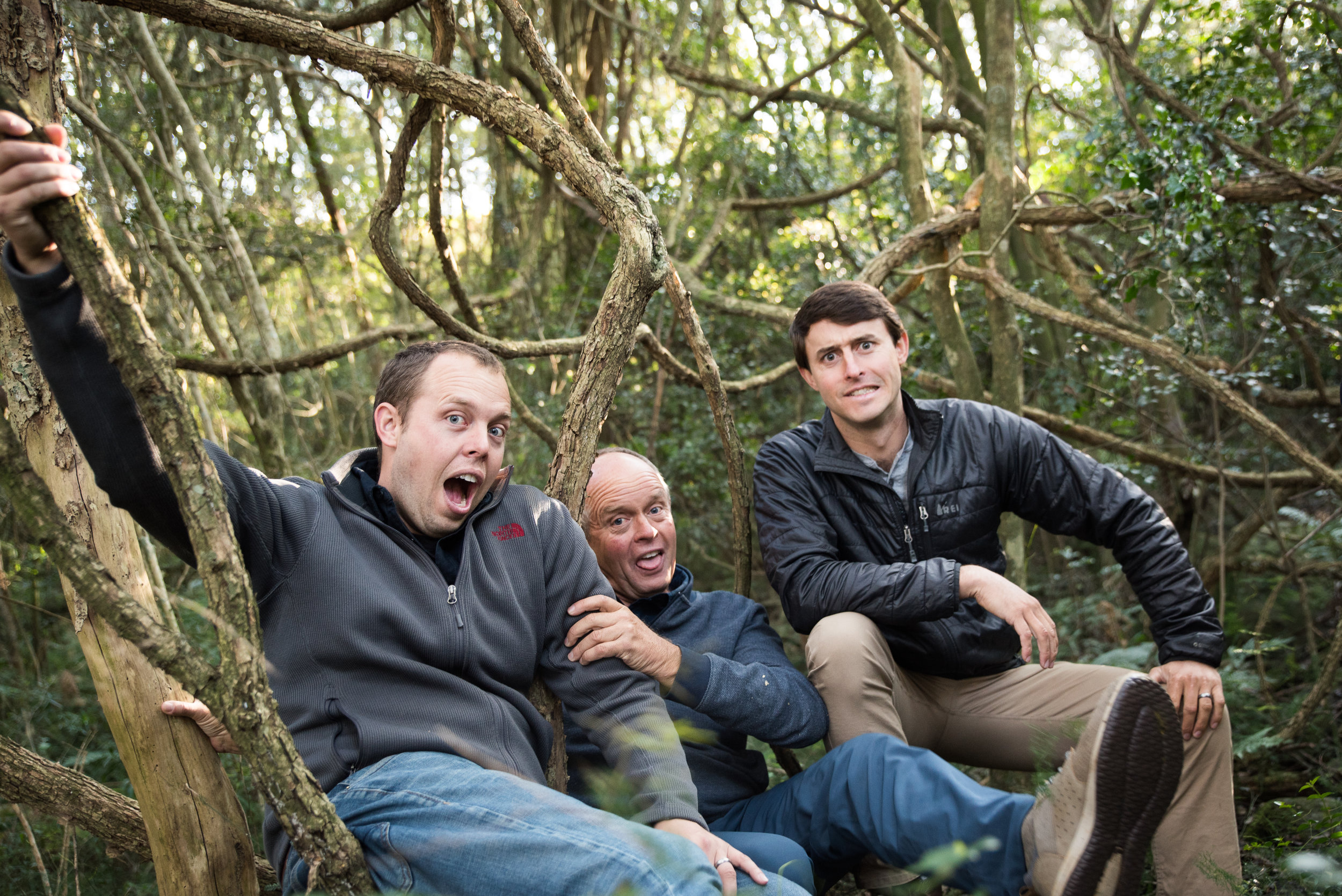

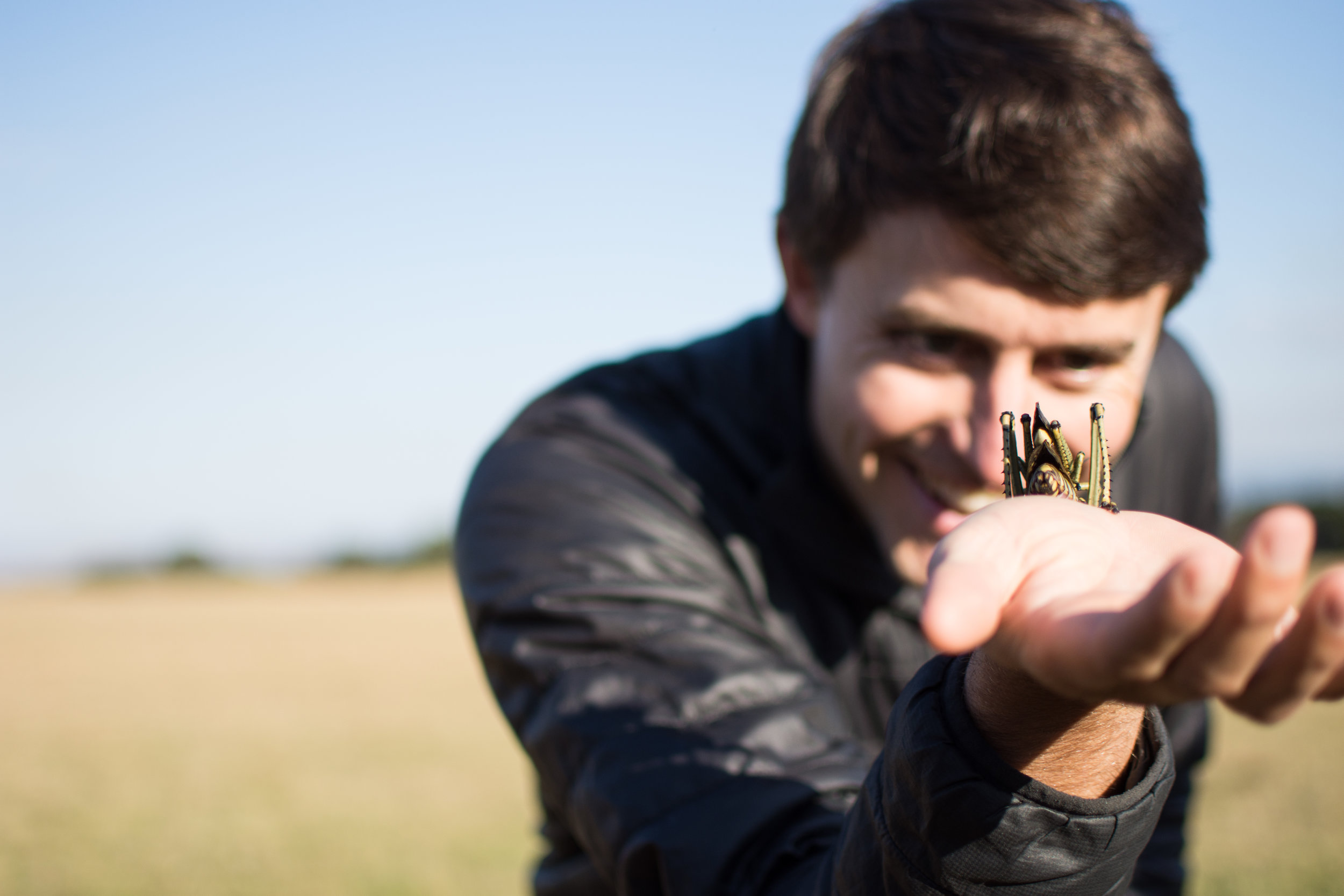
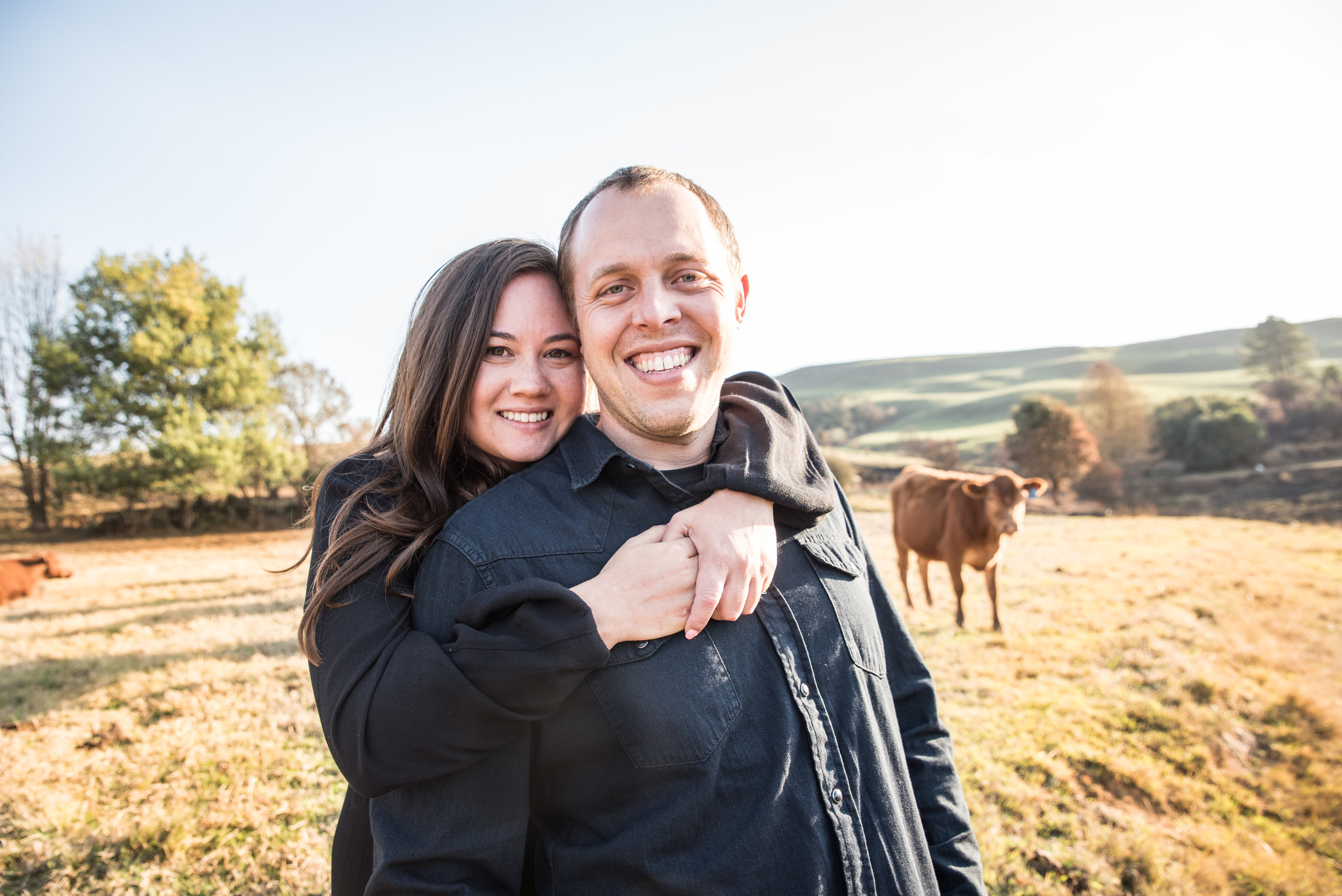
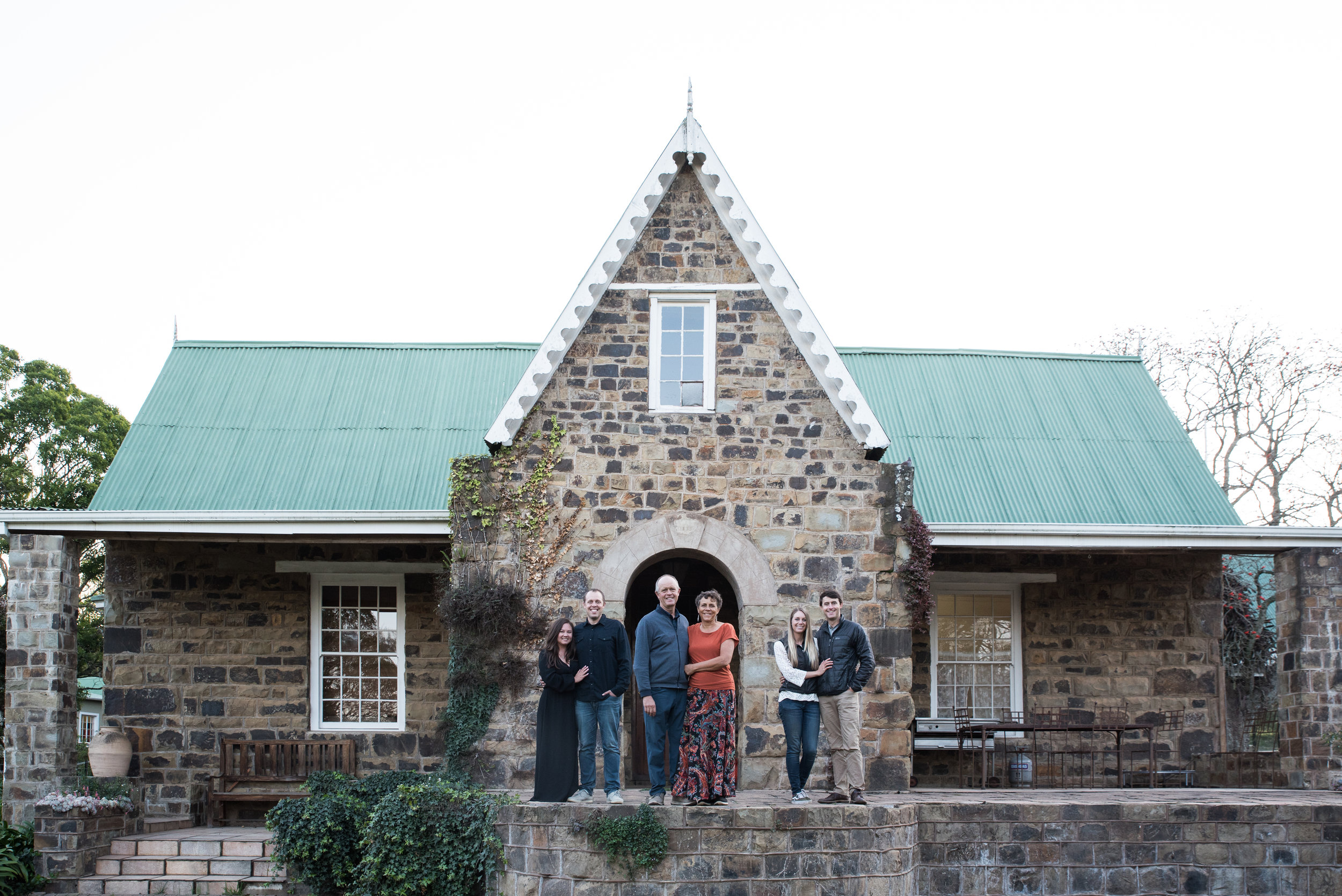
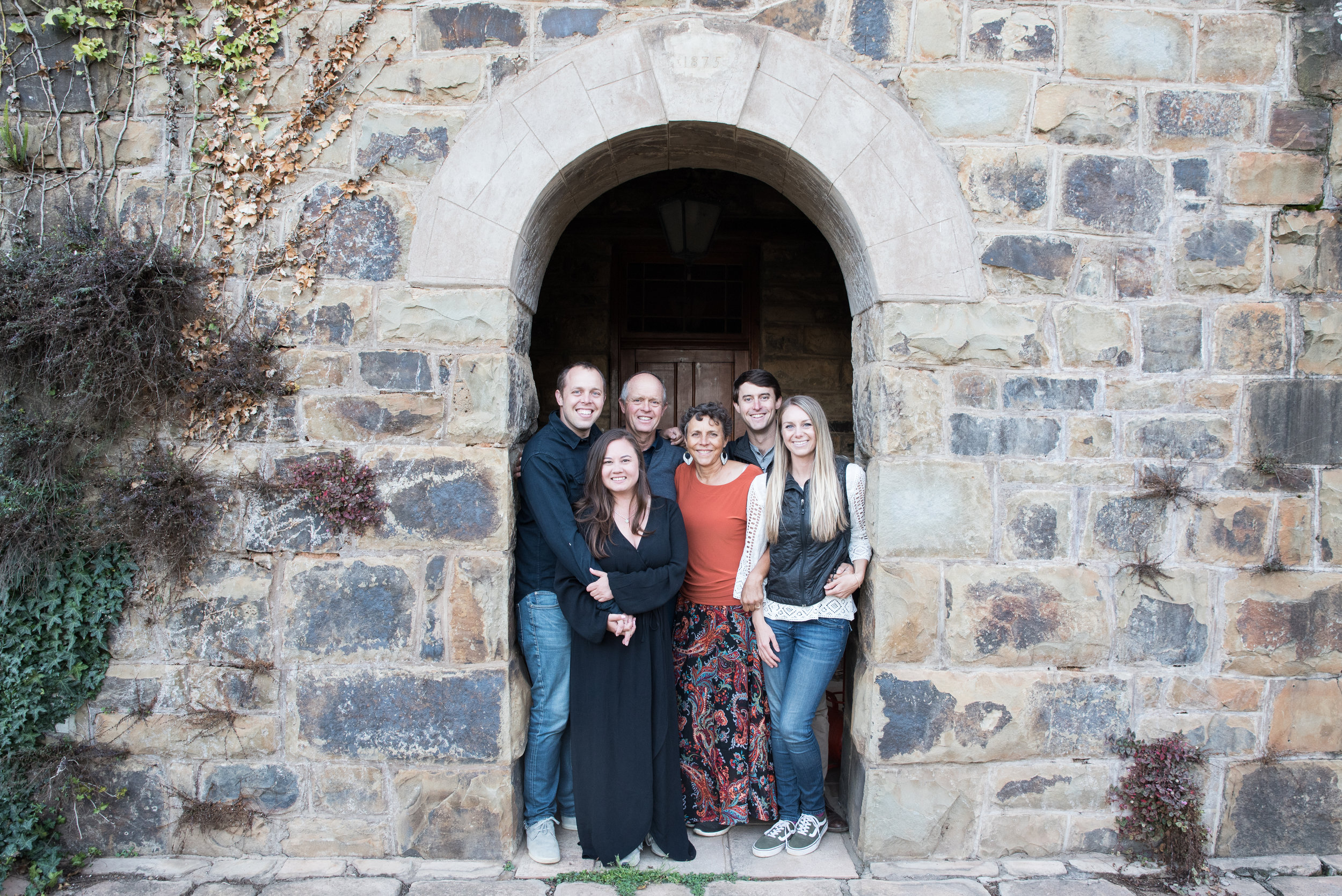
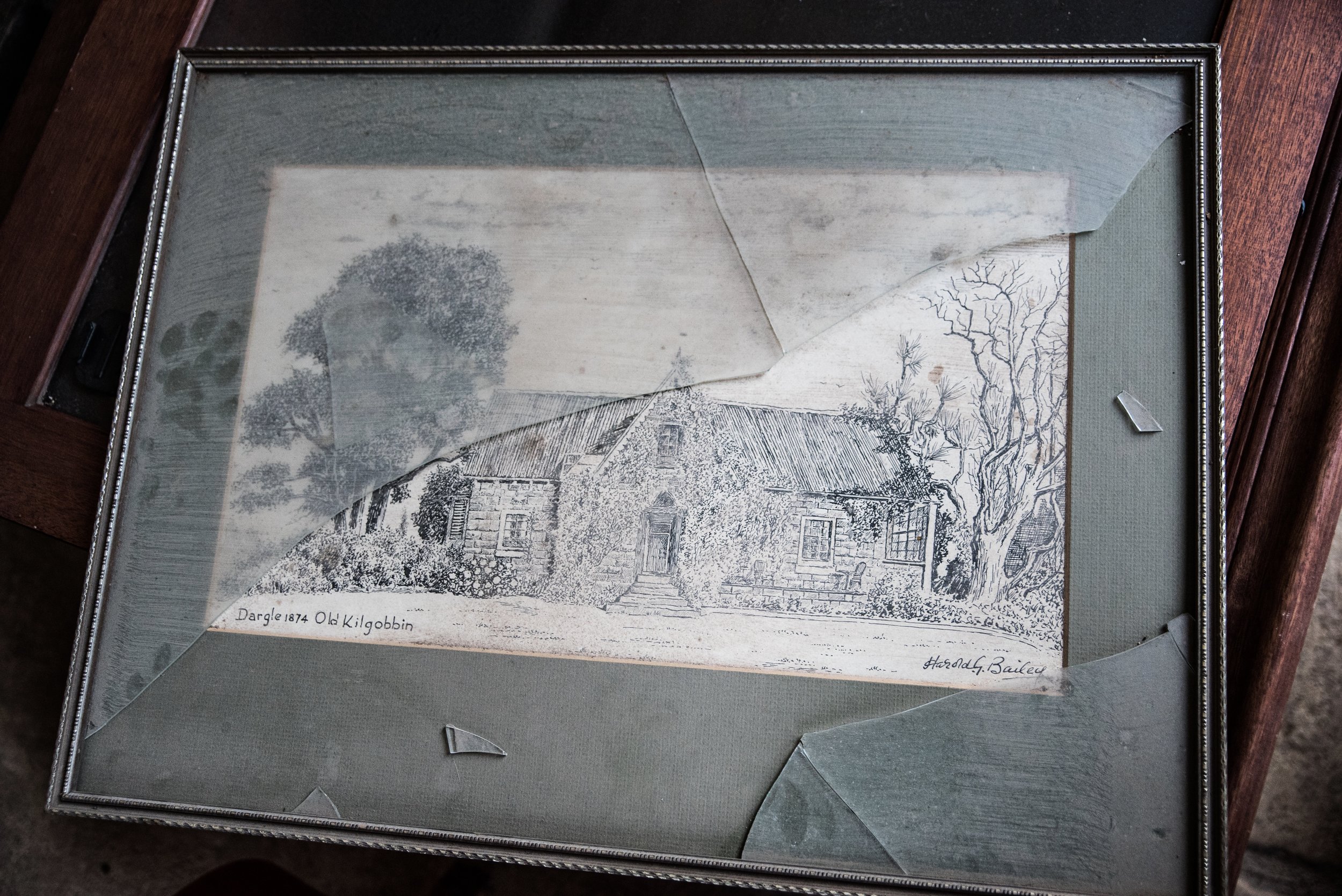
Other Stops along the Midlands Meander
Blueberry Cafe Brunch
Blueberry Cafe - This is a well known restaurant set on a hill overlooking the Midlands that serves high quality food and drinks and is totally Instagram worthy. In addition, they showcase and sell art, household items and foods made locally. We actually took home a hand-woven bathmat made by women from a local tribe.
The Platform - A modern shop in an old building along the train tracks that sources high quality goods and art from around South Africa.
Steampunk Coffee - This was our favorite little cafe in the area and is right next to The Platform and is definitely a local favorite. If you’re hungry, hop next door to the convenience store where you can order samosas (similar to an empanada), which are super tasty.
Piggly Wiggly - No, it’s not the same as the Piggly Wiggly in the US. This popular outdoor shopping center is an easy stop because it’s home to dozens of boutique shops, where you can find something for everyone - clothing, food, home goods, kids toys, etc.
karkloof safari villas & spa, kwazulu-natal
After a few days of really great family time, we were in need of some quality rest and relaxation so we drove about an hour east to the Karkloof Safari Villas and Spa. This luxury, five-star paradise is the perfect marriage of a high end wellness retreat and casual African safari. The villas are nothing short of stunning, full of elegant touches and 180 degree views. I literally sunk into the plush king bed and laid there for hours as I watched giraffe stroll just beyond our private deck towards the watering hole.
The communal areas are jut as gorgeous - they truly spared no expense to ensure a luxury experience. All meals are uniquely customized to meet specific dietary and allergy requirements; from gluten free to vegan, gourmet meals are prepared with the highest quality ingredients so you can eat clean even while on vacation (but that’s not a requirement… I enjoyed a diet of full carbs and calories during my stay!).
The drives are extremely relaxing through the gorgeous grounds because there are no predators like lion or cheetah, so even guided walks and picnics are encouraged. This probably isn’t the place you’ll want to go for your only safari experience, it’s much more low key than a Big 5 game park, but it’s just right when you want to unwind while still getting your safari on. There’s a morning game drive to a nearby waterfall and an afternoon game drive around the reserve, where we got up close with rhino, watched hippos play and drove alongside running ostriches and zebra.
Then to top it off, there’s the epic spa experience with various pools and authentic Thai massages, just what I needed after so much…. actually, I always need a massage so it doesn’t really matter what we were doing. I highly recommend that you book your massage in advance though because people travel all over just to come for the spa experience and the spots book up quickly. The massage I received was so incredible that I wanted another one, but the spa was all booked up for the next couple days unfortunately and I had to go without - so don’t make the same mistake I did and book more than one!
We only stayed one night and it was nowhere near enough time - I highly recommend 2-3 nights as it’s probably the most relaxing time you’ll get in South Africa without having to get up early for a drive or be rushed off to the next event - you can truly just sit and watch it all happen around you without ever leaving your room.
Springbok Lodge - nambiti reserve, kwazulu natal
Nambiti Reserve was the final game park on our trip, which we were really excited about because we kept meeting people that said it was one of their favorite parks in South Africa. But considering this was our 7th game park in 3 weeks, we weren’t expecting to be blown away - that would just be selfish… but we were totally spoiled by the animal viewing we experienced, saving some of our most memorable moments for last.
When we arrived, I wasn’t so sure about what to expect because the landscape was much drier than we had been seeing, more desert like. The Springbok Lodge itself isn’t all that spectacular to be honest, and when we arrived the pool was under construction and dining and sitting areas felt a bit outdated so there wasn’t much to write home about. If I were to go again (which I definitely would) I would stay at one of the other, high-end options on the Nambiti Reserve, but in this case we had family traveling with us so were being budget conscious.
The rooms are actually large, single unit tents - each with a large bed and separate bathroom and bathtub. Each unit also has its own outdoor shower… which felt not-so private, but just fine if you’re wearing your bathing-suit. They were spacious, clean and simple, the only negative I had was the bathtub as it was fairly hard to shower in it without getting water everywhere. So overall I was really happy with the rooms and so was everyone else.
The meals are served buffet style with a lot of options to choose from, which was generally simple and good - nothing over the top or fancy.
What really made the Nambiti Reserve so spectacular was the animal viewing. Of course there’s a lot of luck involved when going out on drives, but we had some of the most unreal animal encounters. In just two days we watched a pride of lions converge with two new male lions fighting for their place, we saw a group of elephants practice fighting and were just a few feet from angry hippos rising and falling from the water, aggressively shooing us away. Also, the sunsets here are unbelievable. There were definitely long stretches where we didn’t see much, but what we did see what really incredible. I would happily return here and highly recommend Nambiti as a stop along your journey.
drakensberg - royal natal national park
The final stop along our journey back towards Johannesburg was Royal Natal National Park amidst the Drakensberg mountains. We stayed at the Thendele Camp, which unfortunately, other than the stunning view, was pretty disappointing. What was once a really well rated and popular camp is now outdated, run down and not worth visiting. The beds were uncomfortable, it felt unclean and if I had any other options I would have found another place to stay. The views of the Drakensberg mountains are really beautiful, but not beautiful enough to make it worth staying here or going out of your way to visit in my opinion. Also, there’s a ton of baboons all around the camp which freaked me out a bit - just saying.
PS If you’re wanting even more info on some great South African safari parks, check out this guest post from The Boutique Adventurer - just click here!
